

w w w . r i s e n e n e r g y . c o m


OWNER : FirstSource Energy
India Private Limited
PLACE OF PUBLICATION : 95-C, Sampat Farms, 7th Cross Road, Bicholi Mardana Distt-Indore 452016, Madhya Pradesh, INDIA Tel. + 91 96441 22268 www.EQMagPro.com
EDITOR & CEO : ANAND GUPTA anand.gupta@EQmag.net
PUBLISHER : ANAND GUPTA
PRINTER : ANAND GUPTA
PUBLISHING COMPANY DIRECTORS: ANIL GUPTA

ANITA GUPTA
CONSULTING EDITOR : SURENDRA BAJPAI
HEAD SALES & MARKETING
MUKUL HARODE sales@EQmag.net
GRAPHICS & LAYOUT BY : RATNESH JOSHI
SUBSCRIPTIONS : RISHABH CHOUHAN admin@eqmag.net
Disclaimer,Limitations of Liability
While every efforts has been made to ensure the high quality and accuracy of EQ international and all our authors research articles with the greatest of care and attention ,we make no warranty concerning its content,and the magazine is provided on an>> as is <<basis.EQ international contains advertising and third –party contents.EQ International is not liable for any third- party content or error,omission or inaccuracy in any advertising material ,nor is it responsible for the availability of external web sites or their contents
The data and information presented in this magazine is provided for informational purpose only.neither EQ INTERNATINAL ,Its affiliates,Information providers nor content providers shall have any liability for investment decisions based up on or the results obtained from the information provided. Nothing contained in this magazine should be construed as a recommendation to buy or sale any securities. The facts and opinions stated in this magazine do not constitute an offer on the part of EQ International for the sale or purchase of any securities, nor any such offer intended or implied
Restriction on use
The material in this magazine is protected by international copyright and trademark laws. You may not modify,copy,reproduce,republish,post,transmit, or distribute any part of the magazine in any way.you may only use material for your personall,Non-Commercial use, provided you keep intact all copyright and other proprietary notices. want to use material for any non-personel,non commercial purpose,you need written permission from EQ International.
CONTENT
TECHNOLOGY
JOLYWOOD CONTINUES TO DEVELOP TOPCON TECHNOLOGY! JOLYWOOD SOLAR ENERGY ASSISTS IN THE CREATION OF A 100 BILLION PV INDUSTRY CLUSTER IN SHANXI

DECARBONISATION

MPHASIS PLEDGES TO BE CARBON NEUTRAL BY 2030

OPINION
INDIAN GOVERNMENT POLICIES FOSTERING RENEWABLE ENERGY
43
VOLUME 15 Issue 06
11 63 INTERNATIONAL
FUELING CHANGE: BIOFUELS - THE HOTTEST RENEWABLE ENERGY PURSUIT IN THE QUEST FOR A COOLER PLANET


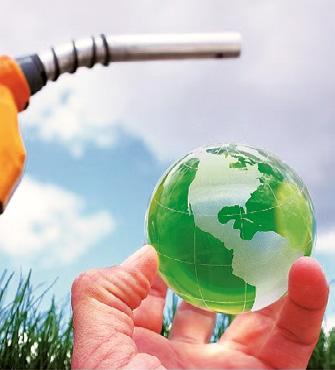
ENERMAN TECHNOLOGIES: ONE STOP SOLUTION FOR SOLAR ASSET PERFORMANCE MANAGEMENT (APM)




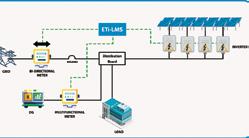
10 40 29 48 14 31 RENEWABLE ENERGY BUSINESS & FINANCE Pg. 11-75 EQ News INTERVIEW INTERVIEW BUSINESS & FINANCE TECHNOLOGY INDIA MR. RAJESH BC MS. JUHI MARWADI SERENTICA RENEWABLES SIGNS 1.25 GW ROUND-THE-CLOCK GREEN ENERGY AGREEMENTS NTPC GREEN ENERGY LTD. (NGEL) AND UTTAR PRADESH RAJYA VIDYUT UTPADAN NIGAM LIMITED (UPRVUNL) TIED UP TO COLLABORATE FOR DEVELOPMENT OF RENEWABLE ENERGY POWER PARKS AND PROJECTS
INDIA CAN REDUCE POLLUTION BY 40 PC BY NOT USING FOSSIL FUELS: GADKARI
Founded in 2005, JA Solar is a manufacturer of high-performance photovoltaic products. With 12 manufacturing bases and more than 20 branches around the world, the company’s business covers silicon wafers, cells, modules and photovoltaic power stations. JA Solar products are available in over 120 countries and regions.
























MR. RAJESH BC
CEO, Mahindra Teqo
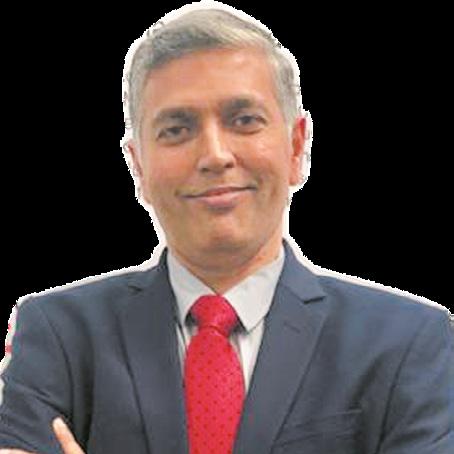
EQ: What are the major trends and developments shaping the solar industry today, and how is Mahindra Teqo adapting its strategies to stay ahead in this rapidly evolving landscape?

Rajesh: The base trends in the solar industry have remained consistent, however on a few dimensions the trajectories have changed, largely influenced by developments, around the upward movement of interest rates, relaxation of ALMM requirements, volatility in module prices, government intensifying efforts to meet the surging asking rates of GWp/ Year, to meet the net zero aspiration. They all culminate into creating a net positive environment for time-bound inclusive and responsible growth. Additionally, the demand for RTC power from the C&I sector and stakeholders co-creating blueprints to harness the potential of Green H2 towards decarbonization of industries, is setting up the sector for its next phase of growth. Mahindra Teqo plays a crucial role as an enabler for various stakeholders, helping them achieve their goals and contributing to India's and the global renewable energy aspirations. We closely align with our customers and stakeholders to understand their evolving expectations and help them succeed. The levers we continue to engage with are technology, analytics, collaboration and harnessing people's potential, along with a customer-first focus on HSE, ESG, plant performance, asset health, all while being a responsible stakeholder in the industry.
EQ: How has Mahindra Teqo performed in FY 23, in terms of growth, client acquisition, and the delivery of its specialised services? Can you share some key highlights or milestones that demonstrate Mahindra Teqo's success during this period?
Rajesh: In the Fiscal Year 2023, we experienced significant growth, reinforcing our position as the No. 1 company in the Solar O&M industry. Our portfolio expanded to over 7 GWp, This has been an outcome of strong customer & people focus, engaging technology, analytics and operational excellence to unlock value for our clients, while clearing their bandwidth, to focus on growing their portfolios. FY 23 was also a year where we introduced various value-added services, which had a direct bearing on plant performance. We were pleasantly surprised by the speed with which some of these services were explored, validated & adopted by our clients. This inspires us to continue experimenting and developing more value-packed services which are also directed towards a gradually ageing Solar asset base. We are grateful to our clients and partners for their continued confidence and trust in Mahindra Teqo.
EQ: There is a growing trend towards outsourcing O&M services to third-party providers. Can you explain why third-party O&M is often considered a better option than self-O&M for solar asset owners, and what are the key advantages it offers?
Rajesh: Indeed, outsourcing O&M to a credible service provider, is a compelling option for asset owners given the multitude of benefits it offers, starting with access to expertise, talented workforce, analytics support and cutting-edge technology. It offers asset owners velocity and mind share to focus on their business goals while ensuring accountability as most contracts are backed with guarantees on PRs, availability, scalability and flexibility in both directions depending on business requirements and technology adoption, all of this is achieved while maintaining cost competitiveness. This is validated by our experience and industry trends; more and more asset owners are opting for outsourcing to credible players. A few large developers who started off creating their captive O&M teams are revisiting their strategy and exploring outsourcing. Initially, O&M outsourcing started as EPC + O&M bundled contracts, emerging from the lens of mitigating risks for developers and asset owners. However, the current O&M scope and terms are slightly skewed on risk-reward, but the good part is that there is a collective awareness amongst the stakeholders to strike an equilibrium, as the synergy offers enormous value for asset owners.
8 EQ JUNE 2023 www.EQMagPro.com INTERVIEW
EQ: What are your views on the emerging DS sector and the role Mahindra Teqo is playing?
Rajesh: Distributed Solar (DS) has emerged as a high-growth sector. Thanks to all the stakeholders for maturing the business models & delivering value. Through my discussions, I see a high level of urgency amongst the stakeholders to fast-track their decarbonization journey while drawing the benefits of low energy costs. DS is also enabling the entire Renewable Energy and Decarbonisation sector to fast-track the adoption of different technologies, be it Round the Clock (RTC) requirements, integration of solar and wind power as well as future considerations for storage and creation of demand for small to mid-sized green H2 capacity. The sector's attractiveness stems from the flow of investments, quick decision-making, and the commitment of stakeholders to decarbonize. As Mahindra Teqo we are focused on growing our DS portfolio which also has a significant contribution from rooftop solar plants. Managing rooftop installations presents unique challenges compared to ground-mounted systems. With a DS portfolio of 0.5 GWp, we are elevating our capabilities to play a significant role as the leading provider of O&M, Software, and other Value-Added Services (VAS), for the stakeholders of this sector, including developers, investors, and EPC players.
EQ: What is your vision for the future of asset management in the solar industry, and how is Mahindra Teqo positioning itself to lead and drive this technology-enabled transformation?


Rajesh: At Mahindra Teqo, our vision is centred around creating delighted renewable asset owners and empowering them to maximise their returns. We envision a future where technology plays a pivotal role in asset management, enabling renewable asset owners to make data-driven decisions, maximise performance, and enhance returns. We believe in staying at the forefront of asset management by integrating technology and data analytics into our solutions. Additionally, by triangulating plant design, on-ground performance, and emerging technologies, we continue to develop, and test solutions, and services which can further unlock value both on performance and asset health. Although our vision is deeply rooted in a customer-centric approach and maximizing returns. We strive to grow & evolve as a Responsible asset management player. A performance+ approach, addressing some of the other sustainability objectives like gender equality, life on land, quality education, good health and well-being etc., which we can influence, and impact given our scale, presence, capabilities and intent. In a small way, directing the benefits of this massive unstoppable energy transition movement, to make the growth more inclusive for India and all its stakeholders.
EQ: As a key stakeholder of the RE sector, what are your views on the emerging landscape and some of the significant aspects that the stakeholders should focus on?
Rajesh: The landscape which is emerging is largely shaped & co-created by key stakeholders of the RE sector who are actively collaborating to meet the aspirations of India to achieve 500GW from non-fossil by 2030. They are opportunity heavy compared to challenges. The government, both at the central and state
levels, along with intermediaries, are taking the lead by facilitating large GW getting tendered and complemented by PSUs, investors and other private players actively participating. The recent MNRE memo highlighting a bidding trajectory of 50GW per annum is a reminder for shifting gears and gaining traction in this journey. The required focus towards RTC integrating various RE sources, along with storage is justified, given the stress RE electrons are generating on the grids given its intermittency nature. As I mentioned earlier, DS is another sector which is reaching scale and is driven by intense B2B partnerships. This sector is also showing urgency in exploring alternative de-carbonization technology leaning on RE. An exhilarating growth demand does pose challenges to all the stakeholders to significantly enhance their capabilities to deliver these outcomes in a just and responsible manner, more importantly not compromising on the quality of the growth. For example, under the extreme time pressures of delivering the project the plant & equipment design, its selection, workmanship, to sustain 30+ years of life & performance, should not get negotiated. In short, each stakeholder should be prepared for accelerated growth and in addition to economic value also deploy a Long-term lens while making decisions on aspects like plant & equipment design, technology, Quality standards, Environment, Community participation, social impact etc. By doing so, India and its stakeholders will continue to benefit from this energy transition over several decades.
EQ: What are your views on emerging decarbonization technology like green hydrogen, etc.?
Rajesh: When you synthesise the growth trajectory of India, its need for energy and the pressing need to decarbonize (Industries & Transport) along with a mature set of stakeholders and talent, India has the opportunity to be an early adopter leading the next level of transition beyond RE. Against the backdrop of policy support, growing RE supply, strong manufacturing capabilities & demand and flowing investments, decarbonization technologies like Green Hydrogen indeed have a lot of promise to offer. The environment which is slowly becoming more conducive given the preparedness of industries, technology upgrades both on the electrolyser end as well as the energy-consuming equipment’s end paves the way to initiate pilots. As the costs of electrolyser and renewable energy bends south, and lead times become more manageable, we will see large-scale adoption of these technologies. The extension of GH2 to GNH3 in the value chain is also attracting equal interest, due to its portability.
To conclude the building blocks for large-scale adoption of GH2 are getting created and India can leapfrog and emerge as a model nation for some of the other economies in this journey.
www.EQMagPro.com 9 EQ JUNE 2023
INTERVIEW
MS. JUHI MARWADI Director Pixon Green Energy

EQ: Please tell us about PIXON.
Juhi: PIXON is equipped with a state-of-the-art turnkey facility of 1 GW to manufacture high-quality Multi-Busbar modules with European technology. We also have a cleanroom environment facility of a 1GW manufacturing line for EVA films. PIXON is a firm believer in advancing with the market's recent innovations. With the addition of Multi-Busbar modules and Topcon, we are now one of the few Indian Manufacturers to provide M6, M10, and M12 Modules. PIXON is the Solar PV manufacturing arm of the Marwadi Group, a diversified organization in India, comprising several renowned successful initiatives like Marwadi University, One Finance etc. PIXON is a community of young talents and seasoned professionals who collaborate to carry out creative operations with sustainable innovations. The team stays open to new ideas to foster creativity in every aspect.
EQ: What’s your target or anticipated business for this FY for India?
Juhi: We are further expanding our manufacturing line from 1 GW in the upcoming years anticipating additional developments in the supply chain throughout India as a result of our upcoming Multi-Busbar and Topcon production lines.
EQ: What are your current product/technology/service offerings?
Juhi: PIXON products stand through their performance and quality. PIXON solar modules are robust and tested to withstand extremes of weather conditions. We are offering a wide range of Multi-busbar modules and polycrystalline modules. We also have a bandwidth capacity of up to 1 GW, for the manufacturing of EVA films. Our EVA films are PID-resistant with lower shrinkage and provide excellent durability and transparency. PIXON EVA sheets go through rigorous quality testing and verification. Hence, they are highly suitable for Multi-busbar Modules.
EQ: What are the product launch plans for this year?
Juhi: The company's recent expansion of its manufacturing line to a staggering 1 GW capacity, featuring MultiBusbar solar modules, marks a remarkable milestone in the industry. These modules leverage the latest advancements in solar cell technology, enhancing overall performance and power output. The introduction of M6, M10, and M12 modules, capable of generating up to 600 Wp with an efficiency rate of 21.20%, showcases PIXON's dedication to innovation and efficiency.
EQ: Tell us more about your own professional journey, key learnings, and key message from yourself.
Juhi: It all began with a vision to contribute to the global environment and sustainability. Global climate change is becoming a concern. And as the world started adhering to the solar revolution, it became a great opportunity to introduce solar modules into the lives of people. After deep research and analysis, we placed the founding stone of PIXON in 2019. In the following years, the company diversified its portfolio and become one of the premium solar panel manufacturers. With a vision to be a global leader in its segment, PIXON has already set landmarks and is consistently delivering efficient solar energy solutions to attain new heights. With a sophisticated portfolio, talented resources, and leadership, PIXON is on a path to creating enormous waves.
EQ: How much manufacturing capacity India has in terms of Solar Modules, Inverters, Cells, etc, and what’s your anticipation in capacity addition in 2023?

Juhi: The Indian government has implemented various initiatives to promote domestic manufacturing, such as the "Make in India" campaign and the Production-Linked Incentive (PLI) scheme. Currently, India’s solar module manufacturing capacity multi-folding every year, with several large manufacturing facilities established as well as expanding across the country. The manufacturing capacity for solar inverters and cells was also growing steadily, although specific figures were not readily available. Additionally, India has been importing a significant portion of its solar modules to meet the increasing demand. Our decision to expand the manufacturing line to 1 GW reflects the surging demand for renewable energy solutions worldwide. Governments, businesses, and individuals are embracing solar power as a sustainable and cost-effective energy source. PIXON's expansion is a timely response to this growing market demand, ensuring the availability of high-quality solar modules on a large scale.
EQ: How does export market out of India looks like to yourself for 2023 challenges for the company and industry?
Juhi: The future of renewable energy is forecasted to expand in coming years which is led by solar energy. The capacity of solar energy would be almost double in comparison to the present. The predictions about renewable energy in the future are expected to increase, solar energy will also grow extensively. In terms of exports, we place significant emphasis on expanding our presence in international markets. We recognize the importance of catering to the global demand for solar modules and supporting countries in their renewable energy goals. We strive to establish strategic partnerships and collaborations with distributors and installers in various regions to make our products accessible and affordable worldwide. We are dedicated to providing innovative solutions, such as our exclusive 1 GW array of multibusbar modules, which offer improved efficiency and performance. These advancements allow us to meet the specific requirements of different markets and maximize the value we offer to our customers.
10 EQ JUNE 2023 www.EQMagPro.com INTERVIEW
JOLYWOOD CONTINUES TO DEVELOP TOPCON TECHNOLOGY! JOLYWOOD


SOLAR ENERGY ASSISTS IN THE CREATION OF A 100 BILLION PV INDUSTRY CLUSTER IN SHANXI
Two highlights of the Jolywood TOPCon cell: High efficiency and Safety...
February 2021 - Shanxi Jolywood Solar Energy Cell Technology Co., Ltd. is a whollyowned subsidiary of Jolywood Corporation. The company has always adhered to the concept of advanced high-efficiency technology, and is committed to the development, manufacture and sales of N-type TOPCon bifacial cells.
In the words of President Zhao: "At present, the first 4GW of Shanxi Jolywood Solar's 16GW per year intelligent high-efficiency monocrystalline cell factory project has entered the mass production phase, while the subsequent 4GW and second 8GW projects are in progress and on schedule. Our company plans to complete overall construction in 2023, in order to accelerate the release of our high-efficiency cells and ensure large-scale mass production."

President Zhao described how Shanxi Jolywood Solar showcased three cell products at the exhibition: 0BB high-efficiency cells without main grid, 182-16BB08-SE monocrystalline bifacial n-type TOPCon cells (conversion efficiency ≥ 25.5%), and 182-16BB super high-efficiency monocrystalline bifacial n-type TOPCon cells (featuring a maximum conversion efficiency of 26.7%). At the same time, the above three cell products also feature good reliability, pleasing aesthetics, a bifacial rate ≥ 80%, a power temperature coefficient as low as -0.30%/°C, no photogenic attenuation, and excellent low light response performance.
"Jolywood is the only company to apply PVD technology to the production of TOPCon cells, and has developed its unique POPAID technology. The company’s TOPCon cell products can achieve a high degree of safety with no winding, as well as full edge isolation with no leakage. As a result, in addition to 'high efficiency', 'safety' is another highlight of Jolywood’s TOPCon cells".
Mr. Zhang Fulong, President of in-en.com and the Guoneng Energy Research Institute, presented Jolywood Sunwatt and Shanxi Jolywood Solar with the awards for "Best N-type Module Auxiliary Material Solution Supplier" and "Best n-type Module High Efficiency Cell Supplier". "This is another recognition and affirmation of Jolywood's outstanding capabilities.”

www.EQMagPro.com 11 EQ JUNE 2023
TECHNOLOGY
Zhang Fulong, President of in-en.com and the Guoneng Energy Research Institute, awarded Jolywood Sunwatt the prize for "Best N-type Module Auxiliary Material Solution Provider". Jolywood has always upheld its corporate philosophy of "low carbon, energy savings, and technological innovation", and is committed to developing high efficiency, low carbon, high quality, reliable products through n-type TOCPon technology. Jolywood is taking action to implement its green low-carbon plan, promoting global energy transformation through technological innovation, benefiting thousands of households, creating a green zero-carbon future, and continuously providing support for China’s peak carbon and carbon neutrality goals!
The "Wind-proof Module", which was officially announced at the Jolywood "Ultra High Efficiency, Ultra Low Carbon" Technology Summit, made its debut at the SNEC booth. This product is an important R&D achievement based on Jolywood J-TOPCon 2.0 technology, combining a number of advanced technologies such as the Wind-proof frame, 0BB busbar-free cell and ceramic backsheet. The Windproof module features a BACKBONE elastic cavity design, enhancing the buffering pressure of the frame, and further ensuring the module's load-bearing capacity under dynamic wind pressure, thus ensuring the device is not affected by complex wind pressure environments. Compared with traditional PV modules, Wind-proof modules feature 2.0 to 3.2mm front glass thickness + a 300um ceramic backsheet; this ensures good hardness with ultra-low carbon content, and compared with double-glass modules, power generation per watt can be increased by 1.29% and weight reduced by 10-20%. This decreases the risk of pressure on the roof and brings the product in line with the concept of a green, low-carbon lifestyle. Its outstanding product performances make the module suitable for a variety of applications - it is a true flagship product that can ensure high power generation and high yield to large ground power plants. It also meets the demands for low-carbon, aesthetically pleasing, and high-efficiency household electricity consumption.
Jolywood has been recognized by PVEL (PV Evolution Labs) as one of the world's "Best Performance" companies based on the outstanding reliability and performance of its products. PVEL is the world's leading independent PV module testing laboratory, which annually evaluates the reliability and performance of PV modules through stringent testing above IEC certification standards, and is the industry's key measure of long-term reliability and superior performance of PV modules. The stringent testing conditions mean that only a very small number of PV manufacturers can actually be awarded the "Best Performance" title, once more highlighting the outstanding characteristics of Jolywood modules.
Deepening the n-type technology range by developing TOPCon technology
The n-type technology came out in 2021, impressing everyone with its high conversion efficiency. This led to a change in cell technology development, which has now been largely accepted by the wider industry. With n-type solar cells becoming the focus of both industry experts and enterprises, Jolywood, as the global leader in n-type industrialization technology, is firmly developing TOPCon technology and continuing to lead the technological revolution. President Zhao described how Shanxi Jolywood Solar Energy has adopted the new generation of patented J-TOPCon 2.0 n-type high-efficiency solar cell technology and processes, a testament to the company’s technical strengths and R&D capabilities.

Within this product range, the 182-16BB ultra-high efficiency monocrystalline bifacial N-type TOPCon cell with a maximum laboratorytested conversion efficiency of 26.7% has set a new record after only half a year, surpassing its original record of 26.1% announced in November 2022. This makes the product an industry leader for N-type TOPCon cells. "As the cell technology most expected to replace PERC as the next generation mainstream specification, TOPCon's market share has gradually increased over the past two years and now represents more than 50% of N-type technologies. It is also the main target of many PV manufacturers' production line upgrades. As the leader in n-type TOPCon technology, Jolywood will continue to expand and deepen its technology offering, continuously moving new concepts from the laboratory into mass production, and guiding future development trends for global PV technology."

12 EQ JUNE 2023 www.EQMagPro.com TECHNOLOGY
TECHNOLOGY

Continue launching total solutions to contribute to the healthy and stable development of China's PV industry
When it comes to the future development prospects of PV cells and modules, Mr. Zhao pointed out that in recent years, enterprises in the industry have increased their investment in scientific and technological research and development, making continuous technological breakthroughs based on "cost reduction and efficiency enhancement". After years of development, continuous accumulation and innovation, the cost of photovoltaic power generation has been significantly reduced, and the objective conditions for grid parity are already in place. The development of PV cells and modules such as large silicon wafers, PERC+ and bifacial technologies will effectively improve the power and power generation efficiency of modules, while the continuous improvement of tracking bracket applications, operations and maintenance capabilities will reduce the cost of PV power generation systems. Grid parity and technological advances will boost the healthy development of the PV cell industry.
President Zhao said that, "in the future, Jolywood will uphold its original aspirations, focus on technical pain points, respond to customer demands, investigate the market in depth, continue to launch total solutions for the PV industry, set up an integrated system, and form efficient synergies for the entire industry chain. Jolywood will contribute to stable development of China's photovoltaic industry, and make contributions to achieving the country’s peak carbon and carbon neutrality goals!"
Jolywood Solar has recently been granted a patent for 0BB technology, while the research and development of busbar-free cell technology is being rapidly advanced. At present, modules based on crystalline silicon cells account for more than 80% of the global PV module market. The substrate of crystalline silicon cells consists of silicon wafers, and conventional cells are printed with multiple thin grid lines, known as ‘fingers’ (the raw material for which is silver paste) to collect the current generated by the silicon wafers after being exposed to light. They are also printed with 2-5 busbars to collect the current. With rapid developments within the industry, the "cost reduction and efficiency enhancement" of crystalline silicon cells has put forward even higher requirements. The cost of silver paste is currently second only to silicon in terms of total cell cost, which can account for as much as 15-25%. The large surface area covered by the busbars and fingers becomes a major constraint for power generation. This is exactly the reason why the 0BB cell technology without busbars was born. Based on the conventional cell, this technology removes the busbars and retains only the fingers (the thin grid lines), thus greatly reducing the use of silver paste, increasing the effective light area of the cell and improving the power generation efficiency of the PV module. In 2022, Jolywood Solar determined the main pain point of the industry, foresaw the market value of busbarfree cells, and took the lead in the research and development of 0BB technology. The 0BB technology patent obtained by Jolywood Solar is for a new type of conductive adhesive layer, which is used to solve the welding problem faced in the production of busbar-free cells and thin cells.
In the process of series or parallel connection of photovoltaic cells into modules, it is necessary to weld the welding strip on the cells to ensure electrical conductivity. This is traditionally done by a process of high temperature infrared welding. However, this method is not suitable for the welding of thin cells without busbars, since the risk of cell bending and fragmentation will be greatly increased by the high temperatures. In view of this, we have been exploring low-temperature welding technology for photovoltaic cells, and successfully applied for a patent for a new type of conductive adhesive layer (Patent No. ZL202221014302.0). By using a low-temperature curing conductive adhesive (500C-1500C), we are able to adhere the welding strip to the contact point of the cell in the lower temperature range, thus effectively reducing the proportion of bending, hidden cracks and broken cells. However, there still remains a difficult issue between the "incubation" of this special conductive adhesive material and the expected future mass production. How is this matter to be solved? The conductive adhesive of the special material is a fluid at room temperature, and after laying it on the cell and contacting the grid area, it needs to be heated for 5-10 minutes to cure, during which time the conductive adhesive tends to spread to the periphery of the cell, resulting in an inability to achieve precise welding between the tape and the grid area. In addition, this extra waiting time also prolongs the welding cycle of the cells and reduces their welding efficiency. In order to solve this issue, the whole team has been innovating and experimenting with the structure of the conductive bonding layer, and ultimately designed a new structure containing three different layers: the base material layer, the bonding layer and the conductive tape. The bonding layer is bonded to the finger area of the cell to wrap around the conductive tape with the main grid area of the cell, while the substrate layer is laminated on the upper surface of the bonding layer. The existence of the bonding layer means the conductive tape and the busbar area between the metal ions no longer damage the cell structure, while the conductive connection does not need to wait for the conductive adhesive curing time. Instead, the next process can be directly implemented, thus improving the efficiency of the conductive connection. The substrate layer is set up to greatly facilitate the finished product after factory reel storage, by means of cutting through the welding machine, gripping of the jaws and servo positioning. In this way, a precise lap of the conductive tape of this conductive adhesive layer is achieved, as well the grid lines of the main grid area of the cell. The development of this new conductive adhesive layer not only represents a breakthrough in lowtemperature welding, expected to solve the pain points of the traditional welding process for PV cells, but also will play an important role in reducing internal losses during the welding and encapsulation of cells, improving production yields and production efficiency. From a longer-term perspective, after the price of silicon drops to its lowest point, the compression of wafer production cost will become the key to PV cell cost reduction. This is especially significant for the industrialization of TOPCon, HJT and other high-efficiency cells. Reducing the use of silver paste and silicon wafer thinning will be the two main paths to reduce costs in the future. This breakthrough in patents shows that the key R&D processes for the 0BB products is advancing rapidly, which will better match the development needs of thin, busbarfree cells. At present, Jolywood is still updating its 0BB technology, implanting invisible tape and other advanced technologies, simplifying the technical process, promoting increased accuracy and reliability, and thus leading the industry to more precise production and boosting the development of the global PV industry.
www.EQMagPro.com 13 EQ JUNE 2023
ENERMAN TECHNOLOGIES: ONE STOP SOLUTION FOR SOLAR ASSET PERFORMANCE MANAGEMENT (APM)
EnerMAN is a leading provider of innovative, IoT based AI & ML driven, Energy Management solutions at affordable price to Renewable Energy Industry. EnerMAN Technologies is founded in 2019, with the vision to “Provide innovative digital products to manage energy and decarbonise the world”. EnerMAN is striving towards to achieve net zero goal by Providing AI & ML driven IoT based products to digitize Renewable Assets.

From data acquisition at the site equipment level, to analysis of data that provides meaningful insights to plant generation & health, EnerMAN provides end to end solution to digitize and manage your PV assets. EnerMAN provides end-to-end solution i.e Hardware, Firmware and Software systems that are developed inhouse by experienced team. We are proud to say that our products are Made in India products to cater to global market at an affordable price. Within the short span of its inception, EnerMAN has successfully deployed ETi-SOL® IoT SCADA Monitoring, Control and Analysis solution to 1.5GW+ (1,500MW+) of Solar PV plants and Rooftops, 500+ sites, in 7 countries. Few of the Solar PV industry leaders from prestigious Govt organizations with whom we are proud to associate with are BHEL, BEL, NTPC, HAL, MES, NFC, AIIMS, IISc, NLC & GSECL in India.Apart from this, our Wind-Solar Hybrid PPC (Power Plant Controller) solution implemented in some of the Wind-Solar Hybrid plants in Karnataka and our PPC was implemented on 350MW single largest plant in Kurnool, AP.
Our ever-increasing product portfolio proves that there is always demand for good product, which is reliable, easy to use with user friendly dashboards (GUI), timely & accurate alerts on breakdowns, and backed by quick customer service support from professional team. EnerMAN’s ETi series products help you acquire data from the equipment/sensor in the solar ¬PV plants / rooftops, process and store the data in the cloud/local server and present you with user friendly dashboards to monitor, control and analyse the performance. EnerMAN provides a wide range of solar PV monitoring and control management solutions which are required for digitizing Solar assets and efficient management of Solar assets with optimal performance.
ETi-SOL®: is a cloud-based software platform which acquires data from the field IoT devices for Monitoring, Controlling, Analysis and Reporting (DGR & others reports) of Solar PV plants / rooftops. It is the analytics engine which can be used to compare equipment /plant performance & do lots of trend analysis. It is also Centralized monitoring platform -Integrate multiple SCADA into single dashboard. User can monitor through mobile app, both, Android, and iOS.
ETi-SOL® Edge: For the customers who do not want to pay annual cloud server charges to view their plant data, EnerMAN has introduced ETi-SOL® Edge which is a local monitoring solution. One time investment to the system which does not require internet & cloud storage.
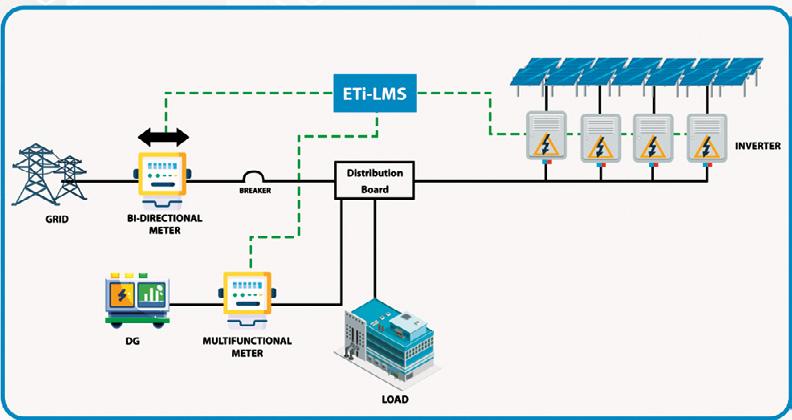
14 EQ JUNE 2023 www.EQMagPro.com TECHNOLOGY
ETi-PPC (Plant Power Controller): Power plant controller is a reliable and flexible solution that can control different parameters present in Solar PV plants to achieve Utility grid requirements at POI (Point of interconnection). PPC is a combination of Software Logic and Hardware which continuously monitor the healthiness of grid and automatically acts in case of any abnormality. EnerMAN’s Power Plant Controller (ETi PPC) is a control system that can manage active power, reactive power, and power factor from Solar Inverter (Solar Plant, Solar-Wind Hybrid Plants).
SOME OF THE ETI-PPC FEATURES ARE...

• Interactive dashboard for Solar Monitoring/Control
• Automatic/Manual Control Operations.
• Operations Scheduling.
• Active Power/Reactive Power/Power factor Control
ETi-LOG: is an IIoT Data logger, which collects the data through RS 485 (RTU/TCP) from PV plants' end equipment and sends data to Local PC/Servers or to the cloud Servers through RS485 (RTU/TCP) or RF or Wi-Fi. We will ensure that there is no data loss through local storage in our ETiLOG IoT datalogger during any communication issues due to internet failure at the plant.
TECHNOLOGY
ETi-SLDC: This software product can be installed in local PCs/ Servers to collect data from the Solar PV plant’s equipment and can send important processed clean data to SLDC in a few seconds as per SLDC guidelines.
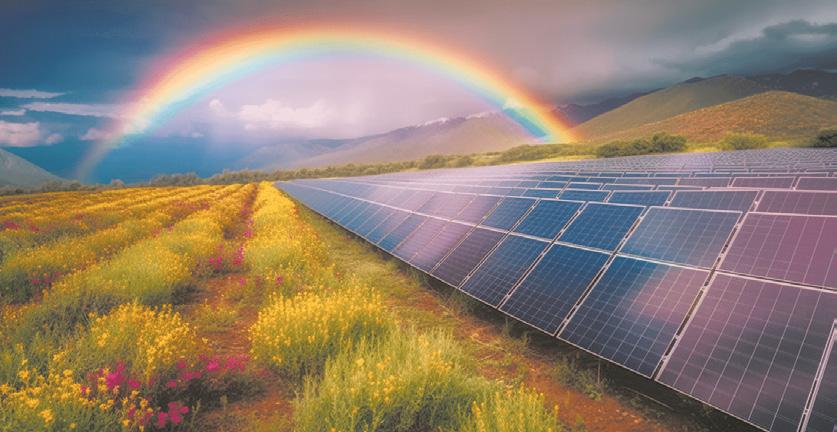
ETi-ZES: We have developed another software product, ETiZES, which will ensure Zero Export from Solar PV plants / Rooftops to Grid, as per DISCOM policy guidelines, to avoid penalty. This product collects the data from Solar PV plants' end-equipment and controls/limits the out-going power of Solar Inverters based on its load/consumption at factory/manufacturing unit.
ETi-LMS: Load Management System: We have developed yet another software product An IoT Solution for DG-Sync which is a universal Solution for all Inverter brands (Supports Heterogenous Make) Controls Active Power of Inverters.
ETi-CAST: Energy Generation & Forecasting solution which is a cloud-based forecasting tool for solar power plants.
ETi-SOL® Android/iOS App: Introducing the new mobile app version of our SCADA. Now the home page in the app is similar to web version i.e. all the plants in one with with its pirority status list. The much awaited in-app alert notification feature is now up and going. Both, Android and iOS are now available.
Author
ASHOK DM
Co-founder, CEO and MD EnerMAN Technologies Pvt. Ltd.
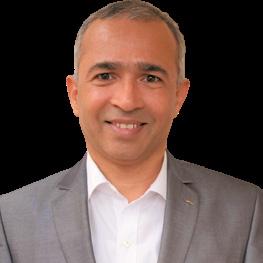
CLEANTECH SOLAR GROUP APPOINTS SACHIN JAIN AS CHIEF EXECUTIVE OFFICER

Cleantech Solar Group, a leading provider of renewable energy solutions to corporations in India and Southeast Asia, is pleased to announce the appointment of Mr. Sachin Jain as its Chief Executive Officer (CEO), with effect from 23rd June, 2023. Sachin will be taking over from Mr. Raju Shukla, who founded the company in 2015 and has been serving as its CEO since. Raju will continue to serve as Advisor to facilitate a smooth transition.

Headquartered in Singapore, Cleantech Solar has approximately 1GWp of solar and wind projects in operation, construction and development stages across India, Singapore, Cambodia, Indonesia, Malaysia, Thailand and Vietnam. Sachin brings a wealth of clean energy domain knowledge and skills to Cleantech Solar. His experience across consulting, entrepreneurship and business leadership roles spans over two decades, including over 13 years in the renewable energy sector. His previous roles include Head of Clean Energy for India and the Global CoLead for Solar Energy at Boston Consulting Group (BCG), CoFounder and CEO at Oriano Clean Energy, and Head of Strategy at Mahindra’s renewable IPP platform (Susten). Sachin is passionate about driving industries towards their clean energy and decarbonisation goals and is excited about the potential of new exponential technologies enabling sustainable energy transition. He holds an MBA from the University of Cambridge, UK, as a Tata Scholar, an MS from Ohio University, US, and a Bachelor of Engineering degree from University of Mumbai.
Mr. Raju Shukla, Founder of Cleantech Solar, said: “I am glad to pass the baton to Sachin Jain, who will lead the Group in its next phase of growth. I am confident that Sachin's wealth of leadership experience in the
renewable energy space will benefit Cleantech Solar as the company continues its journey as a leading green energy provider in the Commercial & Industrial (C&I) sector in India and Southeast Asia region. It has been a pleasure to see Cleantech Solar grow rapidly and I am grateful to the team for their valuable contributions over the years. I wish Sachin and the entire team the very best for this exciting new chapter and look forward to continue providing my support and guidance as Advisor.”
Mr. Sachin Jain, CEO of Cleantech Solar, said: “I would like to express our appreciation to Raju for his contributions to Cleantech Solar over the years. Under his leadership, Cleantech Solar has grown to become one of the leading renewable C&I platforms across India and Southeast Asia, and I am thrilled to be leading Cleantech Solar for its new growth phase. I believe Cleantech Solar is uniquely placed to leverage the multitude of opportunities this industry has to offer through its vast and in-depth knowledge of the region, strong financing capabilities, top-tier clientele, and qualified, experienced teams across markets. I look forward to building on the culture of excellence that has made Cleantech Solar the preferred renewable energy partner for the world’s leading corporates.”
NTPC GROUP INSTALLED CAPACITY CROSSES


73000 MW

India's leading integrated power producer, NTPC’s Group installed capacity touches 73024 MW. This achievement comes in the backdrop of the commissioning of Unit-2 of 660 MW capacity of Stage-I (3 x 660 MW) of Barh Super Thermal Power Project in Bihar.
This accomplishment reinforces NTPC's commitment to delivering reliable and affordable power to the Nation. With this, the installed capacity of NTPC Limited and NTPC Group has become 57038 MW and 73024 MW respectively. Further, the company is committed to achieve 60,000 MW of Renewable Energy capacity by year 2032. NTPC Ltd. is India's largest integrated power utility, contributing 1/4th of the power requirement of the country. With a diverse portfolio of thermal, hydro, solar, and wind power plants, NTPC is dedicated to delivering reliable, affordable, and sustainable electricity to the Nation. The company is committed to adopting best practices, fostering innovation, and embracing clean energy technologies for a greener future.

16 EQ JUNE 2023 www.EQMagPro.com FEATURED
MULTI AWARD WINNER SOLIS CEMENTS ITS POSITION AS 3RD LARGEST GLOBAL INVERTER MANUFACTURER
INDEPENDENT INDUSTRY TRACKER RANKS SOLIS AS WORLD NUMBER 3, BY SHIPPED MW, FOR SECOND YEAR RUNNING.
Ginlong(Solis) Technologies (the company), one of the most experienced inverter producers in the world, has been ranked the world’s 3rd largest inverter manufacturer for the second consecutive year.


This latest success builds on a string of awards and accolades for Solis over the last 18 months. Only last week the company was presented the “top inverter brand 2023” seal for Belgium by respected global market research organisation, EUPD; having recently gained the same seal for the Netherlands and South Africa. This marks the eighth year running in which Solis has been recognised by EUPD, based 100,000 interviews across more than 50 countries.
Reflecting on the company’s performance in 2022 and beyond, Sandy Woodward, Solis General Manager Europe and South Africa, said: “I am delighted that Solis has been ranked so highly for another year, and that we have maintained our postion as the world’s third largest inverter manufacturer. I’m particularly proud of our progress during 2022 in the energy storage inverter segment, in which Solis achieved year-on year growth of more than 500 percent; accounting for 18 percent of our total operating revenue. “This remarkable expansion can be attributed first and foremost to our dedicated team of more than 4500 people across all the major continents, but also to our high brand recognition, strong channel competitiveness and deep commitment to R&D.”

In 2022, the company's R&D expenditure increased significantly by 74 percent, reaching a total investment of USD 45 million. Solis currently boasts an annual production capacity of 40GW, which is scheduled to double to 80GW in July 2023.

FEATURED
SERENTICA RENEWABLES TIES UP PARTNER CONTRACTS WORTH INR 10,000 CR FOR ITS PHASE 1 RENEWABLE ENERGY PROJECTS
In a massive boost to the renewable energy (RE) sector in the country, Serentica Renewables (“Serentica” or the “Company”) - a renewable energy platform enabling industrial decarbonisation, announced successful placement of contracts worth INR 10,000 crore for its upcoming renewable energy projects. The contracts placed upon leading renewable energy solution providers will enable Serentica to develop 1.5 GW of RE capacity in the country. Serentica is setting up solar and wind capacities across the states of Karnataka, Maharashtra, Andhra Pradesh, and Rajasthan where it has secured connectivity to the inter-state transmission system (ISTS). For its wind projects coming up in Maharashtra and Karnataka, Serentica has tied up with leading wind players like Suzlon, Siemens Gamesa, and Envision while the modules for its solar projects in Rajasthan and Maharashtra will be supplied by global solar leaders like Jinko Solar and Trina Solar. The EPC (Engineering Procurement and Construction) for the projects will be executed by Suzlon, Sterling & Wilson, Amara Raja Power Systems, EverRenew, and Rays Power. The projects are scheduled to be commissioned by FY 2024-25.
Commenting on the milestone, Pratik Agarwal, Director, Serentica Renewables, said, “We are excited to join forces with some of the leading renewable energy players in the country to take forward our mission of industrial decarbonisation. In our endeavour to build world-class assets for our customers, these partnerships are a huge step forward. We look forward to working with the industry veterans and with their support, march ahead in our vision of reversing climate change and creating a greener tomorrow.”

Serentica is focused on industrial decarbonization and aims to provide assured, renewable energy through a combination of solar, wind, energy storage, and balancing solutions. Serentica’s vision is to supply over 40 billion units of clean energy annually in the medium term and displace 37 million tonnes of CO2 emissions. To fuel its growth commitments, Serentica signed definitive agreements with leading global investor KKR in November 2022. KKR’s total $650 million commitment to the company, which includes the latest $250 million investment deal, represents one of the largest decarbonization investments in India to date.

MR. INDU SHEKHAR CHATURVEDI APPOINTED AS DIRECTOR GENERAL OF ELECTRIC POWER TRANSMISSION ASSOCIATION (EPTA)



The Electric Power Transmission Association (EPTA), an association consisting of leading private electricity transmission developers, industry stakeholders, and experts in electricity transmission, announced the appointment of Mr. Indu Shekhar Chaturvedi to the position of Director General.
In his role, Mr. Chaturvedi will be responsible for leading EPTA's efforts to promote the development of a robust, reliable, and vibrant transmission sector. Mr. I.S. Chaturvedi is a former Indian Administrative Service (IAS) officer with a distinguished career of 35 years, having served in various high-ranking positions within the government. He has held the position of Secretary, Ministry of New & Renewable Energy (MNRE) and has made significant contributions as Additional Chief Secretary Forest & Environment, Government of Jharkhand. He has also worked with the erstwhile Planning Commission, Prime Minister's Office, and International Monetary Fund, at Washington DC. Mr. Chaturvedi is an alumnus of IIT-Kanpur and Kennedy School, Harvard University, US.
Mr. Indu Shekhar Chaturvedi, DG, EPTA said, “Power Transmission is central to India’s ambitious dream of 500GW of renewables by 2030. As DG – EPTA, I look forward to helping shape the transmission agenda, thus contributing to the achievement of India's energy transition plans in a timely and cost-efficient manner”
Electric Power Transmission Association (“EPTA”) is an association registered in 2012 and consists of leading private electricity transmission developers, industry stakeholders, and experts in electricity transmission. EPTA’s members operate and maintain various inter-state and intra-state transmission systems across the nation. It is the objective of EPTA to safeguard the interests of transmission companies operating in India and to provide a platform for such companies to raise their concerns, hold discussions, and further the goal of reliable transmission of electricity throughout the nation.
18 EQ JUNE 2023 www.EQMagPro.com FEATURED
Partners with leading renewable energy solutions providers like Suzlon, Siemens Gamesa, Jinko Solar, Amara Raja et al
SOLAX POWER SUCCESSFULLY HOSTED GLOBAL PARTNER SUMMIT 2023
From May 27-28, SolaX Power,a renowned player in the photovoltaic industry, successfully hosted its highly anticipated Global Partner Summit 2023 in Tonglu, Hangzhou. More than 150 distinguished guests from over 30 countries joined SolaX Power in sharing achievements and discussing the future of solar energy.Many important partners of SolaX in India werealso invited to this grand event and receivedGlobalGolden Partner Award and Global Pioneer Partner Award.
Established in 2012,SolaX has become a leading provider of solar inverters and energy storage solutions.Over the years, SolaX has been committed to technological innovation and product quality, contributing significantly to renewable energy development worldwide. With a solid reputation, its products have been widely adopted in over 80 countries and regions globally. SolaX Power Global Partner Summit 2023 featured high-level keynote speeches and seminars, sharing the latest industry trends and frontier technologies to inspire innovation and collaboration. Moreover, it also encompassed various impressiveactivities. Factory tours providedSolaX’s partners with an up-close understanding of SolaX’s production processes, quality control systems, and ongoing research and innovation. The brand-new exhibition hall showcasesSolaX’s complete product line-up and diverse application scenarios,featuring a VR zone that allowed guests to explore different possibilities.
To express gratitude toits esteemed partners, SolaXprepared an elaborate gala dinner, providing a relaxed and enjoyable social platform. The Chinese-style performance specially prepared for international guests received high praise. Furthermore, a full-day tour of Hangzhou allowed first-time visitors to China to appreciate its splendid natural scenery, leaving a lasting impression. This event proved to be a fruitful experience for all participants. Global partners gained insight into the strength of SolaX’s solar inverter technology and its value in partnerships, while SolaX obtained valuable knowledge of its partners’ needs and expectations through direct interactions. Looking ahead, SolaX Power will continue to focus on technological innovation and product optimization, with a dedication to providing customers with reliable, efficient, and intelligent solutions. Furthermore, SolaX will strengthen its collaboration with its global partners and build an open and win-winpartnership.SolaX is poised to contribute to a brighter and cleaner future for the global energy landscape.
SUNGROW SIGNS CELESTIAL RENEWEXPERTS AS ITS DISTRIBUTOR IN DIFFERENT STATES OF SOUTH INDIA
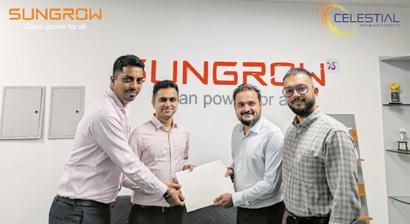
Sungrow is excited to announce the signing of its new distribution agreement with their existing and reliable channel partner, M/s Celestial Renewexperts LLP extending its footprints in the states of Karnataka, Andhra Pradesh and Telangana. This agreement will allow Celestial Renewexperts to distribute Sungrow ‘s best in class PV Inverters in the aforesaid regions of southern parts of India from now onwards.
Sungrow & Celestial share the same goal of accelerating the energy transition and climate action at scale.
With the unwavering dedication to excellence and a strong track record of delivering top-notch products and services, Sungrow has become synonymous with reliability and efficiency in the solar energy industry. With Celestial Renewexperts, one of the leading PV distribution companies in the country & known for its competitive approach and unmatched service support to the customers, deeper market penetration will be possible. Sungrow is poised to deliver a wide range of distributed applications with a comprehensive product portfolio covering product verticals within commercial & industrial, residential and hybrid inverters through this extended partnership in the region concerned.

www.EQMagPro.com 19 EQ JUNE 2023
FEATURED
SINENG ELECTRIC'S CENTRAL INVERTERS OBTAIN CERTIFICATE FROM CSA GROUP FOR COMPLIANCE WITH UL 1741 AND IEEE 1547


Sineng Electric, a pioneering force in the renewable energy industry, proudly proclaims its most recent accomplishment in dedication to achieving greatness. The EP-3750-HAN-UD and EP-3600-HAN-UD central inverters have obtained the certificate of compliance from the CSA Group, confirming their adherence to UL 1741 and IEEE 1547 requirements. It signifies Sineng Electric’s resolve on entering the North America market while expanding its global reach.
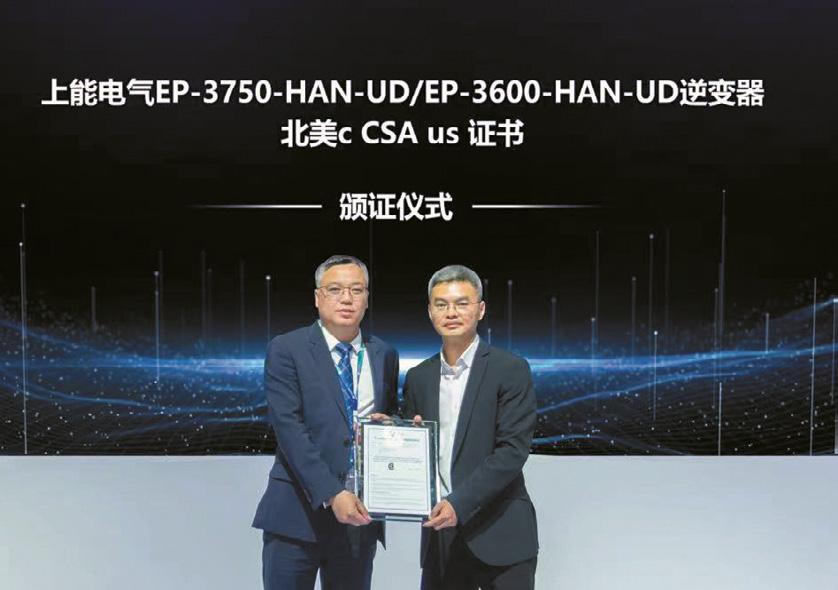
Driven by factors like supportive policies, technological development, and growing interest from investors, the photovoltaics (PV) market in the United States is experiencing rapid growth. The utility-scale PV sector, in particular, has witnessed a surge in installations, significantly diversifying the local energy sources. To meet the demanding standards of utility solar power stations, Sineng Electric's EP-3600-HAN-UD/EP-3750-HANUD inverters have been specifically designed to offer optimal efficiency, exceptional adaptability, lower LCOE and enhanced safety. As a result, they are applicable to a variety of application scenarios.
Having received cCSAus certificate for both central inverters and string PCS also showcases the tremendous potential of Sineng’s solar-plus-storage solutions in the region's clean energy landscape. Furthermore, it strengthens Sineng's ambitious endeavors to expand its global footprint while amplifying the brand's influence. Sineng Electric's commitment to product quality, customer satisfaction, and sustainable practices is further underscored by the endorsement of the certificate. Drawing on a wealth of notable achievements across the Asia-Pacific, Middle East, South America, and Europe, Sineng is now poised to embark on an exciting new chapter in North America.
We remain determined in our mission to foster a green future and the cCSAus certificate represents a significant leap towards realizing this goal, declared Jianfei Li, Vice President of Sineng Electric. "This recognition validates our continuous efforts in trailblazing, building a different world with our innovative product portfolio."
20 EQ JUNE 2023 www.EQMagPro.com FEATURED
AMP ENERGY INDIA IS NOW AMPIN ENERGY TRANSITION, UNVEILS NEW LOGO
Amp Energy India, a leading energy transition platform and India's first truly balanced Renewable Energy IPP with a total portfolio of 3GW+ spread across 17 states in the country, is thrilled to announce its rebranding as Ampin Energy Transition Private Limited. The new identity reflects the company's commitment to accelerating the transition to renewable energy sources and its vision for a sustainable future. Ampin Energy Transition is poised to redefine the renewable energy landscape in India with its innovative and sustainable solutions.
As part of the rebranding, Ampin Energy Transition also unveiled a new logo that embodies its renewed focus and dedication to clean energy transition. The logo concept is around delivering Amperes of electricity in India using infinite renewable/green energypowered by harnessing solar, wind and storage etc.The twin logos; midnight blue background logo and white background logos demonstrate Ampin’s ability to deliver renewable energy through night and day. Ampin Energy has adopted a new tagline: "Powering Renewable Energy Transition." This tagline encapsulates the company's mission to enable the renewable energy transition of its customers across India and thus contribute to India’s energy transition.
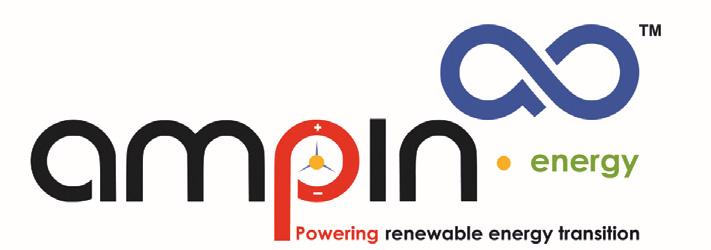
The new identity is in line with the evolution of our company as an independent entity run by an industry leading team of professionals & backed by institutional and strategic investors from across the world to emerge as the leading transition platform in India in accordance with government’s aim to achieve 500GW by 2030.With this transition, we reinforce our position to take all our customers to 100% RE while helping them save considerably on their operating costs. Mr. Pinaki Bhattacharyya, Founder, MD and CEO Ampin Energy Transition said.



Ampin Energy Transition will continue its mission to develop, operate, and manage world-class renewable energy projects across India. The company's expertise spans various technologies, including solar, wind, hybrids, and energy storage, with a focus on delivering reliable and cost-effective renewable energy solutions to businesses, communities, and governments.

www.EQMagPro.com 21 EQ JUNE 2023 FEATURED
BUSINESS & FINANCE
ENVISION BAGS ORDER FROM SERENTICA RENEWABLES FOR SUPPLY AND COMMISSIONING OF WIND TURBINES OF 350 MW CAPACITY
• Envision will supply a total of 106 nos. EN156/3.3 MW




• Serentica’s wind park, once commissioned, will produce 1.25 billion units of clean energy and avoid the emission of 1.06 million ton of CO2 annually.
• The project is scheduled for commissioning by December 2024.
Envision Energy, a global leader in renewable energy solutions has won an order from Serentica Renewables - a decarbonization platform that seeks to accelerate the energy transition for energy-intensive industries, for the supply and commissioning of wind turbine generators for the 350 MW wind park coming up in Maharashtra. 106 units of. Envision’s state-of-the-art EN156/3.3 wind turbine generators, with a rotor diameter of 156m, a hub height of 140m and a rated capacity of 3.3 MW, will be installed at the wind park. These turbines have a proven track record in China and Vietnam and are most optimally designed for the wind regime prevalent in India.

The 350MW wind park forms a crucial part of Serentica’s overall 4000MW renewable energy capacity that will aid clean energy delivery to large-scale, hard to abate industrial customers. The project, which is expected to be commissioned by December 2024, will produce 1.25 billion units of clean energy annually and displace 1.06 million ton of CO2 emission, significantly contributing to India’s decarbonisation goals.
Mr. RPV Prasad, CEO, Envision Wind Power Technologies India said, "We are delighted to partner with Serentica Renewables in building this prestigious wind power in Maharashtra. Nacelles and hubs for the wind turbines will be assembled at Pune, blades at the plants located at Trichy or Bengaluru and towers sourced from manufactures based in Maharashtra.”

Mr. Akshay Hiranandani, CEO, Serentica Renewables, said, “We are happy to partner with Envision on this landmark renewable energy project. This project is a critical step in fasttracking our industrial decarbonisation efforts and a major investment in the future of our planet and our economy. We are confident that Envision will be a valuable partner for Serentica for its growth ambitions as well.”
Mr. Kane Xu, Global Vice President of Envision Energy and Chairman of Envision Energy India, said, “The climate crisis recognizes no international borders, and it can only be solved when all parties work together in common purpose. Serentica Renewables provides round-the-clock renewable energy enabling the transition of large-scale, energy-intensive industries to clean energy. Envision is both a builder of a new green energy system and an enabler of a new green industrial system. We are very delighted to cooperate with Serentica Renewables, providing highly reliable renewable solutions in India.”

22 EQ JUNE 2023 www.EQMagPro.com
Wind Turbine Generators (WTGs).
BUSINESS & FINANCE
HPX CROSSES 5 BILLION UNITS OF TRADE WITHIN 11 MONTHS OF LAUNCH

• HPX crossed 1 BUs mark in 171 days and took just another 173 days for the next 4 BUs. • HPX has achieved this milestone within 11 months of its commencement of operations.
Hindustan Power Exchange Ltd. (HPX), India’s fastest & most advanced power exchange has successfully crossed the milestone of 5 Billion Units of power traded within 11 months of its launch. HPX was able to cross this landmark with a rapid increase in trade volume across Contingency and Long Duration Contracts (LDC) segments. The strong growth in members/client base and trading volumes demonstrate the trust and support the platform has been able to garner from power sector participants. HPX raced to 5 BUs within a span of 173 days with a daily average volume of ~18 MU, post-crossing the historic landmark of 1 BU, which happened within a time frame of 171 days. A large part of this volume is attributed to the LDCs which were introduced on the HPX platform in the month of February. HPX successfully executed the very first Electronic Reverse Auction (e-RA) contract for the Indian Railways that witnessed encouraging participation from generators. Since then 75 e-RA tenders have been floated on HPX with a successful contract award in 16 such contracts, indicating a success ratio of ~21.3% as against an industry average of ~10%.
With over 550 market participants now onboarded, HPX now has almost all the major players across the country on its platform and is poised for an increased market presence in the coming months. Backed by the latest technology and a series of innovative features, the fastest power exchange of India promises to offer speed, transparency, and better price discovery in the execution of trades. HPX garnered a market share of ~35% in April, in the Term Ahead Market (TAM) segment.
The exchange is presently offering trades in all segments of Collective and Continuous transactions including but not limited to Contingency & Green Contingency contracts, Intra-day, Weekly, Monthly, and Any-day contracts in the Term Ahead Market (TAM) along with e-RA based Long Duration contracts for up to 90 days. The exchange offers trading in Renewable Energy Certificates (REC) and ESCerts (Energy Saving Certificates) contracts. The Day Ahead Market (DAM), Green Day Ahead Market (G-DAM) & Real Time Market (RTM) are also live at HPX.
HPX is a new-age power exchange promoted by PTC India, BSE and ICICI Bank and has a diverse shareholder base represented by state power utilities, central generators, independent power producers, market makers in trading, and power sector consultants.
SAATVIK INITIATES PVEL’S PRODUCT QUALIFICATION PROGRAM FOR INDEPENDENT TESTING OF SOLAR PV MODULES


Saatvik, a leading Indian brand engaged in the manufacturing of premium quality solar photovoltaic (PV) modules, has recently contracted with PV Evolution Labs (PVEL) to participate in their Product Qualification Program (PQP), a suite of independent performance and reliability tests for PV modules. PVEL performs long-term reliability testing, with data and results made accessible to downstream solar developers, asset owners, and financiers.
Downstream solar buyers worldwide will be able to access Saatvik module testing reports as they become available PVEL’s online platform. PVEL shares testing reports with the global module purchasing community, providing buyers and power plant investors with independent and actionable reliability and performance data that allows them to make intelligent procurement decisions.
Mr. Prashant Mathur C.E.O Saatvik stated that opting for the PVEL PQP program will surely help the brand establish a global footprint and boost sales across markets enhancing brand visibility at global level.
Independent testing not only allows manufacturers to showcase how well their products can perform under various conditions, but also helps to differentiate model types in a crowded market,” said Tristan Erion-Lorico, VP of Sales and Marketing at PVEL. “We look forward to working with Saatvik in completing the PVEL PQP, and updating our global network of PV equipment buyers and investors with these results.

BUSINESS & FINANCE

DEAL ANNOUNCEMENT: GIC ANNOUNCES USD 2 BILLION SMART METER PLATFORM WITH GENUS POWER


Resolüt Partners, a Mumbai-based law firm that specializes in complex cross-border PE/M&A transactions has advised GIC Singapore (“GIC”) on the set-up of its USD 2 billion (INR 16,000 cr) majority owned smart meter platform (“Platform”) in Singapore with a leading meter manufacturer, Genus Power Infrastructures Limited (“Genus”). GIC will hold 74% stake in the Platform with Genus holding 26% and also being the exclusive supplier.

GIC will also invest USD 63.3 Mn (INR 519 cr) for acquisition of warrants convertible into a 15% stake in Genus.
This is one of the few deals where a sovereign wealth fund or a pension fund has taken such a substantial majority stake in Indian assets, a reaffirmation of India's emergence as the preferred investment destination, and importantly, of the Indian infrastructure story. Ang Eng Seng, Chief Investment Officer of Infrastructure at GIC, said, “We are pleased to partner with Genus, one of the leading metering businesses in India, to create a new platform that supports the targeted roll out of smart meters in India. We believe smart meters will play a crucial role in India’s ongoing journey towards improving power sector efficiency. India remains a key long-term market for GIC given its strong economic fundamentals and favourable demographics, which are spurring opportunities in many sectors including infrastructure development.”
Ruchir Sinha, Managing Partner at Resolüt Partners, said, “Smart meters driven by the RDSS scheme bring in a robust payment security mechanism in the form of a “direct debit”, with meter suppliers having first access to electricity payments received by the DISCOM. This mitigates DISCOM default risks.”
“The unique concession model allows for contractors to generate revenue even during the construction phase providing a highly capital efficient business model. Smart meters are a crucial element in equipping our grids to handle more renewable electricity while improving the finances of our state-run DISCOMs which can provide a fresh impetus to the energy sector in India.” “Majority owned deals by a sovereign wealth fund or pension fund reaffirms India’s emergence as a preferred investment destination, and more importantly, highlights global interest in Indian infrastructure assets.’
The Government of India is implementing the National Smart Metering Project, under the Revamped Distribution Sector Scheme (RDSS), with a plan to install 250 mn meters (25 crore) by 2025-26 with an estimated investment of US$30 bn (INR 2.4 lakh crore). Smart meters are poised to play a pivotal role in ensuring energy security through reducing grid losses and improving billing and collection efficiencies helping rejuvenate DISCOMs which have been plagued with large losses. With the rapid uptake of renewable energy, smart meters will prove critical in ensuring grid stability with implementation of innovative concepts such as Time of Day tariffs. GIC is a leading global investment firm established in 1981 to secure Singapore’s financial future. As the manager of Singapore’s foreign reserves, GIC takes a long-term, disciplined approach to investing and is uniquely positioned across a wide range of asset classes and active strategies globally. These include equities, fixed income, real estate, private equity, venture capital and infrastructure. Its longterm approach, multi-asset capabilities and global connectivity enable it to be an investor of choice. GIC seeks to add meaningful value to its investments. Headquartered in Singapore, GIC has a global talent force of over 1,900 people in 11 key financial cities and has investments in over 40 countries. Genus is the largest manufacturer of “smart meters” and has an integrated manufacturing facility that has supported its widespread installation of meters across India. With an in-house R&D centre and deep experience in Operations & Maintenance (O&M) of smart meters, Genus is a market leader in India in the metering business.

24 EQ JUNE 2023 www.EQMagPro.com
BUSINESS & FINANCE

SAFEARTH SECURES 35 MILLION FUNDING ROUND WITH SUPPORT FROM ANTHILL VENTURES AND OTHER CO-INVESTORS





• The investment will fuel SafEarth's product development initiatives and support its expansion.
• Gruhas ASPIRE Accelerator Program Plays Vital Role in SafEarth's Growth and Market Reach.

SafEarth, India's largest technology platform for adoption of renewable energy has announced the successful completion of its recent funding round of 35 million (Rs 3.5 crore). The funding was led by Anthill Ventures, Third Derivative and Mumbai Angels. This investment will fuel SafEarth's product development initiatives and support its expansion into new industrial belts across the country. SafEarth has distinguished itself by helping industries reduce their carbon emissions by shifting from thermal power to solar energy at scale. With over 100 completed industrial solar projects and a deployed capacity of 171MW, SafEarth has enabled the saving of over 300,000 tonnes of carbon emissions. Collaborating with renowned companies like Toyota Technopark, Everest Industries, Ather Energy, and Mondelez India, SafEarth has facilitated extraordinary savings of Rs 50 crore above industry averages during the transition to solar energy. Moreover, the platform has generated business worth over Rs 800 crores for solar installers.
SafEarth's marketplace streamlines clean energy procurement process for industries, reducing time by 50%, cost by 10%, and errors to zero, resulting in over 20% increased project returns. Then, their project management automation tool, Solar Flow, ensures efficient implementation and quality assurance. Furthermore, Solar Flow monitors electricity consumption in real-time, offering recommendations for reducing costs and achieving sustainable long-term savings. SafEarth's capabilities empower industries to embrace solar energy and drive environmental sustainability. The company offers a comprehensive suite of products powered by their advanced tech stack. The platform uses data driven insights to map out an industry’s electricity consumption and design the perfect solar plant to optimise its energy usage. SafEarth then implements these projects through a network of pre-screened execution partners. Their Solar Flow tool ensures flawless execution of projects, resulting in a 0% failure rate and helping them exceed generation guarantees. SafEarth then monitors their client’s energy consumption in real time to enable continuous optimization, empowering businesses to achieve significant energy savings, reduce carbon emissions, and contribute to a sustainable future. SafEarth's innovative tech stack drives impactful solutions for a cleaner environment.
Harshit Poddar, Co-Founder, SafEarth emphasized the importance of their platform's effectiveness, which played a significant role in attracting investors. He stated, " Through our advanced tech stack and comprehensive suite of products, SafEarth is driving the transition to sustainable energy sources and helping industries reduce their carbon emissions at scale. The recent funding round not only validates our mission but also empowers us to accelerate product development and expand our reach to new industrial belts across India. Together, we can build a cleaner and more sustainable future."
Gruhas ASPIRE, a leading proptech accelerator led by Gruhas Fund, DLF Family Office, and Anthill Ventures have played a crucial role in SafEarth's journey. Through the accelerator program, SafEarth was able to access valuable resources, mentorship, and industry connections, accelerating its growth and market reach.
Sailesh Sigatapu, Partner, Anthill Ventures expressed his satisfaction with SafEarth's progress, stating, "We are delighted to congratulate SafEarth on their exceptional journey and to witness their tremendous growth and impact. SafEarth's selection as our first cohort of Gruhas ASPIRE program underscores the significance of our accelerator program in nurturing and supporting ground breaking startups. We are excited to witness SafEarth's continued success and are confident that their achievements will inspire and motivate future cohorts in the Gruhas ASPIRE program to create meaningful and sustainable change in the proptech landscape.
Nandini Mansinghka, CEO, Mumbai Angels said “With this funding round, SafEarth moves one step further into cementing its place as India’s largest tech platform for solar power adoption. We congratulate the dynamic team at SafEarth and hope that they continue the good work of helping industries to optimize energy consumption and transition to clean, renewable power.”
The recent funding round will propel SafEarth's product development and expand its reach among industries, accelerating their transition to sustainable energy sources. With its integrated platform for solar projects covering engineering, procurement, execution, and financing support, SafEarth has already gained a significant market share, securing 6.67% in the C&I Rooftop Solar space and 5% in India's overall distributed solar market. SafEarth's mid-term goal is to facilitate the reduction of one million tonnes of annual carbon emissions through over 1GW of solar projects in the next two years. This funding will play a crucial role in achieving this milestone and empowering industries to reduce one billion tonnes of CO2 equivalent by 2030.
www.EQMagPro.com 25 EQ JUNE 2023
BUSINESS & FINANCE
RONBAY TECHNOLOGY AND EVE ESTABLISH STRATEGIC PARTNERSHIP
The two parties will embark on the strategic partnership in the supply chain for Li-ion batteries. The range of joint activities will encompass product development, technology development, market expansion, and extension of supply chain. The products that they will be focusing on include high-nickel ternary materials and LFP materials. They will be creating innovative products and pioneer technologies for future generations of batteries and battery materials. Together, they will be driving the growth of the Li-ion battery industry. The two parties will set up a mechanism for high-level visits and discussions so that they can formulate a joint strategy and collective goals. They intend to have comprehensive and mutually beneficial plans for business development and operation. These plans will align with both parties’ interests and leveraging each other’s strengths. One party has a high-quality client base that be used to help the other party to raise production and capacity utilization rate. The other party will focus on the specifics pertaining to capacity expansion, product design, enhancement of supply chain, recycling, and patent strategy in overseas markets. The aimed result of this partnership is that both companies will able to secure a substantial market share for NEV power batteries, energy storage batteries, and batteries for various electronics.
Apart from high-nickel ternary materials and LFP materials, the two parties are also keen on driving innovations in other related products and technologies. Following the signing of the strategic cooperation agreement, the two parties could entered into new agreements for technology collaborations, depending on the progress of their respective projects. These possible agreements will clearly define the directions of collaborations, the methods for proceeding with joint projects, the ownership of the related intellectual property rights, etc. With respect to co-development of products and projects, the two parties will promptly engage in talks about production, procurement pricing, delivery, and quality assurance. Then, they will enter into follow-up agreements to ensure that the execution will go smoothly. Ronbay Technology was established in 2014 and listed on the Science and Technology Innovation Board of the Shanghai Stock Exchange on July 222, 2019.

This multinational company mainly focuses on cathode materials used in Li-ion and Na-ion batteries. It has a wide range offerings, though the primary ones are high-nickel ternary materials and LFP materials. The main target market segments that Ronbay wants to have a complete overage are NEV power batteries and energy storage batteries. In terms of production capacity, Ronbay has set up 250,000 tons per year for cathode materials. The company currently has four major production hubs respectively located in Ezhou (China’s Hubei Province), Xiantao (Hubei), Zunyi (China’s Guizhou Province), and Chungju (South Korea). These bases have a total planned production capacity of more than 700,000 tons per year.
Ronbay’s partner EVE was established in Huzihou (China’s Guangdong Province) in 2001 and listed on the GEM Board in 2009. EVE is primarily engaged in the development, manufacturing, and sales of batteries for consumer electronics and NEVs. Notably, EVE was the first among Chinese battery manufacturers to unveil plans for production lines that output large cylindrical batteries. The company’s main offerings include type-21700 ternary cylindrical cell, type-33140 LFP cylindrical cell, and type-40135 LFP cylindrical cell. Furthermore, EVE is scaling up production for type-4680 cylindrical cells. At its recent earnings report, the company revealed that it is the first among domestic battery manufacturers to have developed series-46 ternary cylindrical cells and other large cylindrical cells with higher energy density specifications. The setup of the new production capacity for series-46 cells is currently progressing as scheduled. Ronbay in its announcement of the strategic cooperation agreement noted that EVE has been a pioneer in the market segment for series-46 and larger cylindrical cells. Hence, the signing of the agreement represents a major milestone because there are now opportunities for Ronbay to supply the high-nickel cathode materials for series-46 cells. Also, the commercialization and mass production of these products set the stage for adoption among long-range electric vehicle models.
Source: energytrend

26 EQ JUNE 2023 www.EQMagPro.com
Ronbay Technology announced on May 29 that it has signed a strategic cooperation agreement with EVE, thereby cementing their partnership in the Li-ion battery industry. The agreement contains three areas for collaborations:
THERMAX SUBSIDIARY FIRST ENERGY PRIVATE LIMITED COMMISSIONS WIND-SOLAR HYBRID CAPTIVE POWER PLANT IN GUJARAT

First Energy Private Limited (FEPL), a wholly owned subsidiary of Thermax Limited, a leading energy and environment solutions provider has commissioned a 45.80 MW wind-solar hybrid (WSH) captive power plant in the state of Gujarat, India. The state-ofthe-art facility has an installed capacity of 24.3 MW of wind energy and 21.50 MW of solar energy. The project was completed within stipulated timelines with zero accidents. The plant is estimated to reduce 1,11,700 tonnes of carbon equivalent per year.
Ashish Bhandari, Managing Director and CEO of Thermax Limited said, “We are committed to being a trusted partner in energy transition for our customers and empowering them with sustainable solutions that pave the way for a greener future. The establishment of our wind-solar hybrid captive power plant in Gujarat is a big step in this direction. Renewable energy is clearly the way forward and, within renewables, wind-solar hybrid power offers significant advantages in terms of generation and distribution efficiencies and land utilisation.”

The plant has more than 50,000 solar modules and 9 wind turbine generator (WTG) units, with each WTG having a generation capacity of 2.7 MW. The plant ensures efficient transmission and seamless integration of clean energy into the power grid. FEPL has the expertise to help commercial and industrial facilities decentralise and decarbonise energy ecosystems through renewable energy. FEPL builds and operates energy assets tailored to the specific needs of its customers. The company delivers best-in-class solutions that ensure sustainable energy generation and optimal asset lifecycle management. The wind-solar hybrid captive power plant underlines FEPL's commitment to enabling a decarbonised energy landscape.

NTPC VIDYUT VYAPAR NIGAM LIMITED (NVVN) COMMISSIONS FIRST ROOFTOP SOLAR PV PROJECT

NTPC Vidyut Vyapar Nigam Limited (NVVN) has commissioned its first Rooftop Solar PV Project at IIT Jodhpur, Rajasthan on 14.06.2023. The one MW Grid connected Solar Project has been implemented by NVVN under the RESCO model with Power Purchase Agreement duration of 25 years. The Project is setup on the roofs of 14 buildings inside the campus of the IIT.
The project will generate around 14.9 Lakhs units per annum and will meet 15% of the electricity requirement of IIT Jodhpur. The Rooftop project will reduce 1060 tonnes of CO2 emission per year. NTPC Vidyut Vyapar Nigam Limited was formed by NTPC in the year 2002 as its wholly owned subsidiary to tap the potential of power trading in the country. NVVN holds the highest Category 'I' power trading license as per latest CERC regulation. NVVN is also trading in Gypsum and now diversifying into renewables, Waste to Green Fuel, e-mobility and offers complete business solution across the Power Value Chain.
www.EQMagPro.com 27 EQ JUNE 2023
BUSINESS & FINANCE
BUSINESS & FINANCE



AMARA RAJA INFRA BAGS EXIM INDIA-FUNDED LARGE SOLAR PROJECT IN BANGLADESH, WORTH $130 MILLION

The scope of the project, valued at $130 million, consists of Engineering, Design, Supply, Installation, and Commissioning of a 100 MW (AC) Solar PV Power Plant and will be funded by the EXIM Bank of India. ARIPL, in collaboration with Premier Solar of Hyderabad, secured the project from Rural Power Company Ltd (RPCL) in Bangladesh. The project spans 326 acres at Madarganj in Jamalpur District and will be completed in the next 18 months. After the project is commissioned, ARIPL will also provide comprehensive operation and maintenance services for two years, along with warranty spares and consumables.
Vikramadithya Gourineni, Director, Amara Raja Infra Pvt Ltd said, "It is an extraordinary achievement for the Amara Raja Group to secure this contract amidst stiff competition from industry giants. In a short period of time, we have taken on some of the biggest renewable energy projects in India, and with this project we can establish ourselves as a serious player in the international market as well."
Over the past many years, we have proven ourselves as a trustworthy partner with high integrity and a commitment to delivering critical projects as per customer timelines. With this project, we have got an opportunity to replicate our success in the international market as well, added Dwarakanadha Reddy, Head - Power Division at ARIPL.

With this win, ARIPL solidifies its reputation as a leading player in the renewable energy sector, both domestically and internationally. Last year, the company had bagged India’s first green hydrogen fuelling station project being commissioned in Leh by NTPC and the first 400 KV GIS project from GSECL. With the current project of 100 MW (AC) in Bangladesh, the company now has a solar portfolio of 1 GW in pipeline.

28 EQ JUNE 2023 www.EQMagPro.com
Amara Raja Infra Private Limited (ARIPL), part of the $1.75 billion Amara Raja Group, has accomplished a significant achievement by securing a new solar project in Bangladesh. This venture serves as ARIPL's entry into the international solar market, marking a new milestone for the company.
SERENTICA RENEWABLES SIGNS 1.25

GW ROUND-THE-CLOCK GREEN ENERGY AGREEMENTS

The Company will install 4GW of renewable capacities that will help in offsetting 8.5 million tonnes of CO2 emissions annually. Serentica Renewables ("Serentica" or the "Company") announced that it has signed over 1.25 GW of new Power Delivery Agreements (PDAs) with multiple industrial customers. This is in addition to the 580 MW PDAs that were signed in March 2023.

To ensure the round-the-clock green energy needs of its customers, Serentica will install 4 GW of renewable energy capacities across the country. The projects will deploy both wind and solar capacities, supplemented with balancing solutions like energy storage. Serentica is setting up these solar and wind capacities across the states of Karnataka, Maharashtra, Andhra Pradesh, and Rajasthan, where it has secured connectivity to the inter-state transmission system (ISTS).
With a vision to accelerate the clean energy transition of hard-to-abate industries, the overall portfolio will supply more than 9 BUs of clean energy annually, thereby offsetting 8.5 million tonnes of CO2.

Speaking on the significant increase in the Company's portfolio, Akshay Hiranandani, CEO of Serentica Renewables, said, "India's energy transition must progress unabated to meet the dual objectives of its ever-increasing energy requirements and the fight against climate change. Serentica's growing portfolio of renewable energy assets is a testament to its commitment to address the toughest challenges of clean energy delivery and decarbonize India's industrial backbone."
Serentica is focused on industrial decarbonization and aims to provide assured, renewable energy through a combination of solar, wind, energy storage, and balancing solutions. Serentica's medium-term goal is to supply over 40 billion units of clean energy annually and displace 37 million tonnes of CO2 emissions.
www.EQMagPro.com 29 EQ JUNE 2023
BUSINESS & FINANCE
ENPOSSIBILITIES BECOMES AUTHORIZED CHANNEL PARTNER OF GINLONG (SOLIS) TECHNOLOGIES FOR THE INDIAN MARKET

Ginlong (Solis) Technologies, a renowned manufacturer of solar inverters, is delighted to announce its strategic collaboration with enPossibilities Private Limited, a leading distributor of solar products in India. This partnership aims to achieve deeper market penetration and a larger market share in the Indian solar industry by strengthening the company's reach to local installers. The Channel Partnership Agreement was signed at Solis HQ in Ningbo, PRC, solidifying the collaboration between the two companies.
enPossibilities will serve as the authorized channel partner for Ginlong (Solis) Technologies, responsible for the distribution of Solis inverters across India. By maintaining substantial inventories, enPossibilities will bridge the gap between solar inverters' availability and the demands of solar installers and EPC players throughout the country. This collaboration ensures that customers in India have access to best-inclass solar inverter solutions. Ginlong (Solis) Technologies expressed their enthusiasm about the collaboration. "We are delighted to join hands with enPossibilities as our channel partner in India," said a representative from Ginlong (Solis) Technologies. "Their extensive distribution network and commitment to customer satisfaction make them the ideal partner to help us expand our market share and provide top-notch solar inverter solutions to Indian customers." enPossibilities Private Limited also expressed their excitement and commitment to the partnership.
"We are proud to be chosen as the authorized channel partner for Ginlong (Solis) Technologies in India," said a representative from enPossibilities. "This collaboration will enable us to meet the growing demand for high-quality solar inverters and serve our customers with industry-leading solutions. We look forward to a successful partnership that will contribute to India's sustainable energy goals." Both companies recognize the significance of this collaboration in driving the adoption of clean energy and supporting India's transition to renewable sources. Together, they aim to empower local installers and EPC players with reliable and efficient solar inverters, paving the way for a greener and more sustainable future.
This collaboration between Solis and enPossibilities strengthens the capabilities of both companies to support customers with next-generation solar inverter solutions. With a shared commitment to a sustainable future, the partnership aims to accelerate the adoption of clean solar power in India.

30 EQ JUNE 2023 www.EQMagPro.com
BUSINESS & FINANCE
NTPC GREEN ENERGY LTD. (NGEL) AND UTTAR PRADESH RAJYA

VIDYUT UTPADAN NIGAM LIMITED (UPRVUNL) TIED UP TO COLLABORATE FOR DEVELOPMENT OF RENEWABLE ENERGY POWER PARKS AND PROJECTS

To collaborate in the Development of Renewable Energy Parks and Projects and to facilitate in Government of India’s efforts towards energy transition, a Memorandum of Understanding (MoU) was signed between NTPC Green Energy Limited (NGEL) and Uttar Pradesh Rajya Vidyut Utpadan Nigam Limited (UPRVUNL) on 31st May’2023 at NRHQ, Lucknow. The MoU was signed by Shri Mohit Bhargava, CEO (NGEL) and Shri Nidhi Kumar Narang, Director (Finance), UPRVUNL in the presence of Shri P. Guruprasad (IAS), MD (UPRVUNL), Shri Praveen Saxena, Regional Executive Director (NR) of NTPC. Shri V V Sivakumar, GM (NGEL) and other senior officials of NTPC, NGEL and UPRVUNL were present during the occasion.
The MoU envisages to collaborate in the field of Renewable Energy through setting up of floating and ground mounted Solar Projects in the Rihand reservoir, other water bodies and any available vacant land, developing of solar PV Project dedicated for solarization of Ayodhya city and setting up of Renewable energy Parks and Projects wherever land is made available. NGEL and UPRVUNL shall jointly work for formation of Joint Venture Company (JVC) to meet the Renewable Generation Obligation, Flexibility in Generation and Scheduling of Thermal/Hydro Power Stations through bundling with Renewable Energy and Energy Storage. NTPC is India’s largest Power Utility, with a total installed capacity of about 72 GW (including JVs and subsidiaries). As part of increasing its renewable energy portfolio, a fully owned subsidiary “NTPC Green Energy Limited” (NGEL) has been carved out which shall take up Renewable Energy Parks and Projects including development in the areas of Green Hydrogen, Energy Storage Technologies and Round the Clock RE Power.
UPRVUNL was constituted to set up and operate Power-generating stations in the state of Uttar Pradesh. At present UPRVUNL is having four Thermal Power Stations within Uttar Pradesh with an installed capacity of 5820 MW and one Thermal Power Station with installed capacity of 1320 MW under JV with NTPC. UPRVUNL is in the process of adding further 3300 MW capacity with super critical technology on its own and another 1980 MW in Joint Venture with CPSEs. At present, UPRVUNL is looking to diversify into Renewable Energy and Energy Storage sectors.
www.EQMagPro.com 31 EQ JUNE 2023
BUSINESS & FINANCE
BUSINESS & FINANCE

AMP ENERGY INDIA PVT. LTD., (“AMPIN”)A LEADING ENERGY TRANSITION PLATFORM IN INDIA, CLOSES INVESTMENTS TOTALING UP TO USD 250 MILLION FROM SMBC, ICG, AND AIIB
Amp Energy India is a leading energy transition platform and India's first truly balanced Renewable Energy IPP with a total portfolio of 2.7GW+ spread across 17 states in the country. Headquartered in New Delhi with regional offices in Mumbai, Bangalore & Kolkata. It providesrenewable energy transition solutions to marquee customers across 10 diverse sectors such as Pharmaceuticals, Automobiles, Cement, Steel, Heavy Engineering, Infrastructure, FMCG, Educational Institutions, IT & Datacenters, Utilities, and Government bodies
The Company has now secured up to USD 250 million from SMBC Bank of Japan (Sumitomo Mitsui Banking Corporation), ICG (Intermediate Capital Group), and AIIB (Asian Infrastructure Investment Bank) to fund the growth of the company.
Pinaki Bhattacharyya, Founder, MD and CEO of Amp Energy India commented “With this round we are on our way to be the leading energy transition platform in the country and I thank our stellar team, supportive shareholders, the progressive government, customers, suppliers, lenders and intermediaries to reach this milestone. I welcome the three new marquee investors who have reposed their faith in us with their maiden investments to participate in the unstoppable energy transition journey in India”.
ICG is a LSE-listed, leading global alternative asset manager with over 30 years’ history, managing USD 68.5 billion of assets and investing across the capital structure. Devarshi Das, Head of Asia-Pacific Infrastructure at ICG commented “We are very pleased to announce our partnership with Amp India as the first investment for ICG’s Asia-Pacific Infrastructure. The rapidly growing demand for renewables and energy transition solutions throughout India presents an enormous opportunity in the market that we are well-positioned to capitalize on across the value chain. We believe strongly in the management team’s proven capabilities and are confident in the Company’s ability to execute on its growth strategy and scale effectively.”




SMBC is a Japanese multinational banking and financial services institution headquartered in Tokyo, Japan. The group operates in retail, corporate, and investment banking segments worldwide. Rohit Nanda, Head of Equity Group – Infrastructure team, Asia at SMBC commented “Since our initial investment in 2018, Amp India has shown remarkable resilience and achieved an impressive growth even during the pandemic period. We see tremendous potential in their C&I expertise and march into the utility field and are excited to contribute to their continued success through this followon investment. We are thrilled to continue our partnership with Amp India and furtherly support their innovative work in the renewable energy sector”



AIIB is a multilateral development finance institution that provides capital for infrastructure development projects. AIIB began operations in January 2016 and has since grown to 106 approved members worldwide with capitalization at USD100 billion and AAA-rated internationally by the reputed international credit rating agencies. Mr. Rajat Misra, Director General,Infrastructure Investment Department,(Region 1)at AIIB commented “We are excited to partner with Amp Energy India, a leading energy transition entity with diversified mix of portfolio across C&I clients and central utilities such as NTPC and SECI. This is the first direct equity investment of AIIBinto a renewable IPP. Supporting Amp Energy India with growth capitalwould contribute to greater leverage of AIIB’s funds and deliver stronger development impact in terms of capacity addition. Our financing willalso help the Company attract long term private capital in support ofaccelerating its business plan.AIIB is committed to working with our various partnersin aligning with the developmental needs of India in the transition towards achieving a net-zero carbon future.”

32 EQ JUNE 2023 www.EQMagPro.com
PAYU INDIA SLASHES ITS ELECTRICITY EMISSIONS, POWERING INDIA’S RURAL FINANCIAL INCLUSION WITH NEW CLIMATE FINANCE MECHANISM
PayU India is providing climate finance for projects with an installed capacity of over 390 KWp for 220 villages across India using Distributed Renewable Energy Certificates (D-RECs), accounting to a reduction in emissions from 89% of its electricity consumption
As momentum for greater corporate climate action and a just transition grows, PayU has shown its commitment to sustainability and financial inclusion across India by procuring Distributed Renewable Energy Certificates (D-RECs) from high-impact solar projects electrifying rural banks across the country. D-RECs are an innovative climate finance instrument that are accelerating the energy transition, increasing local clean electricity supply, boosting transparency, and transforming corporate green energy procurement. D-RECs have a key role to play in India. Due to erratic power supplies, banking in rural areas can often be a difficult if not an impossible affair for many rural communities in India, with one-fifth of Indian adults reportedly not having a bank account. E-Hands Energy, a Chennaibased provider of renewable energy solutions in rural India, recently completed a programme providing solar solutions to over 920 rural banks in India, helping bring financially excluded rural Indians into the formal banking system by ensuring the banks remained operational throughout the day despite regular power cuts. The DRECs purchased by PayU will be certifying the renewable electricity generated by a selection of these rural banking renewable energy projects, supporting financial inclusion across the country.
D-RECs extend the impact of Renewable Energy Certificates (RECs) - a widely used market instrument - to smaller projects with limited connection to the grid and/or limited access to affordable finance, such as E-Hands Energy’s banking programme. By purchasing D-RECs to settle 89% of PayU India’s electricity consumption, the company is providing climate finance for further E-Hands Energy renewable energy projects with an installed capacity of over 390 KWp for 220 villages across India. These projects will displace polluting grid and off-grid energy generation, such as diesel generators and grief-based electricity, from across India. The D-REC Initiative, the secretariat leading the management of the D-REC, has developed an open technology ledger in close collaboration with the International REC (I-REC) Standard. This gives buyers like PayU confidence in the origination of their certificates, producing rigorous metrics for corporate reporting against renewable energy procurement targets.


Mohit Gopal, COO at PayU India, said:

“D-RECs offer an innovative and verifiable platform to accelerate affordable and clean energy access for underserved communities of India. As part of the Prosus’ family of companies, our multiyear partnership with the D-REC Initiative shows our commitment to transition to a greener economy that is not only inclusive, but offers a reliable banking experience to rural Indians, bringing more people into the fold of the organised financial services sector.”
Raghuraman Chandrasekaran, founder and CEO of E-Hands Energy, said: “The monetisation of our projects via DRECs are extremely important for us, as we can now accelerate the deployment of solar to more rural sites with the help of DRECs sold to reduce our capital expenditure on setting up new financial inclusion projects in the future.”

PayU India is actively committed to sustainability and driving positive change through responsible business practices. The company has a comprehensive sustainability strategy that covers multiple initiatives. By making a conscious shift to recycled paper products, for an annual consumption of approximately 0.5 tons, PayU achieved a marked reduction in energy (31%), water waste (53%) and solid waste (39%). By moving to Green Garbage Bags, PayU has saved almost 2 tonnes of plastic waste and 1 kg of carbon emission per kg of a garbage bag. The company’s annual CO2 emission saving was reduced by 1.35 tonnes by transitioning to EV vehicles, and by 31.68 tonnes using glass bottles.

www.EQMagPro.com 33 EQ JUNE 2023
&
BUSINESS
FINANCE
PRODUCT REVIEW
MEYER BURGER PRESENTS NEW DURABLE AND TOXIN-FREE GLASS-GLASS PRODUCTS AT INTERSOLAR EUROPE
Complete portfolio of Meyer Burger high-performance modules contains no lead and is certified PFAS-free. New frame corners enable self-cleaning effect.
Meyer Burger Tile and Meyer Burger Slate solar roof tile solutions available in the second half of 2023. Outlook for future high-performance heterojunction solar cells with IBC and perovskite technology. Company underscores its sustainability strategy with novel circular design in trade show booth concept. Premiere on the occasion of the company's 70th anniversary: book tells the company's story.
IN FOCUS: NEW TOXIN-FREE GLASS-GLASS PRODUCT PORTFOLIO
The highlight of the trade fair presentation will be the new Meyer Burger glass-glass product portfolio, which will be available on the market in 2024 under the name of Meyer Burger Panel+. The new "Made in Germany" and "Made in USA" modules will be offered in three variants - Black, White and Clear - and feature high performance, improved durability and groundbreaking technology. With optimized glass on the front and back, Meyer Burger combines the advantages of heterojunction cell technology with the durability and quality of glass-glass module technology while maintaining high module performance, appealing aesthetics and consistent light weight. Starting at the fourth quarter of 2023, all Meyer Burger solar modules will be equipped with patented Smart Corners. These innovative frame corners enable self-cleaning of the modules and thus prevent performance losses due to dirt build-up at the module edges. The current module portfolio is available in Europe, the USA and Australia in the product variants Meyer Burger Black, Meyer Burger White and Meyer Burger Glass from more than 50 distributors worldwide and more than 1000 installers registered with Meyer Burger.

INSIGHT: MODULE TEST CENTER MEETS HIGH REQUIREMENTS
In addition to higher yields per area and market-leading durability, Meyer Burger products are characterized as being environmentally safe and eco-friendly. They contain neither lead nor substances of the PFAS group, which are classified as environmentally harmful and difficult to degrade and whose ban is currently being discussed in the EU. When it comes to quality, Meyer Burger will for the first time at its trade fair booth provide insight into its own module test center and demonstrate the processes which are based on the IEC or UL standard and significantly exceed their requirements. All the necessary certifications, such as the hail or fire test, have also been obtained for the solar roof tiles in the Meyer Burger Tile and Meyer Burger Slate variants. From the second half of the year, they are to be mass produced "Made in EU" and will be available on the market from the fourth quarter of 2023. With an output of 17 watt peak, Meyer Burger's solar roof tiles offer a high-performance alternative to solar modules, for example on listed houses or interrupted roof surfaces.
OUTLOOK: BACK-CONTACT CELLS AND PEROVSKITE TANDEM SOLAR CELLS
All Meyer Burger products contain heterojunction solar cells from the company’s own production "made in Germany". A technology outlook at the trade fair shows how the development in this area will continue. On display will be the IBC and perovskite tandem solar cells developed by Meyer Burger and its research partners. Modules with the IBC back-contact cell will be available in large-scale production from 2025. The fact that sustainability is crucial to all of Meyer Burger's business areas is highlighted this year by the trade fair booth itself with a Tiny House as its central element. "The goal of the booth concept was to have the lowest possible impact on people, nature and the environment," said Katja Tavernaro, Chief Sustainability Officer at Meyer Burger. "We took a circular design approach that keeps the ecological footprint as small as possible." The materials and superstructures used for the exhibition stand are reused, and resource use and waste generation have been decisively reduced compared to conventional exhibition booth concepts. The savings achieved by dispensing with carpeting and floor construction alone are equivalent to 10.5 tons of CO2 , or 10 flights from Frankfurt to Lisbon, or almost the average annual emissions of a person living in Germany (11.3 tons).
REVIEW: ANNIVERSARY BOOK DELVES INTO 70 YEARS OF MEYER BURGER
In addition to its products, the company is also presenting its own history this year: For this year's 70th anniversary, Meyer Burger is publishing an anniversary book. Under the title "With the right energy, anything is possible", author Uli Hauser has written down his research on the milestones of the company's history on behalf of the company. The result is gripping stories about former and current Meyer Burger employees, which also represent a piece of industrial history in Switzerland, Saxony and Solar Valley. This story will also be told interactively at the exhibition booth. The book premiere will take place on the first day of the trade fair.
34 EQ JUNE 2023 www.EQMagPro.com
SOLIS'S INNOVATIVE PRODUCT LINEUP GENERATES EXCITEMENT AND CAPTIVATES VISITORS AT EUROPE'S PREMIER SOLAR CONFERENCE

Solis surpasses expectations at Intersolar Europe by unveiling inverter solutions that fulfill market demands. Ginlong (Solis) Technologies, one of the global leaders in inverter production, successfully showcased its cutting-edge storage and inverter solutions at Intersolar Europe, the world's leading exhibition for the solar industry, held on 13th-14th June. Solis presented a wide array of products at Intersolar Europe, catering to residential, commercial, industrial (C&I), and utility-scale solar applications.
The exhibited solutions included 6th generation S6 and S6 Advanced Hybrid storage inverters. These residential-focused inverters, recently launched by Solis, received positive feedback from the installers due to their advanced functionalities and seamless integration with photovoltaic energy storage systems and connectivity to other energy sources such as generators. Another residential product on display was the brand new Solis S6-GR1P(0.6-0.8)
K-UM Ultra Mini inverter series, specifically designed for the German “balcony” market. This series showcased Solis' commitment to meeting regional requirements and broader market expansion based on positive feedback from the audience. On the commercial side, Solis presented a new Solis S6-EH3P(29.9-50)
K-H energy storage series: the latest innovation in C&I scale energy storage. Offering battery flexibility and meeting the demand for 1200kWh energy storage applications, this series garnered significant interest from visitors as it can be extensively used in various scenarios.

Solutions for utility-scale projects were widely discussed, and Solis 350kW three-phase string inverter showcased Solis' ability to meet market demand by maximising PV power plant yields while reducing the levelized cost of electricity (LCOE). This joins the 255kW as the newest addition to the Solis utility range.
Travis Snyder, Product Manager at Solis Europe, expressed his satisfaction with the conference, stating, "Intersolar Europe provided an excellent platform for Solis to unveil new products that the market has eagerly awaited. The introduction of the S6EH3P(29.9-50)K-H energy storage series generated significant interest from the audience, and we received numerous inquiries about the launch dates for the S6 hybrid inverters specifically tailored for the European market."
The Solis booth at Intersolar Europe drew a diverse range of customers, who particularly praised the price-to-quality ratio of Solis products. The positive reception and feedback underscored Solis' commitment to delivering reliable, cost-effective solutions.
Claire Gardner, Marketing Manager at Solis Europe, emphasised the importance of direct customer interaction, stating, "Our Solis booth truly stood out at Intersolar Europe, as we had a diverse team capable of speaking 15 languages. Having technical experts at the booth to directly address audience inquiries and exchange ideas made our brand more approachable, familiar, and local. We received valuable feedback from new customers, highlighting the significance of our service and technical support."

As a global manufacturer, Solis combines its scale and pricing advantages with localised operations, ensuring strong product availability, customisation, and service support. The company's extensive R&D team of over 500 members, coupled with high-tech digital factory guarantees future-proof products that meet increasing demand.




www.EQMagPro.com 35 EQ JUNE 2023 PRODUCT REVIEW
FIMER CONFIRMS ITS PRESENCE AT “THE SMARTER E EUROPE 2023” WITH NEW SOLUTIONS FOR THE PHOTOVOLTAIC AND E-MOBILITY

SECTORS
FIMER confirms its presence at the largest European event dedicated to the energy sector, scheduled from the 14th to the 16th of June 2023 in Munich, with the launch of new solutions for the solar and EVI markets. FIMER will showcase the concept of its new three-phase hybrid inverter PVS-75/125 designed for the photovoltaic C&I segment and the latest EV charging solutions FIMER FLEXA Home and FIMER FLEXA AC Station 2.0.
AT INTERSOLAR EUROPE 2023, FIMER WILL PRESENT THE CONCEPT OF THE NEW PVS-75/125 HYBRID INVERTER
At the FIMER booth visitors will have the opportunity to view the concept of the new hybrid inverters PVS75/125, designed to be light and compact, developed in three power sizes (75 kW, 100 kW and 125 kW) to satisfy the requirements of any PV project belonging to the Commercial & Industrial segment, and available to order in early 2024. The event will also be the chance to view the single-phase and three-phase hybrid inverters PowerUNO andPowerTRIO (with power sizes from 2 kW to 10 kW) and the high voltage modular battery PowerX which provides one of the highest energy storage capacities for the residential segment on the market, up to 75 kWh, and guarantees a quick and easy installation. Finally, not to be missed are the three-phase string inverters PVS10/33, available in six power sizes – from 10 to 33 kW – and designed to satisfy the requirements of any solar plant, both new and existing.
NEW E-MOBILITY SOLUTIONS ON DISPLAY AT POWER2DRIVE 2023
To make the charging process of electric vehicles even easier and improve the experience, FIMER keeps promoting a smart, efficient and connected recharge, taking a further step towards sustainable mobility. FIMER, a leader in the development, manufacturing and distribution of renewable energy and e-mobility solutions, introduces FLEXA Home, the new wall-mounted charging device specific for residential installations, and FLEXA AC Station 2.0, the charging station which suits any application, from residential to C&I, from corporate to public parking.
NEW FIMER FLEXA Home
Based on well-proven technology, FIMER FLEXA Home is a simple and flexible charging solution, ideal for private settings. With its compact and minimal design, the new FIMER wallbox is a Plug&Play system, extremely easy to install (even without skilled professionals) with power up to 2.3 kW, which can be increased up to 7.4 kW simply by changing the power connector. Thanks to the Dynamic Power Management functionality, it is possible to dynamically manage house loads without exceeding the contractual limits of the energy provider, avoiding blackouts. The quick installation kit allows the FLEXA Home and its holster to be installed in an easy and rapid manner and once powered, the device will be ready for use. The power cable is equipped with a temperature sensor which is integrated in the Schuko plug and prevents dangerous overheating during operation.
This new wallbox is designed to integrate with FIMER’s REACT 2, PowerUNO and PowerTRIO, allowing the opportunity to store energy and maximize the self-consumption of the solar energy produced by the PV system. Indeed, integrating the wallbox with FIMER’s inverters allows a smart management of household’s loads and of the recharge of electric vehicles by setting priorities based on the user’s needs, for an exceptional optimization of the energy produced thanks to the new functionalities, “BOOST”, “ECO” and “ECO+”.
FIMER is committed to ensuring its solutions are green and sustainable. Choosing FIMER FLEXA Home means choosing a product with an enclosure and packaging made from 100% recycled materials. Finally, thanks to the dedicated App “MyFIMERCharger”, the user can set the device’s operation parameters, monitor its consumption, schedule, start and interrupt the charging process.
Key features of FIMER FLEXA Home:
Plug&Play: Ready to use up to 2.3 kW
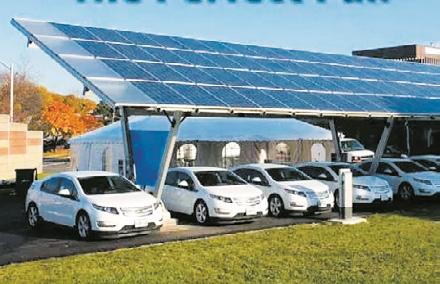
Load management: Dynamic management of charge profiles to avoid exceeding contractual limits.
Bluetooth connection through a dedicated App
Built-in power cord
Robust and safe: IP55, IK08
MyFIMERCharger: Dedicated and customizable App
Easy to install and maintain
Complete integration with FIMER PV systems
Eco-Friendly thanks to the recycled enclosure and packaging
Customizable to satisfy customers’ needs
36 EQ JUNE 2023 www.EQMagPro.com
PRODUCT REVIEW
NEW FIMER FLEXA AC Station 2.0
Introducing the second generation of FLEXA AC Station, suitable for any field of application, from private to commercial, and comes with new features to ensure maximum connectivity and an exceptional charging experience for the user. FLEXA AC Station 2.0 offers different configurations based on the type of connection and power size, with the opportunity to charge up to two electric vehicles at the same time. This new charging station by FIMER is robust and safe and maintains the features of its rugged construction and reliability of the previous model (IP55, IK10, Antitamper, protection, monitoring and diagnostic systems), which makes it the ideal solution even for installations in extreme environmental conditions. Thanks to the Master/Slave function and to the Dynamic Load Management features, FLEXA AC Station 2.0 allows the charger’s owner to get the most out of the charging infrastructure’s capabilities even when connected with the FLEXA AC Wallbox in a smart and green manner. FLEXA AC Station 2.0 provides all the connectivity needed through the integration of the OCPP 1.6 Json protocol, and, in the future, thanks to the implementation of the ISO15118, the charger is compatible with OCPP 2.0 Json protocols. It is equipped with a 7” TFT display with buttons, plus allows the installation of an audio kit to offer users a unique and intuitive charging experience. The Station is entirely customizable by selecting its color, applying a company logo and the ability to customize the display graphics on the screen.
PRODUCT REVIEW
FLEXA AC Station 2.0 can be set up through the MyFIMERCharger App, which is supported by dedicated software that enables the programming, management and monitoring of the charging process. The Station integrates, just as all other FIMER EV charging solutions, with the e-smartOPT portal by Fortech, allowing to connect up to 12 charging devices and manage the payment through the same portal quickly and easily, without registering on Apps or Web portals.
Main features of FIMER FLEXA AC Station 2.0:
Robustness and reliability (IP55, IK10, Antitamper, all protection, monitoring and diagnostic systems are still included)
▪ Ethernet, Wi-Fi, Modem 4G, optical fiber connectivity
▪ Backend connection via OCPP 1.6 Json; ISO 15118 and OCPP 2.0 ready
▪ Master/Slave functionality
▪ Dynamic Load Management
▪ 7" TFT display, buttons, audio kit
▪ Configuration with dedicated tools and MyFIMERCharger App
▪ New customizable design
▪ Possibility of PV+BES integration

SINENG ELECTRIC- A DNV-ENDORSED BANKABLE BRAND, DEMONSTRATING EXCELLENCE IN PRODUCT DESIGN AND PERFORMANCE
DNV, the world-leading provider of testing, certification and technical advisory services, has recently released a comprehensive bankability report of Sineng Electric after the exhaustive evaluation of its string, central and PCS inverters. The assessment covers every facet of product design, quality, performance and reliability, reaffirming the company's steadfast pursuit of excellence.

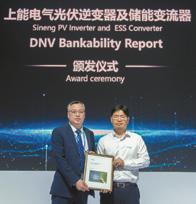
With the rigorous scrutiny of financials, technical features, product quality, supply chain, manufacturing capacity, after-sales service and other criteria, the report provides valuable insights for decision-making and serves as an authoritative reference for international investors, EPC companies, and other stakeholders when selecting the inverter brand and financing projects.
Based on the substantial investment in independent research and development, Sineng provides robust PV and energy storage solutions to maximize investors’ return on investment.
Among all the offerings, the EH series EH-0200-HA-M-US string PCS stands out as a groundbreaking option in energy storage applications. For the modular design, the EH series PCS offers exceptional flexibility while ensuring utmost reliability. Moreover, Sineng's 275kW/350kW string inverters are yet another testament to our engineering expertise. The remarkable SP-350K-H1 string inverter offers a high DC/AC ratio and can be compatible with various PV panels, thus optimizing the projects' LCOE. Our flagship products - EP series central inverters ranging from 2500kW to 3750kW, are shining examples of excellence, delivering reliable power output, maximizing yields, and ensuring convenient O&M. These superior features have been proven through their successful commissioning in numerous utilityscale PV projects.
"DNV's thorough evaluation once again confirms Sineng’s technical advancement, top-notch product quality, and outstanding customer service, further enhancing our influence in the global market," declared Yuelin Wang, General Manager of Sineng Electric System Solution Division. Sineng's ongoing efforts to improve efficiency, reliability and safety have resulted in an extraordinary product lineup that sets the industry benchmark. As the world forges ahead on its path towards a green future, Sineng Electric remains dedicated to its core values, ceaselessly offering cutting-edge solutions.
www.EQMagPro.com 37 EQ JUNE 2023
SOLAX X3-FORTH AWARDED VDE-AR-N 4110 & 4120 CERTIFICATE AT INTERSOLAR EUROPE 2023
Intersolar Europe 2023 Expo witnessed a momentous occasion as SolaX Power X3-FORTH commercial inverter (80-150kW) was awarded the prestigious VDE-AR-N 4110 & 4120 certificate by TÜV Rheinland. This esteemed recognition underscores the exceptional quality and reliability of SolaX Power products, solidifying its position as a leading provider of cutting-edge solar solutions in the European market.

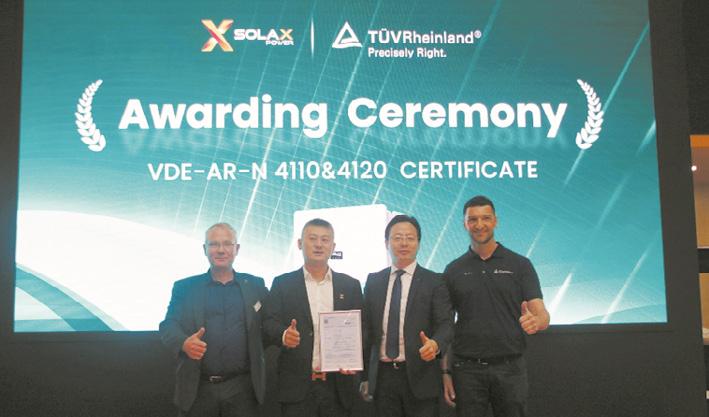
The VDE-AR-N 4110 & 4120 certificate is widely regarded as one of the most stringent standards for commercial PV inverters in Europe. It serves as an assurance of the highest level of quality, performance, and compliance with European grid codes. The certification process entails rigorous testing and evaluation, ensuring that the awarded products meet or exceed the stringent technical requirements and safety regulations set forth by the industry. TÜV Rheinland is a globally renowned independent testing and certification organization. With over 150 years of expertise, TÜV Rheinland has been instrumental in ensuring the safety, reliability, and quality of various products and services across numerous industries worldwide. Their meticulous evaluation process makes their certifications highly esteemed and trusted by manufacturers, installers, and consumers alike. The SolaX Power X3-FORTH inverter (80-150kW) is a cutting-edge commercial solar inverter designed to optimize energy conversion and enable efficient power management. Its robust construction, comprehensive protection mechanisms, and high conversion efficiency make it an ideal choice for commercial applications, providing businesses with reliable and sustainable energy solutions.
Established in 2012, SolaX Power envisions a clean and sustainable future powered by solar energy. As a global leading solar solutions provider and Asia’s first hybrid inverter manufacturer, SolaX has grown into a multinational corporation with over 2,000 employees worldwide in a decade. With headquarter in Hangzhou, China and branches in Netherlands, Germany, UK, Australia, Japan and US, SolaX sells products to more than 80 countries. SolaX PV inverters ranging from 0.6-150kW, are equipped with strong efficiency, high reliability, superb adaptability and smart control. The VDE-AR-N 4110 & 4120 certificate awarded to the X3-FORTH commercial inverter further solidifies SolaX Power's commitment to product excellence and customer satisfaction.

38 EQ JUNE 2023 www.EQMagPro.com
PRODUCT REVIEW
RENEWABLE ENERGY

GE VERNOVA SELECTED BY AMPLUS SOLAR FOR ITS FIRST ONSHORE WIND PROJECT IN INDIA
• GE Vernova to supply and commission 40 units of its 2.7-132 onshore wind turbines for Amplus Solar’s first wind project in Tamil Nadu, India.
• GE’s onshore wind installed base in India is projected to exceed 5 GW.
GE Vernova announced today that it has been selected by Amplus Solar, India’s leading clean energy solutions provider, as its onshore wind turbine supplier for its first wind farm to be installed in Tamil Nadu, India. GE Vernova will supply and commission 40 units of its 2.7-132 onshore wind turbines for this 108 MW wind power project. With this order, GE recorded more than 3 GW of orders in India with its 2.7 MW turbine and anticipates crossing 5 GW of onshore wind installed base in the country by early 2024. Amplus Solar’s wind farm will be commissioned by August 2024 and will provide accessible, affordable, and reliable green energy to local businesses and consumers.
Deepak Maloo, Regional Sales Leader for GE Vernova’s Onshore Wind business in Asia Pacific said: “We are pleased with the continued trust that customers in India have shown in our technology and our ability to deliver turbines for large wind farms. GE has demonstrated expertise in India, having installed over 50% of new wind capacity in the country last year. We are thankful to Amplus Solar for entrusting us with their first wind farm and look forward to furthering our partnership as the company continues to build its renewable energy portfolio under the leadership of Petronas.”

Sharad Pungalia, CEO for Amplus Solar said: “We are happy to have found an experienced partner in GE Vernova as we take another step in contributing to the country's net-zero targets with our first wind-power project. We are confident that together, we can create the synergies needed for the successful completion of this project.”
GE Vernova’s 2.7-132 wind turbine has proven to be the technology of choice for many customers in India due to its industry leading performance at India’s low wind speeds. The project will leverage GE’s significant local footprint in India with product design primarily at GE’s Technology Center in Bengaluru, turbines assembled at GE’s manufacturing facility in Pune and blades manufactured at LM Wind Power’s plant in Vadodara.
SAATVIK GREEN ENERGY SECURES SOLAR EPC CONTRACT FOR A CEMENT MAJOR IN KARNATAKA
Company has secured a complete Solar EPC contract for an 8.08 MW DC (6.5 MW AC) Solar Power project in Karnataka.



Saatvik Green Energy Pvt. Ltd., a renowned Indian Solar PV Module manufacturer, and Solar EPC service provider announced the award of a 8.08 MW DC (6.5 MW AC) Solar Power project for one of India's largest cement and power conglomerate. Saatvik will carry out this ground-mounted solar project and will be solely accountable for the project's Engineering, Procurement, and Construction (EPC). This ground-mounted project will be installed on 22 acres of land in the Indian State of Karnataka. The power generated by the project will be evacuated at the 11 kV level and injected into the existing 11 kV Switchyard.
Mr. Prashant Mathur, CEO of Saatvik Green Energy, “remarked that the company is taking a step forward with this Solar EPC project in order to create a sustainable future that contributes to a greener environment, and they are also committed to completing the project within the time frame specified”.

Saatvik Green Energy delivers renewable energy to its clients by establishing both on-site (rooftop, ground-mounted & floating) solar projects and off-site solar energy facilities. The company also manufactures premium quality ALMM Approved solar PV modules best suited for commercial, residential, and utility projects.

www.EQMagPro.com 39 EQ JUNE 2023
RENEWABLE ENERGY
FUELING CHANGE: BIOFUELS - THE HOTTEST RENEWABLE ENERGY PURSUIT IN THE QUEST FOR A COOLER PLANET
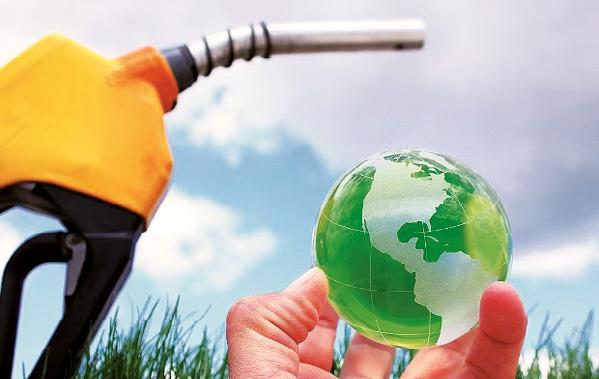
In the world of renewable energy, the spotlight has primarily been on solar and wind power. However, in recent years, biofuels have gained significant attention as a promising avenue in the quest for sustainable solutions. This shift in focus is driven by the recognition of biofuels' potential to address energy supply and security on an industrial scale, offering a distinct set of advantages. By effectively tackling waste management challenges and providing a renewable energy source, biofuels have the capacity to revolutionize our energy landscape and pave the way for a greener future.
While solar and wind power have dominated the renewable energy conversation, biofuels have emerged as a viable alternative that merits exploration for sustainable energy transition. Through the utilization of various organic materials such as waste biomass, agricultural residues, and dedicated energy crops, biofuels offer a sustainable option that can be produced domestically. Beyond their significance in energy supply and security, biofuels also hold immense promise in waste management. Large-scale biofuel production has the potential to effectively convert various types of waste materials, including agricultural residues and food waste, into valuable energy sources. By implementing advanced conversion processes, these biofuels can replace traditional fossil fuels, mitigating global and local environmental pollution associated with waste accumulation and offering a more sustainable waste management approach.Biofuels also stand out due to their indigenous nature, which contributes to energy independence and national savings. Here, we will explore the role of biofuels in solving critical energy and environmental issues, examining both largescale applications and community-level initiatives.
INDUSTRIAL SCALE ENERGY SUPPLY AND SECURITY:

Biofuels present an opportunity for a significant renewable energy supply at an industrial scale. By utilizing waste materials, agricultural residues, and dedicated energy crops, biofuels offer a sustainable alternative to fossil fuels. The cultivation of energy plants and the conversion of biowaste into biofuels can provide a reliable and domestically sourced energy solution. By providing a low-carbon alternative for current technologies, such as light-duty automobiles in the short term and heavy-duty trucks, ships,
and aircraft with few other choices in the long term, biofuels play a particularly significant role in decarbonizing transportation. After declining owing to the Covid-19 epidemic, biofuel demand rebounded to levels close to 2019 in 2021, reaching 4 EJ (159 200 million litres).
DIVERSIFICATION AND WASTE MANAGEMENT:
Biofuels offer a two-fold solution by simultaneously addressing waste management issues and providing renewable energy. Industrial-scale biofuel production can efficiently utilize waste materials, such as agricultural residues and other organic waste, which would otherwise contribute to environmental pollution, especially the deadly GHG Methane. By converting these wastes into valuable biofuels, we can mitigate their negative impact and create a more sustainable waste management system. Currently, the great majority of biofuels are produced using so-called conventional feedstocks like corn, soybeans, and sugar cane. To ensure minimal influence on land use, food and feed prices, and other environmental concerns, it is essential to increase biofuel production to advanced feedstocks. According to the Net Zero Scenario, around 50% of the biofuels used in 2030—up from a projected 8% in 2021—are derived from wastes, residues, and special crops that don't compete with food crops (for example, crops planted on marginal land). The bulk of non-food crop feedstocks used in the production of biofuels today come from used cooking oil and animal fat waste. Due to the scarcity of these feedstocks, new technologies must be commercialised in order to increase the production of non-food crop biofuels.
40 EQ JUNE 2023 www.EQMagPro.com
COMMUNITY INITIATIVES:
Apart from industry-scale, community-level initiatives play a crucial role in harnessing the benefits of biofuels. Small-scale biogas systems, particularly for farmers and marginal farmers, present a viable solution. The use of gobar gas, generated from animal dung through modular technologies, offers a cost-effective and sustainable energy source for these communities. Carbon finance programs further enable affordable access to such technologies, empowering farmers to address their energy needs and reducing their reliance on fossil fuels.
A CHEAPER ALTERNATIVE:
The high concentration of Carbon with biofuels signifies a lower cost of endothermic energy, for no or simple purification as needed based on usages, make it a viable techno-commercial options for many geographies in this world. By replacing fossil fuels with biofuels, countries can reduce their reliance on imported energy sources, thereby saving foreign currency expenditure. On an energy basis, biofuels collectively prevent 4.4% of the world's oil use in road transport. OECD nations account for over 60% of biofuel demand, while non-OECD nations account for 40%. By the end of 2022, existing and new policies are predicted to increase the demand for biofuel by 5% from 2021 levels. For instance, the Inflation Reduction Act, which includes incentives for biodiesel, renewable, sustainable aviation fuel (SAS), and advanced fuels as well as support for biofuels infrastructure and production, was enacted by the US in August 2022. The Indian government mandates, such as the blending of ethanol with fossil fuels, promote the adoption of biofuels and help create a market for their production. This not only ensures energy security but also reduces dependence on foreign currency expenditure associated with importing fossil fuels.
BIOFUELS AND CARBON CREDITS:
Given its inexpensive and efficient workings, biofuels are an excellent source of cutting and capturing emissions. Producers of biofuel may be qualified to receive the related carbon credits or renewable energy certificates. Depending on how much carbon their initiative removes or reduces, the number of credits varies. For instance, the U.S. Department of Energy granted tens of millions of dollars to a biofuel company operating an ethanol refinery. The money will be used to develop a facility that can use wood chips to produce more than 1 million gallons of biofuel annually. Indore Smart City Development Limited, as part of the initiatives for sustainable development of Indore City had implemented Municipal Solid Waste Treatment projects to treat the domestic waste generated in a scientific manner. The financial benefits from carbon credits would catalyze environmentally sustainable and financially viable projects in partnership with EKI.
CONCLUSION:

Biofuels have emerged as a promising renewable energy option that can address energy supply, waste management challenges, and currency savings. From industrialscale production to community-level initiatives, biofuels offer versatile solutions with wide-ranging benefits. As we pursue a cooler planet and strive for sustainable energy systems, the rise of biofuels provides us with an opportunity to fuel change and create a greener future.
SOLAR ENERGY SOLUTIONS PROVIDER ORIANA POWER FILES DRHP FOR ITS PUBLIC ISSUE WITH NSE EMERGE
The IPO comprises the issue of 50,55,600 equity shares through book building route.
Oriana Power, among India’s fastest-growing solar energy solution providers, has announced the filing of its Draft Red Herring Prospectus (DRHP) with NSE Emerge for its proposed initial public offering (IPO).
The IPO comprises the issue of 50.55 lakh Equity Shares (Face Value Rs 10/-) through the book-building route. The company has appointed Corporate Capital Ventures Private Ltd as Lead Manager for the issue, while Skyline Financial Service Private Ltd. will be the Registrar to the issue. As per the DRHP, the company will utilise issue proceeds from the IPO towards meeting its working capital requirements (Rs. 23 core), investment in subsidiary companies (Rs. 20 crore), capital expenditure for expansion purposes (Rs. 2 crore) and general corporate expenses.
Co-founded by first-generation entrepreneurs Rupal Gupta, Parveen Jangra and Anirudh Saraswat, Oriana commenced operations in 2017. For the year ended March 31, 2023, the company's revenue stood at Rs. 134 crore compared to revenue of Rs. 101 crore in the same period of 2022. However, the company's profit after tax almost doubled to Rs 12.69 crore during the year ending March 31, 2023, from Rs 6.96 crore registered in the previous fiscal year, as per the DRHP.
Oriana Power is a company that specialises in providing solar energy solutions to industrial and commercial customers. We offer low-carbon energy solutions by installing on-site solar projects such as rooftop and ground-mounted systems and off-site solar farms, i.e., Open access. Our business operations are primarily divided into two segments: Capital Expenditure (CAPEX) and Renewable Energy Service Company (RESCO). The company caters to marquee clients comprising eminent corporates, including Hindustan Petroleum Corporation, Hero Motocorp, Indraprastha Power Generation, JK Laxmi Cement Limited, Tata Memorial Hospital, Hindustan Copper, National High Speed Rail Corporation, Modern Delhi Public School, Faridabad, Sarvodya Kanya Vidyalaya, Umang Dairies, among others. In May 2023, the company successfully commissioned a 2.7 MWp single rooftop solar power plant at the Indian Oil Corporation Ltd (IOCL) refinery in Panipat, Haryana, for Indian Synthetic Rubber Private Limited (ISRPL). During April 2023, the company also successfully commissioned a novel 800kW AC/1MWp DC floating solar power plant at Dabok Mines of Udaipur, Rajasthan, for Udaipur Cement Works Limited (UCWL).
www.EQMagPro.com 41 EQ JUNE 2023
RENEWABLE ENERGY
CLEANTECH SOLAR FORGES AHEAD WITH PARTNERSHIPS IN TAMIL NADU TO DEVELOP ~60 MWP OPEN ACCESS SOLAR PV PROJECTS FOR BLUE-CHIP C&I CUSTOMERS
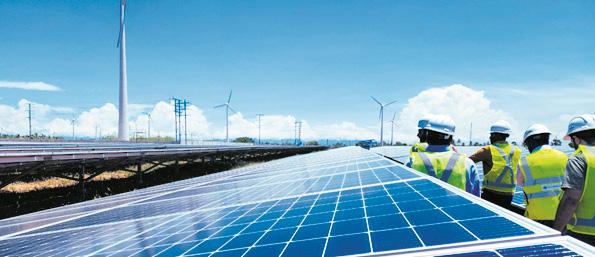

Cleantech Solar, a leading provider of renewable energy solutions to corporations in India and Southeast Asia, announces the signing of long-term power purchase agreements (PPAs) with leading Commercial & Industrial (C&I) customers in the state of Tamil Nadu to develop ~60 MWp of open access solar PV projects. These projects are being built at the developer’s state-of-the-art solar park in Tirunelveli district. Power from these projects will be procured by the consumers on a captive basis and will power their manufacturing operations in the state. The projects are being developed for customers across diverse sectors such as automotive, chemicals and education.


With these projects, Cleantech Solar further solidifies its position as the leading solar developer in Tamil Nadu with over 15 blue chip customers and projects totalling ~300 MWp across operations and construction stages. The longterm partnerships between Cleantech Solar and the top-tier C&I customers are expected to generate approximately 2,112 GWh of clean energy during the system’s lifetime, amounting to a reduction of 1,932 kilotonnes of CO2 emissions. Procuring cost-effective renewable energy from Cleantech Solar’s solar parks will enable the industry leaders make significant strides in their decarbonisation efforts whilst reducing operating costs.
Mr. Sachin Jain, Chief Executive Officer of Cleantech Solar, said “It is wonderful to partner with the world’s leading C&I customers, enabling them to make the switch to green energy. Tamil Nadu has been a frontrunner in renewable energy development and our state-of-the art solar park in the state will provide clean energy to our customers, helping them decarbonise and achieve their green energy targets. In addition to this, diversifying energy sources will help these corporations achieve stability of energy supply whilst providing significant savings on the cost of electricity. We are honoured to be part of this green energy transition and look forward to building on these partnerships further!”
42 EQ JUNE 2023 www.EQMagPro.com SOLAR PROJECTS
Cleantech Solar’s solar park in Tirunelveli, Tamil Nadu
INDIAN GOVERNMENT POLICIES FOSTERING RENEWABLE ENERGY
Recent policies like The Green Credit Programme Implementation Rules, 2023 & Electricity (Rights of Consumers) Rules, 2020 implemented by Government of India via Gazette notifications are worth appreciating.
VINEET MITTAL

Director & Co-Founder

Ministry Of Environment, Forest and Climate Change Notification (MOEFCC) has implemented The Green Credit Programme Implementation Rules, 2023. In the Green Credit Programme, a domestic voluntary market mechanism will be developed and Green Credits will be available for trading on a domestic market platform. This will create a market based mechanism to provide incentive for environment positive actions. Green Credit is a singular unit of incentive provided for some special activities which impacts the environment positively. Green credits can be generated for Tree Plantation, Water Conservation, Reuse & Harvesting, Natural and regenerative agricultural practices & land restoration, Waste Management, Air Pollution Abatement, conserving & restoring of Mangroves & Sustainable Building & Infrastructure. Digital processes will be developed for self-assessments, registration, issuance, monitoring, audit & verification of eligible Green Credit activities.The Green Credit registry will be available in the form of a standardized electronic database which contains data relevant to the issuance, holding, transfer and acquisition of Green Credits. This Programme shall be based on voluntary participation of all stakeholders. Added to the Green Credits, one more gazette implemented by the Government of India (GOI). The central government has amended the Electricity (Rights of Consumers) Rules, 2020. In these rules, all types of smart meters shall be read remotely at least once in a day. The data regarding energy consumption shall be made available to the consumer through website/mobile application/SMS and consumers having pre-payment meters shall also be given data access to check their consumption and balance amount on daily basis.
GOI has implemented Time of Day (TOD) tariff which means customers have to pay for their electricity consumption based on the time of electricity consumption. Time of Day (TOD) Tariff for C&I consumers having maximum demand >10 kW will be implemented by 1st April, 2024 & for other consumers it will be implemented by 1st April, 2025. During peak hours, TOD charges will be 1.2 times of normal tariff for C & I consumers and for other consumers, it will be at least 1.1 times of normal tariff. For people using Solar Electricity, tariff rules are different. Solar hours will be the duration of 8 hours in a day as specified by State Commission. Tariff for “SOLAR HOURS” will be at least 20% lesser than normal tariff for respective category of consumer and by this rule Government is encouraging consumers to use Solar Electricity. The duration of peak hours shall not be more than “SOLAR HOURS” as notified by the SLDC. TOD Tariff shall be applicable on energy charge component of the normal tariff. The tariff for each category of consumers shall be displayed on distribution licensee's website and consumers shall be notified of any changes through energy bills/SMS/ Mobile applications. We believe that the The Green Credit Programme Implementation Rules, 2023 & Rights of Consumers Amendment Rules, 2023 aim to promote environment positive actions via Green Credits, monetize Climate Positive actions, modernize the power sector through smart grid technologies, TOD pricing & encourage the usage of renewable energy.
www.EQMagPro.com 43 EQ JUNE 2023 OPINION
Navitas Solar
REVOLUTIONIZING INTELLIGENT MANUFACTURING: SOFAR MODERNIZED FACTORY DESIGNED FOR FUTURE VISITED BY PVO INTERNATIONAL

The first phase of SOFAR latest smart and digital factory covers an area of over 110 thousand square meters, with a total investment of nearly CNY 800 million. After being put into full operation, the annual manufacturing capacity of solar and storage products is expected to add more than over 1 million units. The new factory is a colossal complex that boasts cuttingedge technologies in robotization and automation. It is explicitly designed to manufacture in the most efficient way and features optimized solutions in labor engineering.


Erwin Damen later made remarks in his blog. He’s convinced that quality control is top priority for SOFAR, and all inverters undergo a rigorous and comprehensive 3x100% check before leaving the factory. First, every new inverter undergoes a diagnostic machine check, ensuring that all components are properly connected. Then, the inverters are tested to see how they function practical situations. Finally, each inverter undergoes another diagnostic test before leaving the factory. SOFAR’s quality checks ensure that expected failure rate after installation is reduced to an absolute minimum, giving customers a hassle-free energy solution.
During the visit, PVO International was impressed by the streamlined production procedure, the professional and welltrained employees, and the fully motivated management team. At the recently concluded Intersolar 2023, SOFAR and PVO International signed a 500MW MoU. Under this agreement, both parties will work together to bring forth all-scenario solar and storage solutions for customers worldwide.
Allen Cao, Head of SOFAR Europe, believes that this visit will offer global partners an exciting opportunity to take a closer look at the company’s modernized production processes. “We’re confident that our new factory is an innovative revolution in intelligent manufacturing perfectly designed for the net-zero future. Our partnership with PVO International signals a significant milestone in supporting the shared goal to facilitating a clean transition towards a greener society which ensures equal access to affordable, reliable, and sustainable energy.” he added.
44 EQ JUNE 2023 www.EQMagPro.com PV MANUFACTURING
SOFAR, the global leading provider of PV & ESS solutions, was recently visited by PVO International Commercial Director Hans Ekelmans and Procurement Manager Erwin Damen at the company’s brand-new manufacturing base in Huizhou.
WAAREE ENERGIES LTD. EARNS GLOBAL RECOGNITION AS A TOP PERFORMER IN PVEL’S 2023 PV MODULE RELIABILITY SCORECARD
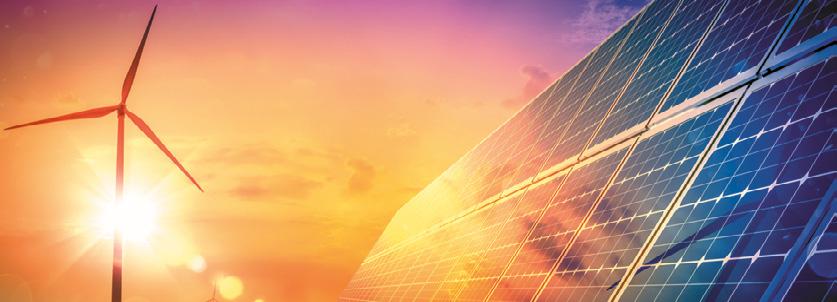



Waaree Energies Ltd., India’s largest solar panel manufacturer, has been featured in the 9th edition of PVEL’s prestigious annual PV Module Reliability Scorecard. Waaree was recognized as a Top Performer after its products met international quality and performance benchmarks set by PVEL.
PVEL is an independent testing facility for the solar and energy storage industries. It provides independent testing, engineering and data solutions to mitigate risk and optimize project performance and economics in the sector. The rankings in PVEL’s PV Module Reliability Scorecard are determined by the outcomes of the exhaustive and rigorous lab and field tests conducted as part of its Product Qualification Program (PQP). This recognition as a Top Performer in PVEL’s scorecard, is a testament to Waaree's commitment to the highest standards of quality and reliability while catering to buyers in India and across the globe. Waaree’s dedicated investments in research & development enable the company to bring innovative and cutting-edge products to market that offer greater efficiency and superior performance and value to customers.
Speaking about the recognition by PVEL, Mr. Hitesh C Doshi, Chairman and Managing Director, Waaree Group, said, “Waaree has long fostered a culture of excellence focused on meeting the high quality standards of global markets, and this recognition further validates our approach. The results of PVEL’s extended reliability and performance testing has catalyzed the growth of new markets and buyers for Waaree. As India’s largest PV module manufacturer and exporter, we happily share PVEL’s PQP in our conversations with buyers across the globe."
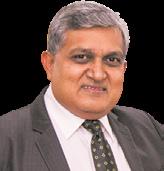
Commenting on the occasion, Tristan Erion-Lorico, PVEL’s VP of Sales and Marketing, mentioned “PVEL applauds Waaree Energies for being listed as a Top Performer in the 2023 Scorecard. We are pleased to recognize Waaree Energies for demonstrating their commitment to producing reliable modules via their strong results in PVEL's PQP testing. Particularly noteworthy is the Waaree module that achieved Top Performer status in all categories, which is a rare and impressive accomplishment.”
With a 12 GW manufacturing capacity in India, Waaree has the largest solar module manufacturing capacity in India. The company is the largest exporter of solar modules, and currently exports its products to over 20 countries worldwide. Waaree has a presence in over 380 locations across India and 20 countries internationally. The company recently completed the timely delivery of 50 MW solar modules to a Fortune 500 company in the US. The independent product performance validation by PVEL through the Product Qualification Program (PQP) will further strengthen Waaree’s leadership position and will be instrumental in building even greater customer confidence and driving additional sales growth.

PV MANUFACTURING
WIKA INDIA WINS IE AWARD FOR CARBON FOOTPRINT REDUCTION


WIKA Instruments India Pvt Ltd, a wholly-owned subsidiary of WIKA Alexander Wiegand SE & Co. KG, Germany, a global market leader in pressure and temperature measurement technology, has been honored with the prestigious Carbon Footprint Reduction Award on June 30, 2023, at the 2nd edition of IE Renewable Business Meet. This accolade marks the recognition of the organization's unwavering commitment to sustainability and its pursuit of a net-zero future.

Today, we find ourselves filled with pride as the unwavering dedication we possess towards sustainability and our pursuit of a future with zero net emissions is acknowledged by Industrial Outlook™ Magazine,” said Prashant Sinha, Head of Marketing EMEA / India from WIKA India, who received this esteemed award on behalf of the organization at the meet.
“This accolade serves as undeniable evidence of our steadfast commitment towards diminishing our carbon footprint and safeguarding our planet for the well-being of forthcoming generations. We hold firm in our belief that each and every action is significant, and it is only through our collaborative endeavors that we can genuinely bring transformative change,” added Sinha.
Sustainability has been among the core values at WIKA since its establishment 75 years ago. The company has established clear and measurable sustainability goals and aligns all its operations and activities with them. The company carefully evaluates the carbon footprint throughout its supply chain. WIKA has always complied with all the national and international environmental legislations and was awarded with Öko-profit and EcoVadis in 2022.
WIKA also has a targeted emphasis on green energy and is focusing on the emerging segment of green hydrogen to assist India in its transition to a sustainable energy future. Additionally, WIKA India is maximizing the use of solar power in its plant operations, which is currently at 54%. To reinforce this commitment, WIKA has transformed all four of its factories in India into solar-powered facilities. WIKA has embedded its carbon neutrality mission throughout its value chain, focusing its product line and quality innovations towards "Engineering Towards Net Zero.".


With its innovative solutions and wide product range, WIKA supports its customers on their path towards sustainability with the best-possible solutions.
As a pioneer in the industry, WIKA sets an example with enhanced technological advancements in reducing negative environmental impacts and achieving a net-zero carbon footprint by 2030. This aligns its values with UN’s Sustainable Development Goals to make a positive impact on the society.
46 EQ JUNE 2023 www.EQMagPro.com DECARBONISATION
GREATER POSSIBILITY OF COLLABORATION IN ENERGY, GREEN HYDROGEN WITH NAMIBIA: JAISHANKAR
External Affairs Minister S Jaishankar has said that India and Namibia have greater possibility of closer cooperation in the field of energy, including in oil and gas, green hydrogen and solar.

During his closing remarks at the first IndiaNamibia joint commission meeting, which he conducted along with Namibian deputy Prime Minister and foreign minister Netumbo Nandi Ndaitwah, Jaishankar said that both the countries can look at possibilities of cooperation in the field of infrastructure development, especially in railways, roads, ports, electricity transmission and water usage.
Even in Africa, there are already significant projects delivered by us in these domains.I hope that this record encourages the emergence of new partnerships between us in these areas, he said. Highlighting the collaboration in wildlife relocation and conservation, Jaishankar referred to the re-introduction of Cheetahs in India that were given by Namibia. “It is truly a milestone, creating the basis for other initiatives.We hope that Namibia would join us in the creation of the Big Cat Alliance.Such cooperation also has a major impact on the promotion of eco-tourism,” he said.
Source: PTI
INDIA STRONGLY RAISING ISSUE OF CLIMATE JUSTICE WITH DEVELOPED COUNTRIES: PM MODI
Prime Minister Narendra Modi said the poor and developing countries are paying the price for the “wrong policies” of some developed nations and stressed that India has been strongly raising the issue of climate justice with all such advanced and big countries.

In his video message at a World Environment Day event here, Modi said that for the protection of the world climate it is important that all countries think, rising above selfish interests. “For a long time, the model of development in big and advanced countries was contradictory. In this developmental model, the thinking was that we first develop our country then we can think about the environment,” the prime minister said. “With this they achieved the goals of development but the world’s environment had to pay the price for their development. Today also, the developing and poor countries of the world are paying the price for the wrong policies of some developed countries,” he said. For decades no one was there to object to this attitude of the developed countries, Modi said. “I am happy that India has raised the question of climate justice with all these countries,” he said.
Modi said India is focussing on environment in a big way just like any other area for its growth. If India has expanded its 4G and 5G telecom networks, it has also enhanced its forest cover on an equal footing, he said. “The theme of this year’s World Environment Day is to get rid of single-use plastic, an issue about which the world is talking today but India has been working on it consistently for the last four-five years. “In 2018 itself, India started working at two levels for getting rid of single-use plastic. On one hand, we banned single-use plastic and on the other hand we made the plastic waste processing mandatory,” he said. In the past nine years, India has focussed a lot on ‘green and clean energy’, Modi said. Led by the United Nations Environment Programme (UNEP) and held annually on June 5 since 1973, World Environment Day is the largest global platform for environmental public outreach.

www.EQMagPro.com 47 EQ JUNE 2023 INDIA
INDIA CAN REDUCE POLLUTION BY 40 PC BY NOT USING FOSSIL FUELS: GADKARI
“We can reduce 40 per cent pollution by not using fossil fuels like petrol and diesel,” Gadkari said addressing Green Urja Conclave organised by Confederation of Renewable Energy Service Professionals and Industries (CRESPAI) in association with IIT-Delhi, IITRopar and University of Delhi here


India can reduce its pollution by over 40 per cent by not using fossil fuels like petrol and diesel, while the country imports crude oil worth Rs 16 lakh crore every year, Union Minister Nitin Gadkari said. He said, “We import fossil fuels worth Rs 16 lakh crore every year. It poses a big economic challenge for us. It also causes pollution. Besides, we also import coal worth Rs 12 lakh crore. We need to reduce our new technologies and improvise those also.” He emphasised on the importance of institutions like Indian Institute of Technology (IIT) for bringing new technology for promoting clean and green energy. He opined that the new technology should be need based, economically viable and the raw material for it should be available. He highlighted that India is targeting 500GW of renewable power generation capacity by 2030 and that the renewable energy installed capacity is at 172 GW in the country and India is at the fourth position in the world in terms of clean energy capacity.
“Our total power basket has 38 per cent share of solar energy”, he pointed out. Solar power cost came down to Rs 2.60 per unit while other green energy costs Rs 6.5 per unit, he pointed out. “State government discoms (utilities which distribute and generate power) have a loss of Rs 16 lakh crore at present. They are following a good policy — more generation more losses, no generation, no losses,” he said. It is the right approach that they (state utilities) want to reduce their cost by having more proportion of solar power in their supplies, he opined. “But we need to promote biomass-based energy in the country,” he stated. About promoting nuclear energy in the country, he said that India has scarce uranium and thus the nation has to develop thorium- based nuclear energy projects here.He stressed on the role of institutions like IIT for promoting green energy. Green energy refers to energy produced from bio-mass, bio-gas, ethanol, methanol etc.
Source: PTI
48 EQ JUNE 2023 www.EQMagPro.com INDIA
INDIAN ENERGY EXCHANGE TRADE VOLUME GROWS 8 PC TO 8,251 MU IN MAY
The average market clearing price was Rs 4.74 per unit during the month, lower by 30 per cent over the corresponding month a year ago The total trade volume of the Indian Energy Exchange grew by 8 per cent year-on-year to 8,251 million units (MU) in May.
The average spot power price during May 2023 was 30 per cent lower at Rs 4.74 per unit against Rs 6.76 per unit in May 2022, due to an improving supply-side scenario, leading to increased liquidity, and cooler weather conditions. “Indian Energy Exchange achieved 8,251 MU overall volume in May 2023, including green market trade of 358 MU, 1.42 lakh RECs (equivalent to 142 MU) and 2.02 lakh ESCerts (equivalent to 202 MU). The overall volume during the month was higher by 8 per cent on YoY (Year-on-Year) basis,” an IEX statement said.
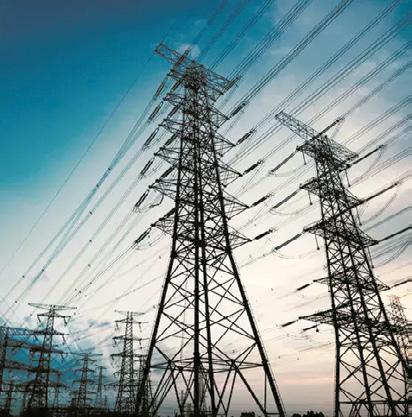
While an increase in power demand is expected in the coming months, the supply-side liquidity is likely to further improve due to enhanced coal supply, reduction in e-auction coal prices and consistently declining imported coal and gas prices. This will lead to competitive prices and higher clearance for Discoms and Open Access consumers, it stated. IEX commenced Tertiary Reserve Ancillary Services (TRAS) market segment from the delivery date, June 1, 2023, for DayAhead Market Ancillary Services (DAM-AS) and Real Time Market Ancillary Services (RTM-AS). The Day-Ahead Market (DAM) volume increased to 4,066 MU in May 2023 from 3,224 MU in May 2022, growing 26 per cent year-on-year. The average market clearing price was Rs 4.74 per unit during the month, lower by 30 per cent over the corresponding month a year ago. The Real-Time Electricity Market (RTM) achieved the highest-ever monthly volume of 2,424 MU during May 2023, registering a 5 per cent year-on-year growth.
MARUTI SUZUKI COMMENCES WORK ON TWO SOLAR POWER PLANTS
Source: PTI
The announcement of the new solar power projects at Manesar and Rohtak accelerates the company’s efforts in this direction, he added Maruti Suzuki India said it has initiated work on two new solar power plants at the company’s facilities to strengthen its commitment to carbon neutrality.
The two solar power plants, namely 1.85 MWp at R&D Centre, Rohtak, and 20 MWp at Manesar will be commissioned in FY 2023-24 and FY 2024-25, respectively, the auto major said in a statement. With this, the company’s total solar power capacity across all facilities will reach 48.15 MWp, it added. MSI said it is also increasing the share of green power sourced from the Haryana State Electricity Board for its consumption.
“We have been increasing the share of power generated through renewable sources of energy since the start of our first solar power plant in 2014,” Maruti Suzuki India Managing Director & CEO Hisashi Takeuchi noted. The announcement of the new solar power projects at Manesar and Rohtak accelerates the company’s efforts in this direction, he added. By 202425, more than 30 per cent of the company’s power requirement is expected to be met through renewable energy, Takeuchi said.
Source: PTI
www.EQMagPro.com 49 EQ JUNE 2023 INDIA
IEX Green Market, comprising the Green Day-Ahead and Green Term-Ahead Market segments, achieved 358 MU volume during May 2023.
INDIA’S FIRST OFFSHORE WIND ENERGY TO COME UP OFF TAMIL NADU COAST
India will add 58 GW of wind energy capacity over the next seven years at an investment of over 4 lakh crore. This would take the cumulative installed capacity of onshore wind energy to 100 GW as part of the Centre’s plan to create 500 GW of non-fossil fuel based installed capacity by 2030. Currently, 42.8 GW of onshore wind energy has been installed.
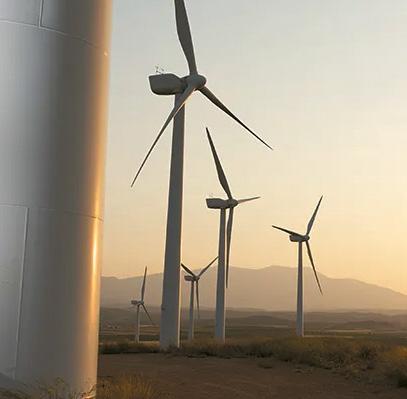
n the other hand, the Union ministry of new & renewable energy will float a tender for seabed licensing to setup 4 GW of India’s first offshore wind energy off Tamil Nadu coast before the end of CY2023. Indian Wind Turbine Manufacturers Association secretary general D V Giri said, out of the 58 GW of wind energy, five GW and three GW will be installed in 2023-24 and 2024-25, respectively. “By 2030, 58 GW of onshore wind energy will be commissioned. One GW of wind energy requires an investment of about Rs 7,000 to Rs 8,000 crore,” he said. He was speaking on the sidelines of a seminar on ‘offshore development’ organized at the National Institute of Wind Energy here. Wind energy is produced from nine states with Tamil Nadu, Gujarat, Karnataka, Maharashtra, Rajasthan and Andhra Pradesh leading the list.
Meanwhile, Union ministry of new & renewable energy is tapping the offshore wind energy potential and identified 14 sites, each with a capacity to install one GW, off the Tamil Nadu coast in the Gulf of Mannar. Tenders would be floated before the end of this year for the seabed license, wherein the successful bidder would prepare the detailed project report in five years. In the first phase, bids would be for leasing out 4GW of power through open access, captive, bi-lateral third party sale and merchant sale. Additional chief secretary — industries S Krishnan said, steps should be taken to simultaneously float the tenders for another 4 GW, which has been earmarked under the Viability Gap Funding (VGF) mechanism.
Source: PTI
As a self-driven and environmentally responsible force, the Navy has always been committed towards environment protection and has undertaken several green initiatives, officials said
n the eve of World Environment Day, the Navy shared some of the noteworthy initiatives towards a ‘Clean and Green Navy’. As guardian of the seas, the Navy employs a number of ships, submarines and aircraft that have high energy intensity, thus increased energy efficiency is paramount in every operation and process the force undertakes, according to an official statement. The Navy has commissioned solar power with a cumulative capacity of 15.87 MW which is in line with the its objective of fulfilling the government’s ‘Jawaharlal Nehru National Solar Mission (JNNSM)’ mission. These plants are grid-connected utilizing single-axis sun tracking technology with computerized monitoring & control. Additionally, 16 MW capacity of SPVs are at various stages of execution, officials said. Also, towards combating oil spills at Naval harbors, ecofriendly marine bio-remedial agents have been indigenously developed through NMRL. The state-of-the-art technology is unique in the maritime domain.
The product consists of a combination of micro-organisms and their growth stimulant, which consume various types of oils such as diesel, lubricating, and dirty oils, thus cleaning the seawater from any oil contamination and its consequent damage to the marine ecosystem, it said. The Navy said in collaboration with IISc, Bangalore, it has operationalized a first-of-itskind 100KW capacity AC plant in the country based on the natural refrigerant carbon dioxide. To reduce the overall carbon footprint and enhance environmental sustainability, the Navy is “geared Up and committed” to march towards pursuit of green initiatives, realizing the national aim, to ensure a ‘greener and cleaner future for our next generations, it said.
Source: PTI
50 EQ JUNE 2023 www.EQMagPro.com
AS A SELF-DRIVEN AND ENVIRONMENTALLY RESPONSIBLE FORCE, THE NAVY HAS ALWAYS BEEN COMMITTED TOWARDS ENVIRONMENT PROTECTION AND HAS UNDERTAKEN SEVERAL GREEN INITIATIVES, OFFICIALS SAID
O O INDIA
GOVERNMENT TO BRING ‘OPEN HYDEL POLICY’ IN STATE: HIMACHAL
CM SUKHU
Himachal Pradesh Chief Minister Sukhvinder Singh Sukhu said that the state government will bring an ‘Open Hydro Policy’ in order to facilitate the power producers.

While presiding over the meeting with the Association of Independent Power Producers (IPPs), Chief Minister Thakur Sukhvinder Singh Sukhu assured full support to make their projects economically viable by assisting in removing all the hindrances. “State government would provide handholding in getting all clearances to set up their power projects. If any gram Panchayat does not provide a No Objection Certificate (NOC) in a stipulated time period, it would be considered deemed to be sanctioned. State Government would also bring Open Hydro Policy in order to facilitate the power producers,” he said.
“Besides tourism, the Hydel sector was the main resource of revenue for the State exchequer. We have enacted Water Cess Act to strengthen the economy of the State,” he added.
During the meeting, CM Sukhu also sought a self-proposal from the IPPs on the quantum of water cess to implement the Act and said that the government would sympathetically consider their proposal. “The Chief Minister said that the State Government was also taking up the issue of enhancing the royalty in the power projects set up by Central PSUs especially those which have covered their expenses,” the official statement said. “On the demand of IPPs, Chief Minister directed the HPPTCL to expedite the laying of power transmission lines in order to evacuate the power supply from generation sites well in time so that they may not have to face the financial losses,” it added.
The Chief Minister also said that State Government would consider their demand positively for the calculation of power tariffs from the date of commercial operation rather than from the date of the Power Purchase Agreement for 41 power projects. On the occasion, he also said that the State Government would also issue an advisory to Himachal Pradesh Electricity Regulatory Commission to consider royalty on an actual basis i.e. 12, 18 and 30 per cent. “Chief Minister Sukhu also mentioned that 111 mini and micro power projects were contributing Rs 223.60 crore as annual revenue to the State exchequer. He asked the IPPs to complete their power projects in time bound manner so that the benefits of these projects could be reaped at the earliest. He also said that there was the potential for 3539 MW of power through IPPs out of which only 754 MW has been harnessed so far,” the official statement said.
“The State Government was also prioritizing harnessing solar and wind energy and has set a target of producing 500 MW of solar power during this year, besides a study is also underway to set up wind energy power projects in the State,” CM Sukhu said.
Source: PTI

www.EQMagPro.com 51 EQ JUNE 2023
INDIA
MEGHALAYA HC PULLS UP STATE GOVT FOR ALLOWING EXPORT OF COAL WITHOUT SEEKING ORIGIN OF COAL
The Meghalaya High Court has pulled up the state government for allowing export of coal through land customs stations in the state without seeking to ascertain the source or origin of such coal.
Adivision bench of the court comprising Chief Justice Sanjb Banerjee and Justice W Diengdoh said this, while hearing a PIL filed by Champer M Sangma.“It is alarming that despite the state understanding the purport of the request by Central agencies, it was so lax that it allowed tens of thousands of metric tonnes of coal to be cleared for export through land customs stations within the state without, apparently, seeking to ascertain the source or origin of such coal,” the division bench said.
The high court said several letters were issued to the state by central agencies and by the Union Finance Ministry before the suo motu proceedings pertaining to illegal coal-mining and illegal transportation of the illegally-mined coal being instituted in this court. “The Central agencies suspected such activities and in the letters referred to in the previous order warned the state, including through the Union Minister of Finance. The state, not only did not take any steps, but actively concealed these letters from the court with glib apology recorded above at paragraph 12 of its recent affidavit,” the bench said. The high court said that the “complicity of the state with the mafia and the racket operating in the illegal mining of coal and its illegal transportation is clear and obvious and there can be little doubt that the higherups in the administration are the beneficiaries of the illegal gains and responsible for the colossal loss of revenue that has been occasioned to the state.” In its recent affidavit, the state had stated: “The state tenders an unconditional apology for not putting on record these documents in these proceedings on earlier occasion or else the observations made by this Hon’ble Court in order dated 17.05.2023 attributing complicity to the state would never have occasioned…” The Court said indeed, the suo motu proceedings pertaining to illegal mining of coal were initiated in or about March of 2022 and matters pertaining to the illegal transportation of such illegally-mined coal were addressed in several orders from or about April, 2022.
“… the State had been warned by the Central agencies to ensure that illegally-mined coal in the state was not attempted to be exported on the representation that they were coal mined outside the state, the state ought to have been alive to the issue and checked every truck carrying coal and verified every request for permission to export coal to ascertain the origin of the coal and the veracity of the declarations made by the intending exporters,” it said.
Further, the court has also said that it cannot be faulted if it were to infer that the Jaimaa Coal Private Ltd (which the petitioner complained of) may have been virtually an instrumentality of the state aided and abetted by the state to finance the lucrative business of illegal mining of coal in the state. “It has been repeatedly observed in orders of this court that illegal mining of coal could not have continued unless there was transportation of coal and, without transportation and no demand, illegal mining would have died a natural death. In entities like the respondent No. 14 (Jaimaa Coal Private Ltd) herein, aided and abetted by the state, finding a way to export the illegally mined coal in the state there was demand for the product that resulted in illegal mining on a larger scale,” it said. The high court said it will be open to the petitioner and the respondents to deal with the contents of the latest affidavit filed by the state. “The Court still hopes that despite the abysmal conduct of the state and its highest officials in this matter, steps would be taken to arrest further illegal mining and its illegal transportation, though the 13th interim report filed by Justice Katakey (retired) in the suo motu proceedings may indicate otherwise,” it said.
It further said, “Any reasonable or rational or responsible administration ought after the observations made in the orders passed in this and the connected proceedings, to discover the source of the coal that the respondent No. 14 and its associates exported through the LCS in the state. The court can only hope that such realisation would dawn on the state, though any enquiry in such regard may be uncomfortable for the highest officials in the executive.” It was also submitted on behalf of the land customs authorities that though the land customs authorities do not have any role to look into an e-way bill that has been certified upon being checked by the state authorities, several of the e-way bills submitted by Jaimaa Coal Private Ltd showing the delivery of coal in Dudhnoi revealed what may have been going on. The court said it may not be out of place, in this context, to record that in several of the orders of this court, particularly in the suo motu proceedings, this court has referred to the recent mushrooming of coal dumps or depots between Dudhnoi and Paikan on the National Highway in the Goalpara district connecting Guwahati to North Bengal.
It has also been recorded in such orders that on this stretch from Dudhnoi to Paikan, of approximately 10 to 15 km, there are at least three roads which come from the south to meet the National Highway and such roads originate in Meghalaya.“It takes no rocket science or great IQ to infer that illegally mined coal from Meghalaya is dumped around Dudhnoi and then delivered from Dudhnoi to agencies in Meghalaya for the ultimate export thereof through land customs stations in Meghalaya,” it stated.
The next hearing of the case will be held on June 15.
Source: PTI
52 EQ JUNE 2023 www.EQMagPro.com INDIA
RENEWABLE ENERGY CAPACITY ADDITIONS TO HIT RECORD: IEA
Solar additions will account for two-thirds of this year’s growth. Renewable power capacity will grow by a record number this year as high fossil fuel prices and energy security concerns fuelled the deployment of solar and wind systems, the International Energy Agency said lobal additions of renewable energy capacity are expected to rise by 107 gigawatts to more than 440 GW in 2023, the IEA said in an updated report on the sector. “The world is set to add a record-breaking amount of renewables to electricity systems –- more than the total power capacity of Germany and Spain combined,” IEA executive director Fatih Birol said in a statement. The world’s total renewable electricity capacity is expected to surge to 4,500 GW next year, equal to the power output of China and the United States together, the agency added. China will cement its place as the main driver of growth in the sector, accounting for 55 percent of global additions this year and the next. The IEA said it raised its forecast for renewable capacity additions in Europe by 40 percent as countries stepped up efforts to seek alternatives to Russian natural gas following Moscow’s invasion of Ukraine.
Newly installed solar and wind capacity is estimated to have save EU electricity consumers 100 billion euros ($107 billion) between 2021-2023 by displacing costlier fossil fuels, according to the agency, which advises developed nations. “The global energy crisis has shown renewables are critical for making energy supplies not just cleaner but also more secure and affordable,” Birol said. Solar additions will account for two-thirds of this year’s growth. Solar photovoltaic plants are growing while higher electricty prices are driving growth in small-scale rooftop system that are “more financially attractive”. Increased policy support in key European markets such as Germany, Italy and the Netherlands is also fuelling the growth. Wind power is forecast to rebound this year with 70 percent year-on-year growth after a sluggish two-year period, the IEA said. The surge is mainly due to the completion of projects that had been delayed by Covid restrictions in China and supply chain problems in the United States and Europe.
Source: PTI
TATA POWER UNDERTAKES MEASURES TO PREVENT OUTAGES IN MUMBAI DURING MONSOON
Tata Power, which caters to 7.5 lakh consumers in the city and owns 70 per cent of the city’s transmission network, has begun undertaking measures to ensure reliable supply during the monsoon and also ensure consumer safety.

Adequate dewatering pumps have been installed at all distribution and consumer sub-stations to avoid flooding. The height of electrical installations like transformers, feeder pillars, and meter rooms in flood-prone areas are being raised, a senior official said, adding that substations have been equipped with rescue boats and life jackets.
“A special tree trimming drive has been undertaken near Tata Power -distribution substations and internal roads,” the official said.
Tata Power officials said they have been conducting earth leakage tests at more than 10,000 feeder pillars and junction boxes for electricity to improve public safety during the monsoon. The power utility firm has also enhanced its customer care with special helplines, WhatsApp, mail and portal for consumers during power outages. For reporting of power interruptions or technical complaints, consumers can connect with Tata Power using the following options:
As a precautionary measure, Tata Power has appealed to all consumers to ensure that the meter cabin providing electric supply to the premises is adequately protected from waterlogging or leakage during monsoon. “Meter cabin must be at an adequate height. In case any alterations are made in the wiring, it should be thoroughly checked and tested by a licensed electrical contractor,” an official said.
“In case of fault, switch on the supply only after ensuring that the fault has been rectified and checked by an authorized electrician. Turn off the main switch in case there is water logging or leakage observed in the meter cabin,” he added.
Source: PTI
www.EQMagPro.com 53 EQ JUNE 2023 INDIA
G
NEW DELHI AGREES TO POWER TRANSMISSION FROM NEPAL TO BANGLADESH THROUGH INDIA
In a significant move, India agreed to allow Nepal to sell power to Bangladesh using the Indian transmission network under a trilateral arrangement, in a move that is seen as significant for greater regional cooperation.

The Indian side conveyed its decision to Nepal during talks between Prime Minister Narendra Modi and his Nepalese counterpart Pushpakamal Dahal ‘Prachanda’, officials said. In further broadbasing their already close ties, India and Nepal inked seven pacts covering connectivity, hydro-electric power, petroleum infrastructure, cross border payment mechanism and construction of integrated check posts. The two sides also extensively discussed ways to launch air connectivity to various towns in Nepal from India besides strengthening railway networks. Following the talks, Modi and Prachanda remotely unveiled the Kurtha-Bijalpura section of railway line, virtually flagged off a Indian cargo train from Bathnaha (India) to Nepal Customs Yard that operated on a newly constructed rail link under Indian grant. The two leaders also inaugurated Integrated Checkposts (ICPs) at Nepalgunj in Nepal and Rupaidiha on the Indian side.
They also remotely joined the ground breaking ceremonies for ICPs at Bhairahawa (Nepal) and Sonauli (India), phase-II project under Motihari-Amlekhgunj petroleum pipeline and kick started the project for construction of the Indian portion of Gorakhpur-Bhutwal transmission line. India and Nepal also signed seven pacts which included a revised treaty of transit that was described by Foreign Secretary Vinay Kwatra as “once in a generation kind of an agreement” as it would provide Nepal access to inland waterways of India for the first time and expected to contribute very significantly to expansion of trade and investment linkages.
“Today Prime Minister Prachanda ji and I have taken many important decisions to make our partnership a super hit in the future,” Modi said in his media statement.
“Today the Transit Agreement has been concluded. In this, along with new rail routes for the people of Nepal, provision has also been made for the facility of India’s inland waterways,” he said.
Modi said a decision was taken to increase physical connectivity by setting up new rail links. “To boost connectivity to the far western region of Nepal, two more bridges will be built at Shirsha and Jhulaghat. We welcome the steps taken in financial connectivity through cross border digital payments,” he said. “Thousands of students, lakhs of tourists and pilgrims as well as patients who have come to India for medical treatment will also be benefitted by this,” he added. The prime minister said economic connectivity will be strengthened by the construction of three Integrated Check Posts. “Last year, we adopted a landmark vision document for cooperation in the power sector. Taking this forward, a long term Power Trade Agreement has been signed between India and Nepal today,” he said. “Under this agreement, we have set a target of importing 10,000 MW of electricity from Nepal in the coming 10 years,” Modi said. At present, India imports around 450 megawatt of electricity from Nepal. “Cooperation in
the power sector has been further strengthened by agreements on the Phukot-Karnali and lower Arun Hydro-Electric projects,” Modi said.
Foreign Secretary Vinay Kwatra said at a media briefing that India decided to fund three major transmission corridors in Nepal under the line of credit support of about USD 680 million. In his remarks, Modi also touched upon cooperation in the petroleum infrastructure sector. “In view of the positive impact of Motihari-Amlekhganj petroleum pipeline, it has been decided to take this pipeline up to Chitwan,” he added. The prime minister said another new pipeline will also be constructed from Siliguri to Jhapa in eastern Nepal. “Simultaneously, new storage terminals will also be set up at Chitwan and Jhapa. We have also agreed on mutual cooperation to set up a fertilizer plant in Nepal,” he added. Modi also referred to the religious and cultural ties between India and Nepal saying they are “very old and very strong”. “In order to further strengthen this beautiful link, Prime Minister Prachanda ji and I have decided that the projects related to Ramayana circuit should be expedited,” Modi said. The Nepalese leader arrived here on a four-day visit.
54 EQ JUNE 2023 www.EQMagPro.com INDIA
L&T SET TO CREATE RENEWABLE ENERGY INFRA FOR WORLD’S LARGEST GREEN HYDROGEN PLANT AT NEOM

NGHC is setting up a mega plant to produce green hydrogen at-scale for global export in the form of green ammonia with a total investment of USD 8.4 billion. Supported by 23 local, regional, and international banking and financial institutions, the project has now achieved full financial close and construction is moving forward. A few quarters back, L&T received the nod to establish the Renewable Energy Generation, Storage and Grid infrastructure, from Air Products, the systemintegrating EPC Contractor and exclusive off-taker of green ammonia to be produced from the project. The value of the packages awarded to L&T aggregate to USD 2.779 billion. Since then, significant progress has been achieved in various activities including surveys, design & engineering, establishment of temporary facilities and procurement of long lead items. Under these contracts, L&T will engineer, procure, and construct a 2.2 GWac PV Solar Plant, 1.65 GW Wind Generation Balance of Plant and a 400 MWh Battery Energy Storage System under the Power Elements package. It will also construct 3 Nos of 380 kV Switching Stations, 306 KM of 380 kV Overhead lines and UG Cables required to the Kingdom’s Grid network. The scope also includes the Energy Power Monitoring System (EPMS) for the complete network.
Appreciating the bold vision of the Kingdom and the project proponents, the CEO and MD of Larsen & Toubro, Mr. S. N. Subrahmanyan said, “Such initiatives at scale have the potential to speed up global energy transition. Also, these technology-led projects are aligned with L&T’s aspirations towards propelling our next wave of growth and reflect the customer’s trust in our commitment to professionalism, timely delivery, and quality”.
Commenting on the development, Mr. T Madhava Das, Whole-Time Director & Sr. Executive Vice President (Utilities), Larsen & Toubro said, “We are proud to be associated with the project that will integrate 4GW of renewable energy to enable production of up to 600 tonnes of carbon-free hydrogen per day.”


In a recent statement, Wolfgang Brand, Vice President of NEOM Green Hydrogen from Air Products, the prime EPC contractor and system integrator for the entire facility, expressed enthusiasm for the progress made towards the world’s largest green hydrogen production facility in NEOM. “We are pleased to commence the full execution of this lighthouse project and are proud to work with our partner L&T in their ambition to produce carbon-free hydrogen using renewable energy,” said Mr. Brand.
NGHC is excited to be leading the global energy transition and having the right partners is essential in making this happen, so we are thrilled to be working with Larsen & Toubro on our green hydrogen generation, grid infrastructure and storage, added David R. Edmondson, CEO of NEOM Green Hydrogen Company.



Source: larsentoubro

www.EQMagPro.com 55 EQ JUNE 2023 INDIA
The Power Transmission & Distribution Business of Larsen & Toubro has achieved important milestones for the Power Elements and Grid packages of the world’s largest green hydrogen plant being built by NEOM Green Hydrogen Company. Located at Oxagon in Saudi Arabia’s region of NEOM, NEOM Green Hydrogen Company (NGHC) is an equal joint-venture by ACWA Power, Air Products and NEOM.
MG MOTOR INDIA AND LOHUM COLLABORATE FOR ‘SECOND LIFE’ EV BATTERY SOLUTION



Launches first-of-its-kind project for 2nd life EV battery for a sustainable environment. Introduces 5kWh Battery Energy Storage System (BESS) as first product.
MG Motor India, a British automobile brand with a 99-year-old legacy, has joined forces with LOHUM, India’s largest producer of sustainable energy transition materials, to establish a comprehensive ecosystem for the reuse, and life cycle management of EV batteries. MG India and LOHUM partnership aims to develop the concept of second-life solutions for batteries, ensuring their efficient utilization and contributing to the circular economy. The project will harness the potential of used batteries by repurposing them as Battery Energy Storage Products (BESS), effectively extending their life cycle and optimizing resource usage.Under the collaboration, LOHUM will reuse end-of-first-life batteries of MG electric vehicles to build sustainable 2nd-life Battery Energy Storage Systems (BESS) for a wide variety of clean energy applications in India’s urban and rural landscape. LOHUM’s proprietary repurposing technology will be used to maximize the potential of cells before recycling, utilizing healthy cells high on Remaining Useful Life (RUL) to build sustainable 2nd-life BESS for a wide variety of clean energy applications.
Rajeev Chaba, CEO Emeritus, MG Motor India, spoke on the partnership, stating, “At MG, we have always believed in fostering innovation and sustainability. Battery energy storage solutions (BESS) hold immense potential to revolutionize India’s energy landscape, with their versatile applications, affordability, and undeniable support for local communities. Through this India can unlock a future where clean, reliable, and lowcost energy storage becomes a reality, empowering communities, households, and entire rural areas alike while driving sustainable development and energy independence for the nation.
Chaba further added,” Our collaboration with LOHUM allows us to take a significant move forward in our commitment to sustainable mobility. By repurposing used batteries of our EV models, we not only extend their life cycle but also enable the delivery of power to essential community centres. The clear need of the hour is a safe, viable and enduring supply of clean energy, and this strategic partnership is a step towards the same.”
Rajat Verma, Founder & CEO of LOHUM, shared his perspective on the partnership, saying, “LOHUM is delighted to join hands with MG Motor India in this pioneering endeavour. Through our expertise in battery material recycling and low-carbon refining, we will play a pivotal role in ensuring the efficient utilization of MG’s EV batteries. By repurposing these batteries as BESS, we contribute to making the clean energy transition circular and address the critical need for reliable power supply in community centres. This collaboration represents a significant step towards sustainable development and underscores our commitment to creating a greener future.”


The initial offering under this partnership will be a 100% Off-Grid, 5kWh Battery Energy Storage System (BESS) to meet the essential energy needs of urban and rural India by solving the end-of-life EV battery problem and organizing the battery waste sector. The BESS will provide uninterrupted power supply even in regions with unreliable grid infrastructure.
By repurposing used MG EV batteries into secondlife energy storage systems, MG Motor India and LOHUM are championing the principles of the circular economy. The circular economy model emphasizes the concept of reducing, reusing, and recycling resources to create a closed-loop system, minimizing waste and maximizing sustainability. Through this partnership, the batteries that would have otherwise been discarded are given a new purpose, contributing to a more efficient and responsible use of resources.
56 EQ JUNE 2023 www.EQMagPro.com
ELECTRIC VEHICLE
HERE’S WHY INDIA’S ELECTRIC VEHICLE MARKET TO DOUBLE IN 2027
India’s electric vehicle (EV) market has been growing rapidly, with sales doubling in 2027. This surge in demand can be attributed to a variety of factors, including government initiatives, increased awareness about sustainable transportation, decreasing battery costs, infrastructure development, and innovation and collaborations. The latest report of the Indian Private Equity and Venture Capital Association (IVCA) states that the EV industry is predicted to cross 9 million units per annum by the year 2027.

The Indian government’s focus on reducing carbon emissions and increasing the use of EVs has led to the implementation of various schemes and tax incentives, encouraging manufacturers and consumers to shift towards EVs. Furthermore, the need for sustainable transportation and the decreasing cost of batteries has made EVs more accessible to consumers. In this context, let’s take a closer look at the key factors driving the growth of the Indian EV market.
GOVERNMENT INITIATIVES:
Government initiatives have played a crucial role in driving the growth of the electric vehicle market in India. The Indian government has implemented various policies and schemes to promote the adoption of EVs, such as the Faster Adoption and Manufacturing of (Hybrid &) Electric Vehicles in India (FAME) scheme. This scheme provides financial incentives to manufacturers, buyers, and suppliers of EVs, making them more affordable and accessible to consumers. The Indian government has set an ambitious target of achieving 30% EV penetration by 2030 and has implemented various policies and incentives to promote the adoption of EVs in the country. These include tax exemptions, subsidies for EV buyers, and support for charging infrastructure development.
INCREASED DEMAND FOR SUSTAINABLE TRANSPORTATION:
The increased demand for sustainable transportation is another crucial factor driving the growth of the electric vehicle market in India. As more people become aware of the environmental impact of traditional vehicles, they are increasingly seeking cleaner and greener alternatives. Electric vehicles offer a sustainable transportation option that produces zero emissions and reduces the carbon footprint of the transportation sector. As a result, there has been a surge in demand for EVs in India. India has been facing severe air pollution issues in its cities, which has led to a growing awareness and concern for the environment. This could drive up demand for cleaner and more sustainable transportation options like EVs.
DECREASING BATTERY COSTS:
The decreasing cost of batteries is another important factor driving the growth of the electric vehicle market in India. The cost of batteries is a significant barrier to the adoption of EVs, as it accounts for a significant portion of the vehicle’s total cost. However, the cost of batteries has been decreasing rapidly in recent years due to advancements in technology and increased production. With advancements in battery technology and economies of scale in EV production, the cost of EVs is expected to decrease significantly in the coming years. This could make EVs more affordable and accessible to a wider range of consumers in India.
INFRASTRUCTURE DEVELOPMENT:
Infrastructure development is another key factor driving the growth of the electric vehicle market in India. One of the biggest barriers to the adoption of EVs is the lack of charging infrastructure. EV owners need access to charging stations to charge their vehicles, and a lack of infrastructure can limit the range and convenience of EVs. To address this issue, the Indian government has been actively working to develop the necessary infrastructure for EVs. The National Electric Mobility Mission Plan (NEMMP) aims to set up charging stations across the country, with a goal of establishing one charging station every three kilometers in cities and every 25 kilometers on highways. With the government’s push for local manufacturing under the Make in India initiative, several global automakers have announced plans to set up EV production facilities in India. This could lead to increased domestic production and supply of EVs, further boosting the market
INNOVATION AND COLLABORATIONS
Innovation and collaborations are also important factors driving the growth of the electric vehicle market in India. The Indian EV industry is witnessing a significant increase in innovation, with companies developing new and advanced technologies to improve the performance and efficiency of EVs. Overall, the Indian EV market has witnessed significant growth in recent years, and these factors are likely to continue to drive the growth of the market in the coming years.
Source: PTI
www.EQMagPro.com 57 EQ JUNE 2023 ELECTRIC VEHICLE
ELECTRIC VEHICLE
HOW THE RAPID TRANSITION TO ELECTRIC VEHICLES IS BOOSTING INVESTMENTS IN THE INDIAN EV SPACE
Pollution levels in Indian cities have been rising, generating a slew of health issues for residents. The need for sustainability is at its peak. EVs provide a more environmentally friendly and sustainable means of transportation, which can help lower pollution levels. This has resulted in an increase in demand for EVs throughout the country.

Electric vehicle (EV) registrations increased by 168% in 2021 compared to 2020. The Indian government has launched several measures to encourage the country’s use of electric cars (EVs). This government backing has produced a favourable climate for expanding India’s electric transportation ecosystem. This is not it.
Companies are developing business models such as battery swapping, leasing, and rental services to make EVs more accessible and inexpensive to customers. This is assisting in the expansion of India’s electric transportation ecosystem.
WHAT IS THE EV SCENARIO IN INDIA LIKE? BALANCING LOCAL EV PRODUCTION WITH IMPORTS
India has not yet pledged to completely phase out conventionally fuelled automobiles by a particular year. However, the country has set an ambitious target of having electric vehicles account for 30% of all new vehicle sales by 2030. This might help India save more than $14 billion in crude oil imports yearly. This shift is projected to be aided by the rapid adoption of two- and three-wheelers (LEVs- Light Electric Vehicles). To stimulate the usage of EVs, it has created programmes such as Faster Adoption and Manufacturing of Hybrid and Electric Vehicles (FAME). Its primary focus is on technological research, demand generation, charging infrastructure, and scaling up EV production. The quality and accessibility of charging infrastructure would have a big impact on EV production in India. This can be aided further by establishing an enabling framework with appropriate policies and regulations. The Indian government has allocated a sum of $96.8 million towards the FAME plan, which involves implementing both supply and demand-side incentives to promote the adoption of electric vehicles. Some states have also set aggressive EV objectives; 18 of the 28 states have either a draught policy in place or have reported one.
The Indian government has prioritised the development of the domestic capacity to manufacture electric battery components and has strongly promoted the expansion of domestic manufacturing. (through interventions such as production-linked incentives). It is beginning to bear fruit, with several global corporations considering setting up Lithiumion battery plants and other EV component manufacturing in India. Local businesses have also entered the EV market. More initiatives to increase domestic car manufacturers are also expected to be unveiled by the administration. However, disincentivising imports through high import taxes may not be the best long-term strategy. The government has established an import charge of 60% on automobiles under $40,000 and 100% on cars exceeding $40,000. In 2021, import tariffs on EV components such as Lithium-ion cells and battery packs were also raised. This makes vehicle costs higher than traditional cars, particularly in the four-wheeler market. A temporary decrease in import levies may enable automobile manufacturers such as Audi and Tesla to achieve sufficient volumes to commit to producing them domestically.
58 EQ JUNE 2023 www.EQMagPro.com
THE INVESTMENT BOOM IS PROJECTED TO CONTINUE
Overall, EV sales are increasing, as are investments. The sector received significant investments (US$6 billion) in 2021 and is expected to get US$20 billion by 2030. In 2021, PE/VC investors invested around $1.7 billion; by 2022, this figure had already surpassed $666 million. The investment momentum is also projected to continue, with the number and size of climate-specific funds and environment, social, and governance (ESG) funds increasing. As the EV ecosystem grows, many new investors are jumping on board.
NOW THE QUESTION IS, WHAT MOTIVATES THESE INVESTMENTS?
The global shift to electric cars (EVs) has resulted in a considerable surge in investment in the Indian EV industry. The Indian government has set an ambitious goal of reaching 100% EV sales by 2030. Because of its enormous population and increasing middle class, India has drawn both domestic and foreign investment. Here are some factors that are driving investments in the Indian EV space:
Government incentives: The Indian government has launched various initiatives to promote EV adoption. These include tax incentives, subsidies, exemptions from registration fees, road tax, and toll charges. Such incentives encourage more people to invest in EVs, driving the demand for EVs in India. Growing market demand: With the increasing awareness of the harmful effects of air pollution, there is a growing demand for cleaner and more sustainable modes of transportation in India. EVs offer a solution to this problem, which has led to a surge in demand for EVs in the country. This growing market demand is attracting investments from both domestic and foreign investors. echnological advancements:
ELECTRIC VEHICLE
Advances in battery technology and charging infrastructure make EVs more practical and convenient for daily use. This has helped increase consumer confidence in EVs, driving the demand for EVs in India. Collaborations and partnerships: Many domestic and foreign companies collaborate to develop EV technologies and infrastructure in India. For example, Ola has partnered with Siemens to build an EV manufacturing plant in the country. Such collaborations are attracting more investments in the Indian EV space. Overall, as investors recognise this sector’s potential for development and profitability, the quick shift to electric cars encourages investments in the Indian EV field. Some drivers driving investments in the Indian EV field include the Indian government’s support for EVs, rising market demand, technical breakthroughs, and collaborations and partnerships.
THE BOTTOM LINE
Due to government participation at several levels, ownership of EV infrastructure, quick decision-making, collaboration and coordination with stakeholders, and dedication to short and long-term goals is essential to adopt EVs in India rapidly. There are a few challenges regarding R&D capability, charging infrastructure and EV batteries. Despite the obstacles, worldwide EV industry trends continue to impact Indian customers, increasing EV choice. The advent of erickshaws, which have replaced traditional rickshaws in the public transportation sector due to their low cost, energy efficiency, and lower maintenance, has boosted familiarity with EVs. Aside from growing customer desire to adopt EVs, government incentives and subsidies will sweeten the deal and drive EV industry growth in India.
TATA GROUP SIGNS $1.6 BLN ELECTRIC VEHICLE BATTERY PLANT DEAL
Initial capacity of Sanand factory could be 20 GWh. The Tata group signed an outline deal with the Gujarat government on building a lithium-ion cell factory with an investment of about Rs 13,000 crore ($1.6 billion). The move comes as India is looking to create its own electric vehicle (EV) supply chain.
According to sources close to the development, the decision to set up the EV battery plant at Sanand, Gujarat, was taken earlier this week at a Tata Sons board meeting. Tata Motors already has a plant operational at Sanand, and has also acquired the adjoining Ford Motors’ plant. The process of integration of the two plants has begun and may take up to one year to complete. A joint statement on the memorandum of understanding (MoU) between Tata’s unit Agratas Energy Storage Solutions and the Gujarat government said that work on the plant was expected to start in less than three years. It would have an initial manufacturing capacity of 20 Gigawatt hours (GWh), which could be doubled in a second phase of expansion, the statement said.
EV PUSH
Work on the plant to start in less than three years. Decision on the plant taken at a Tata Sons board meeting earlier this week. Manufacturing capacity to be doubled in second phase of expansion. In April, JLR said it would invest nearly $19 billion in five years to reposition itself as an electric-first and modern carmaker. “As the state government commits to a vision to reduce carbon emissions by increasing the production of electric vehicles, reliance on lithium-ion batteries will also increase significantly as EV usage increases,” the statement said.
“This project will help in establishing a lithium-ion cell manufacturing ecosystem in the state,” the statement added. In April, Jaguar Land Rover (JLR), a subsidiary of Tata Motors, had announced its electrification plan. JLR said it would invest £15 billion (nearly $19 billion) over the next five years as part of its strategy to reposition itself as an electric-first and modern carmaker. As a part of this strategy, the JLR plant in Wolverhampton, UK, which currently produces the Ingenium internal combustion engines for its vehicles, will produce electric drive units and battery packs for its next-generation vehicles. Sources said another battery plant from the Tata stable could either come up in the UK or in another European destination. The exact location is not yet finalised. According to recent reports, Tata Group Chairman N Chandrasekaran is likely to meet British PM Rishi Sunak soon. Compared to the size of its population, India’s car market is tiny. Tata Motors dominates its EV sales, which made up just 1 per cent of India’s total car sales of about 3.8 million last year.
www.EQMagPro.com 59 EQ JUNE 2023
HOW DATA IS FUELING THE GROWTH FOR ELECTRIC VEHICLES IN INDIA
TEV is the new sunrise sector and to fuel its growth, the sector is being propelled by the ever-burgeoning data industry he Indian Electric Vehicle (EV) industry is the newest sunrise sector in the country due to its rising appeal as an alternative to internal combustion vehicles. This rise in popularity is helping as government regulations are encouraging wider EV adoption to help meet emission targets by 2030. Today, India is the fifth-largest global automotive market, which includes both ICE (Internal Combustion Engines) and electric vehicles, and is predicted to grow to be the third-largest market by 2030. The sector has already attracted equity inflows from Foreign Direct Investment (FDI) of $ 32.84 Bn between April 2000 and March 2022 and the Indian EV market isexpected to grow at a whopping CAGR of 90 per cent in this decade to touch $150 billion by 2030. The government’s push for clean energy has prompted the growth in the adoption of EVs resulting in the beginning of a change in consumer preferences. According to data on the government’s Vahan website, approximately 9,89,000 EVs were registered with regional transport offices in 2022 alone, indicating a more than threefold growth from 2021 already. These figures make it clear that EVs may likely to become the norm for automobiles in the future. Electric cars are featurepacked, battery-powered vehicles with innovations that have made them appealing. The EVs of today come packed with technologies and software capabilities like navigation, infotainment, and other safety and sensory diagnostics. In simple terms, EVs are particularly well-suited for incorporating capabilities similar to that of autonomous vehicles (AV). Hence, as the EV industry booms, data storage innovation will also have to keep pace with the sector’s increasing data needs.
WHY IS DATA CRUCIAL TO EV MACHINERY?
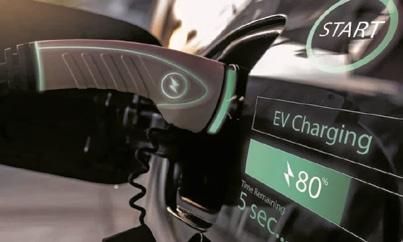
One must understand that the E-mobility space as an ecosystem is completely different to the current automobile setup. Electric vehicles provide a boost to IoT, as they form a large, connected network of things, including automobiles, charging stations, smart meters, intelligent electronic devices (IEDs), and phasor measurement units (PMUs). Numerous sensors found in EVs collect data on user driving habits, battery security through a battery management system (BMS), and grid charge management through charging stations. The charging and discharging patterns are closely correlated with the functionality, security, and effectiveness of the smart grid in the case of EV grid integration (EVGI). Data analytics are therefore essential to EVGI, green smart cities, and other green infrastructure. Particularly, efficient and dependable data analytics methods are needed for EV synchronization and charging planning to sell power back to the grid. In addition, connected and semi-autonomous EVs need data to operate safely and effectively. And with millions of EVs predicted to be on the road over the next ten years, “highways of data” are being built.
Data is also crucial to improve the user experience and that is why original equipment manufacturers (OEMs) collect data generated by the vehicle. This is comparable to how apps and search engines get better over time as they collect more user data. The majority of the data consists of driving-related sensory and diagnostic data, but the integration of more mobility and digital services has led to an increase in the amount of extra data that the automobile is gathering. As the auto industry grows, automakers are using and analyzing that data to design and integrate advanced technology to ensure a seamless and next-generation driving experience.
CAPTURING, EVALUATING, AND STORING DATA WILL BE KEY
Counterpoint Research projects that a minimum of 2TB to up to 11TB storage over the next decade will be needed to support in-vehicle storage at different autonomy levels. It’s crucial for OEMs to carefully assess their data strategy in advance in light of the EV revolution and avoid treating storage as an afterthought. For various use cases, there are a range of demands and difficulties related to car storage. Data storage, for instance, must be able to function irrespective of the weather or temperature, be it freezing winters or broiling summers. An automobile’s dashboard and safety systems must work properly no matter the conditions, including weather, climate, or road surface. Additionally, certain data in the connected automobile is only maintained for a brief period, whilst other data must be kept for days, months, or even years. As a result, there is a need for various storage interfaces, performance, and endurance levels, including removable SDTM cards, BGA packed e.MMC, UFS, and NVMeTM SSDs, and so on. Applications, sensors, and cameras will continue to expand in quantity and variety, requiring routine upkeep and updating throughout the course of a car’s existence. It is typical for connected vehicles to be built with the ability to send operating data from onboard systems to the cloud as well as receive updates, such as feature upgrades and security patches, over the air (OTA). This indicates that with connected and now electric cars, the significance of data and data storage will only increase. To provide solutions that meet the evolving needs of the automotive industry, the storage sector must keep innovating.
60 EQ JUNE 2023 www.EQMagPro.com ELECTRIC
VEHICLE
THE EASIEST WAY TO GET A $7,500 TAX CREDIT FOR AN ELECTRIC VEHICLE? CONSIDER LEASING
Thanks to a boost from the government, leasing — not buying — is becoming the most affordable way to get your hands on an electric vehicle.
Last year’s Inflation Reduction Act provided a federal tax credit of up to $7,500 to use toward an EV. Under the rules, a dealer can apply that credit to any leased electric vehicle, no matter where it’s made, to reduce a customer’s monthly payment. Not so for people who buy an EV. For buyers, only EVs made in North America qualify for the full tax credit. And only 10 of the 49 electric vehicles for sale in the United States this year meet that requirement. Even then, the EV must contain certain percentages of battery parts from the United States or countries with which it has a trade deal for the buyer to receive a full $7,500 credit.
WHY THE DISTINCTION BETWEEN LEASED AND PURCHASES VEHICLES?

The Treasury Department says that in establishing the tax credit, Congress classified leased — but not purchased — EVs as “commercial” vehicles. Under the law, commercial vehicles are exempt from the North America manufacturing and battery-content requirements. The result is that people who lease enjoy a much wider selection of EVs that qualify for the $7,500 credit.
Lease affordability has surpassed purchase affordability” in a J.D. Power index that includes total cost of ownership, said Elizabeth Krear, vice president of the EV practice at J.D. Power.



Many consumers have become aware of the difference and are capitalizing on it. In April, Krear said, leases accounted for 41% of all U.S. EV deliveries — four times the percentage in December, before the new rules took effect.
Geoff Pohanka, president of a 21-dealership group in Maryland, Virginia and Texas, said he is anticipating an increase in leasing. Buyers, he predicts, will increasingly recognize that the tax credit will help defray the typically substantial cost difference between an EV and a similar gas-powered vehicle. “It definitely makes sense,” he said. “Incentives can move the market if that narrows the affordability issue between gas and electric cars.”

www.EQMagPro.com 61 EQ JUNE 2023 ELECTRIC VEHICLE
ELECTRIC VEHICLE

Pohanka, whose group sells vehicles from multiple automakers, said the tax credits have just begun to lower the cost of leasing. Still, the rules governing the credit are complex enough that some buyers appear unsure if they would qualify for it. The rules not only make distinctions between leased and purchased vehicles. They also include income thresholds that disqualify some buyers.
To qualify for the tax credit, a car cannot cost more than $55,000. SUVs, pickups and vans can’t exceed $80,000. And a buyer’s gross income must be no more $150,000 if single, $300,000 if filing jointly and $225,000 if head of a household. Given the confusion he has noticed among customers about qualifying for the tax credit, Pohanka said some EVs are sitting longer on dealer lots than they otherwise would. “This disruption, I think, is very damaging to the momentum on electric vehicles,” he said.

Critics, including some lawmakers on Capitol Hill, say they regard the Treasury rules that allow many leased, but not purchased, EVs to receive the full tax credit to be an unfair loophole. They argue that it benefits automakers that produce all their vehicles overseas and have yet to build EV and battery factories in the United States. These foreign manufacturers, they say, can devote themselves to leasing EVs in the United States at the expense of domestic automakers. Sen. Joe Manchin, a West Virginia Democrat and a key author of the tax-credit language, wanted the North American manufacturing requirement to help boost U.S. manufacturing jobs. He included the battery requirements to incentivize companies to build a domestic EV supply chain. But Manchin says the Biden administration is circumventing the law’s intent by allowing tax credits for vehicles manufactured overseas. “The administration continues to ignore the purpose of the law, which is to bring manufacturing back to America and ensure we have reliable and secure supply chains,” he said in a statement.
Foreign automakers had complained that they were excluded from the tax credit for buyers despite doing what the bill intended — building U.S. battery and assembly plants. The Treasury Department denies creating a loophole and says it was Congress that exempted commercial vehicles from the manufacturing and battery requirements. When a dealer buys a vehicle and leases it to someone, it amounts to a commercial transaction. The dealer or a finance company receives the tax credit and retains ownership of the vehicle.
Eligibility for the commercial vehicle credit is a straightforward reading of the Inflation Reduction Act as written by Congress and application of longstanding tax law regarding leased assets, Ashley Schapitl, a spokeswoman, wrote in a statement. “There was no room for Treasury interpretation.”
Hyundai, with three EV models made in South Korea and for sale in the United States, is among the beneficiaries of the leasing provision. A spokesman for the Korean automaker said that leases amounted to 30% of its U.S. EV deliveries in the United States from January through March. In 2022, that proportion was only 5%. The average monthly ownership cost on an EV leased for three years has dropped $403 since December, largely because of the tax credits, J.D. Power found. By contrast, for an EV purchase financed over five years, the average monthly cost has declined by only $118. Hyundai is offering to lease an Ioniq 5 SE rear-wheel-drive EV for $499 a month for three years, though the customer must put down nearly $4,000. Buying the same EV would cost $865 a month for five years at the average new-auto loan rate of 7%. Though it may be cheaper, leasing won’t fit into everyone’s financial plans. Unlike with a purchase, monthly payments don’t end when a loan is paid off. Experts note, too, that not everyone who leases an EV will receive the tax credit, even if they qualify for it. The automakers and dealers are allowed to decide whether to pass along the tax credit to their customers; they aren’t required to do so. Krear said some companies are passing the entire $7,500 credit on to qualifying consumers, thereby reducing their monthly payments. Others are passing on only a portion of it. Eventually, as automakers make adjustments to comply with the North American manufacturing and battery-composition requirements, buying an EV could cost less than leasing over the long run, Krear said, though there are too many variables to predict when that might happen.
“At that time, it will be a different playing field,” she said.
Source: AP
MPHASIS PLEDGES TO BE CARBON NEUTRAL BY 2030


Mphasis, an Information Technology (IT) solutions provider specializing in cloud and cognitive services, announced a pledge to eliminate CO2e emissions from its facilities and operations to become carbon-neutral by 2030. Mphasis believes carbon neutrality is an important driver of value creation and will aim to achieve its goal by implementing a well-defined energy management plan to minimize energy consumption, integrate renewable energy sources, and implement energy-efficient practices.
The company has undertaken a high-level assessment to assess the potential impact of climate risk on its business and supply chain. Mphasis has also set a year-on-year target for the reduction of energy consumption by 5% and carbon footprint by 1% and is consistently working towards achieving the same. The company has also established a governance mechanism, to monitor and evaluate progress toward achieving its ESG objectives.


We continue to see the benefits of global decarbonization. At Mphasis we are committed to reaching net-zero emissions and executing our goals guided by climate science to drive value by investing in renewable energy, efficient waste and water management, and other green initiatives., said Nitin Rakesh, Chief Executive Officer, and Managing Director, Mphasis.

At Blackstone, we believe that helping our portfolio companies advance their decarbonization practices can build stronger, more resilient businesses. It is encouraging to see Mphasis make this pledge, said Amit Dixit, Head of Private Equity Asia, Blackstone.
Specific initiatives undertaken by Mphasis to prioritize net zero include:
• Reduce greenhouse gas emissions: Mphasis has discarded old air conditioning units with R22 refrigerants that are not ozone friendly are discarded and replaced with new air conditioning units with refrigerants R407c and R410a which are non-ozone depleting gasses. Resulting in greenhouse gasses emissions reduction by 55% approximately from the year 2015.
• Environmental footprint: Mphasis has been tracking its Carbon Footprint for the past 10 years, as of now the carbon footprint has reduced by 53.75% from the year 2015.
• Reduction in energy consumption: Energy consumption are being tracked for the past 15 years, and as of now energy consumption has been reduced by 47.73% from the year 2015.
Mphasis also has expanded its services by partnering with clients and utilizing technology such as AI/ML, blockchain technology, and quantum computing to boost efficiency, reduce energy consumption, and lower carbon emissions from their operations. As Mphasis’ Go-to-market (GTM) strategy, the company supports clients on their ESG journey in industries such as BFSI, Logistics, and Travel and offers solutions such as Green UW & Loan Lifecycle Management, Data Management & Dashboarding, AI/ML in scenario analysis to build forecasting & impact analysis models for investments & fund deployment for ESG factors.
Mphasis is committing to LEED certification for the new facilities that come up during future projects. All Mphasis facilities have also resorted to using 100% biodegradable plastic garbage bags to collect and dispose of wet waste. Mphasis has also ensured recycling of paper and E-waste to decrease and eliminate waste to achieve sustainable management processes.
www.EQMagPro.com 63 EQ JUNE 2023
DECARBONISATION
RENAULT NISSAN AUTOMOTIVE INDIA PVT LTD (RNAIPL)

ACCELERATES PROGRESS TOWARDS 2045 CARBON NEUTRALITY GOAL

• Three pillared sustainability strategy saves 87,500 tons of Co2 emissions every year

• Automotive manufacturer will be water positive by 2030
• Working towards 85% renewable energy to make cars by 2030, 100% by 2045.
• Plant has already initiated campaign to replace banned single use plastic items with eco-friendly alternatives
Ahead of World Environment Day 2023, Renault Nissan Automotive Pvt Ltd (RNAIPL) has announced that it is making strong progress towards its 2045 Carbon Neutrality goal unveiled in February this year and that it will be crossing several important sustainability milestones by the year 2030. RNAIPL’s carbon neutrality roadmap encompasses three key pathways: Increasing the share of green energy in the overall mix, aggressively improving efficiencies in energy usage and continuous adoption of energy efficient technology at its Oragadam, plant. The strategy has already allowed the automaker to cut down the equivalent of 87,500 tons of CO2 emissions every year as of FY 2022-23.
Keerthi Prakash, Managing Director of RNAIPL, commented: “At RNAIPL, our unwavering commitment to environmental responsibility is imprinted in everything we do. We have set ourselves on an ambitious roadmap to Carbon Neutrality by 2045 and this goal underlies our drive towards utilization of more green energy, optimization of energy consumption and upgrading our technology. RNAIPL is a leader in energy efficiency and sustainability actions within the global network of manufacturing facilities within the Renault Nissan Alliance and we aim to further consolidate this position not only within the Alliance, but also within the industry.
“RNAIPL is also committed to shaping a more sustainable future for our communities and a number of our Corporate Social Responsibility programmes work towards this goal, including our ambitious project to rejuvenate water bodies. We are shaping a future where our actions today define the legacy we leave for generations to come,” he further added.
64 EQ JUNE 2023 www.EQMagPro.com DECARBONISATION
POWERING PLANT OPERATIONS WITH MORE GREEN ENERGY
RNAIPL currently sources close to 60% of its electricity from renewable sources such as solar, biomass and wind. Taking its clean energy commitment further, the plant will expand its in-house solar plant capacity from 2.2MW to 14MW through additional installation of rooftop solar panels and innovative floating solar panels on the plant’s pond by 2026. By leveraging renewable energy sources, RNAIPL is working towards meeting 85% of the plant’s energy needs with renewable power by 2030, and transition to 100% renewable energy by 2045.
WATER POSITIVE BY 2030
Already acknowledged as the plant that is least dependent on external water sources in the global Renault Nissan Alliance thanks to its rainwater harvesting and water recycling infrastructure, RNAIPL is set to become water-positive by 2030. RNAIPL currently meets 85% of its total water needs from its rainwater harvesting ponds developed within the premises. The plant is also a Zero Discharge plant, recycling and reusing wastewater for industrial process and a variety of uses including gardening. RNAIPL plans to further enhance water efficiency through upgraded plumbing designs, water audits, and stringent monitoring, and is targeting a 21% reduction in water use by 2030 as compared to FY 2022-23 levels. Within the community, in addition to the 10 lakes and ponds that it has already committed to rejuvenate, RNAIPL will further explore opportunities to create new water bodies and will also build direct groundwater recharging pits to improve water tables in what is a water stressed region. Supplemented with its tree planting initiatives, these actions will enable RNAIPL to facilitate return of more water into the environment than it consumes for its operations, becoming water positive by 2030.
ALTERNATIVES TO SINGLE USE PLASTIC
Over the last few years, RNAIPL has already been working on a set of initiatives to replace single use plastic items from within the plant with eco-friendly alternatives as per norms laid out by
the government. The company also conducts regular employee campaigns to increase awareness on the drawbacks and environmental harm caused by use of single use plastic.
PLANT-WIDE ENERGY EFFICIENCY INITIATIVES
Since the start of car production in FY 2010, the plant has achieved a remarkable 36% reduction in energy use. It has achieved this impressive result through a series of plantwide conservation techniques and technology upgrades. Some of these initiatives include the following:
· Intelligent flow controllers for air compressor systems to reduce energy consumption saving 800 tons of CO2 emissions annually.
· Upgrading shop infrastructure with LED lighting
· Implementation of zero energy days and close monitoring of energy consumption on other holidays
· Standardized stickering of equipment across the plant for optimal use and energy conservation
· Upgrading to energy efficient equipment such as BLDC Blowers, Compact Ejectors, VFD for Pumps and Motors
· Installation of water source heat pump as an alternative to LPG based hot water generator at the Paint shop and using both the hot and cold water (byproduct) for industrial processes resulting in 6% reduction of Co2 emissions.
By 2030, the plant aims to reduce the amount of energy required to manufacture a car by 20% (as compared to 2019 energy baseline) and reduce this further by 30% by 2045.By implementing its comprehensive roadmap, RNAIPL is confident of achieving its 2030 sustainability goals, setting it on course to reach carbon neutrality by 2045. The plant’s commitment to energy and resource reduction, renewable energy integration, and technological advancements will continue to position RNAIPL as a leading player in sustainable manufacturing.
Source: PTI
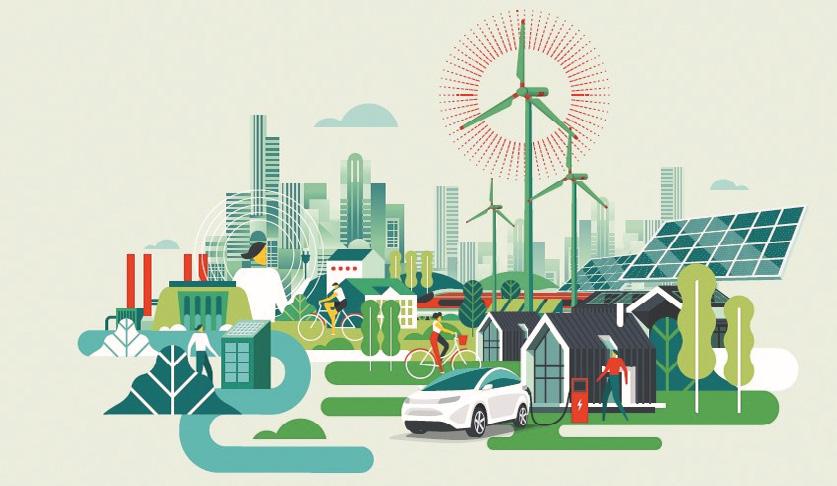
DECARBONISATION
EXPONENTIAL RISE TO $1.8B IN ENERGY STORAGE TECHNOLOGY INVESTMENT TRUE LONG-DURATION STORAGE NOW CLOSER TO MARKET REALITY, SAYS CLEANTECH GROUP

Over 10 developers of energy storage technologies are poised for commercialization as early as 2025, as technological innovation and business models converge on the “sweet spot” of 10-12 hours of storage, according to a study by the Cleantech Group.

The imminent advance is the result of steady investment in energy storage over the past decade, capped by an exponential rise to $1.8 billion last year, emergence of a handful of technologies, such as flow batteries, thermal, mechanical storage and hydrogen, and ambitious net-zero targets.
The emergence of support schemes like the Inflation Reduction Act (IRA) in the U.S., carbon prices of $100/tCO2 in the European market and increasing penetration of renewables have created a fertile ground for developing new LDES solutions, said Selene Law, Senior Associate, Energy & Power.

KEY FINDINGS:
• Varied tech needs. Innovation has focused on improving efficiency using brownfield infrastructure and common materials. Simultaneously, it is shaped by geographies. For example, mechanical storage would be suitable for countries with abundant land and high solar penetration, whereas hydrogen would be appropriate for areas focused on wind energy with salt caverns available.
• MIT startup ahead. Form Energy, a startup spun out of the prestigious MIT with technology to make batteries using iron, has attracted the most investment in energy storage — raising nearly $800 million over the past two years.
• Four startups show promise. Energy Dome, Antora Energy, Rondo and Energy Vault are among LDES startups braving high development costs and stiff competition from incumbent publicly traded companies. Each has raised substantial amounts over the last few years. Energy Dome leads the pack with a successful demonstration in under three years.
• EU shows only limited policy support. EU’s Electricity Market Reform or RePowerEU, the European Commission’s plan to make the region free from Russian fossil fuels before 2030, has provided little policy support to LDES. Still, high power prices support higher storage costs, offering market opportunities.
• Global leaders. Spain, Canada and Australia are among leaders outside the U.S. Spain has set a target of 20 GW in grid-scale storage by 2030, while Canada aims for 12 GW. In Australia, the province of New South Wales is targeting 2 GW, while the country’s Renewable Energy Agency is funding eight storage projects to come online by 2025.
66 EQ JUNE 2023 www.EQMagPro.com
ENERGY STORAGE
INDIA TO OFFER $455 MLN IN INCENTIVES FOR BATTERY STORAGE PROJECTS
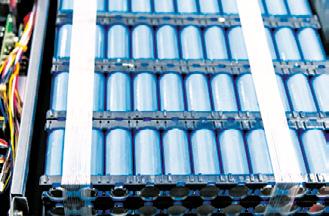
The scheme is intended to boost battery storage projects critical to India’s ambitious plan to expand its renewable energy capacity to 500 gigawatts (GW) by 2030 and cut the cost of battery energy storage from the current 5.5-6.5 rupees per unit.
India will offer 37.6 billion rupees ($455.2 million) in incentives to companies setting up battery storage projects totalling 4,000 megawatt hours (MWh) under a scheme announced earlier this year, two government sources said. The scheme is intended to boost battery storage projects critical to India’s ambitious plan to expand its renewable energy capacity to 500 gigawatts (GW) by 2030 and cut the cost of battery energy storage from the current 5.5-6.5 rupees per unit. Battery storage, used to back up intermittent renewable power supply to stabilise the grid, is an evolving technology, and there are very few large-scale operational projects in the world. The scheme intends to develop large-scale battery energy storage systems to bring down costs through competitive bidding. The government will provide so-called viability gap funding – incentives to cover risks of developers of critical infrastructure projects that are or may turn out to be economically unviable – in the form of grants for three years, the sources said. It also expects private investments worth 56 billion rupees through the scheme. The disbursement of the contracts will be made in five tranches until 2030-31, one of the sources said, requesting anonymity since the proposal is not yet public and needs federal cabinet approval. Contracts will be awarded through a competitive process, with the company with lowest bid selected, they said. India’s power ministry did not respond to a request for comment.
A number of Indian conglomerates including Reliance Industries, Adani Power and JSW Energy have plans to set up large-scale battery plants. The proposal, announced by Finance Minister Nirmala Sitharaman in her budget speech on Feb. 1, will next be taken up for decision by the country’s cabinet headed by Prime Minister Narendra Modi. No timeline for the approval has yet been given. India has 37 MWh of battery storage capacity currently. According to estimates from its power sector planning body, it requires 236 gigawatt hours (GWh) of battery energy storage in addition to 27 GW pump storage projects by 2031-32.
APPROXIMATELY 5 GW OF PUMPED HYDRO ENERGY STORAGE IS EXPECTED IN THE NEXT FIVE YEARS: CRISIL RATINGS

The guidelines call for the rental of land at discounted rates on a yearly basis. They also permit the use of depleted mines for PHES projects and offer a oneyear extension for projects whose construction is put off while awaiting forest and environmental clearance. The Ministry of New and Renewable Energy estimates that 5 GW of PHES capacity will likely be installed over the next five fiscal years, of that, 2.8 GW is under construction, and the remaining may be added at potential sites, totalling 29.9 GW. Furthermore, according to Crisil Ratings, infrastructure investments in storage are essential given the growing proportion of renewable energy produced outside of peak times. The MoP guidelines provide a special emphasis on PHES projects due to their advantages over battery energy storage systems (BESS), including their approximate 50-year project life without considerable maintenance expenses, low residual waste generation, and extended storage times without much discharge.
By providing ancillary services like reactive assistance and peak hour shaving, which have the potential to enhance cash flow by around 5% yearly, the guidelines open the door for PHES projects to increase income streams. Moreover, PHES now has a 5 GW operational capacity, which was mostly set up by the federal, state, and local governments and their agencies. They have a combination of independent reservoirs and dam connections.
Source: PTI
www.EQMagPro.com 67 EQ JUNE 2023
ENERGY STORAGE
According to credit rating agency Crisil, in the next five fiscal years, pumped hydro energy storage (PHES) projects would add around 5 GW of capacity as a result of the Ministry of Power’s (MoP) latest guidelines.
LONG-DURATION ENERGY STORAGE IS KEY TO CLEANING UP THE POWER GRID
When reading about energy storage you may come across terms like long-term storage, seasonal storage, diurnal storage, or long-duration storage. Long-term storage can include seasonal energy storage, which can shift delivery of power to a different time of year. Diurnal storage can shift power delivery over a few days. And, long-duration storage is particularly important for the power grid’s transformation to clean energy and what I’m focusing on here.
Long-duration refers to the amount of time a power system can discharge electricity. That is to say, once a battery is fully charged, the duration is equal to the number of hours that it can deliver power at a certain power capacity. This is different from long-term storage, which refers to the amount of time a system can store energy before discharging it. As large amounts of wind and solar resources are connected to the grid, long-duration energy storage could prevent curtailment of renewable energy sources resources during periods of excess generation. Curtailment occurs when the transmission grid is overloaded and unable to absorb all the clean and affordable electricity being produced. This results in a deliberate reduction of electricity output. Energy storage can alleviate curtailment by facilitating the efficient use of clean energy resources so that extra production can be stored and used when it’s most needed. As renewable deployment increases, the grid flexibility provided by longduration energy storage will become more relevant and useful. Long-duration storage could also offer greater grid flexibility because it can store large amounts of energy. A long-duration storage system can charge when electricity demand is low and discharge later when it is most needed. When transmission systems need costly upgrades, energy storage can be deployed to help with these services instead. Longer duration systems can further extend the life of transmission equipment by operating more frequently and for longer periods. As extreme weather events and outages become longer and more frequent, long duration discharges could better accommodate turbulent grid conditions and offer greater resiliency.
Long-duration energy storage is assumed to have full capacity value since it could discharge for up to a day. The capacity contribution of a resource determines how much that resource counts towards resource adequacy requirements. The marginal effective load carrying capacity (ELCC) for storage under 12-16 hours would likely still decline over the course of increasing storage deployment, but not as rapidly as shortduration storage. (Read this post by my colleague Mark Specht for a full rundown on what ELCC is and why it matters.)
HOW LONG IS LONG-DURATION?
There is no single definition of “long duration”, but according to the National Renewable Energy Laboratory (NREL), the most commonly cited number is 10+ hours. NREL also states that context around application is important when discussing what is meant by “long duration.” For example, a 6-hour battery might be able to provide firm capacity–the ability to meet peak demand and cover any other adverse conditions like blackouts–in some situations, while in others, a storage system with 100 hours of duration might be more necessary. Just like short-duration energy storage, long-duration energy storage technologies come in many forms and chemistries. The most common types are thermal, electrochemical, and mechanical. Because long-duration energy storage is gaining a lot of recent attention, the landscape of technologies is constantly changing.
Long-duration energy storage technologies can be categorized by their physical attributes as well as their respective capabilities such as round-trip efficiency (RTE) and technology readiness level (TRL), and whether they have geologic constraints, which can provide some indication as to the best suitable applications for each technology. Source: Department of Energy, Pathways to Commercial Liftoff.
Can’t grid operators and utilities just pick the best long-duration energy storage technology that is readily available and use that?
Yes and no.
There are tradeoffs with different technologies. Pumped hydro storage, which has been around for a long time, has relatively good efficiency and isn’t as expensive as some other options, but there are limits to where we can build this type of system and environmental impacts to consider. (A huge dam probably won’t be appearing in the middle of Times Square any time soon!) An electrochemical system like a metalanode battery has fewer siting limits, but right now it’s expensive and hasn’t been deployed as much as older technologies. As technology providers continue to test their long-duration energy storage systems in different scenarios we’ll likely see some “weeding out” of the technologies that don’t keep up. (Read this blog post by my colleague Guillermo Pereira to understand how important pilot projects can be.)
HAVING A VARIETY OF LONG-DURATION ENERGY STORAGE OPTIONS IS HELPFUL
One advantage of having a power grid with different long-duration energy storage options is that it allows for a more diverse supply chain, potentially alleviating some supply constraints that arise when only sourcing for one specific chemistry. Lithium-ion batteries are currently a hot topic of conversation because of the huge demand for the materials that make it up like lithium, nickel, and sometimes cobalt. This growing demand plus the fact that these materials are finite, create a market for supplies that becomes constrained. With this in mind, further development of long-duration energy storage should consider what other options are out there that use abundant materials and result in a sustainable supply chain. It is important to explore the landscape of technologies available in order to best meet the grid’s needs and make the transition to renewable energy. Deployed energy storage capacity will continue to grow significantly over the next few decades. Over time, longer duration technologies will be deployed as these options develop and (hopefully) become more cost-effective. A quick snapshot of energy storage, using some of NREL’s data, shows us that
68 EQ JUNE 2023 www.EQMagPro.com ENERGY STORAGE
12-hour pumped-hydro storage has dominated the U.S. storage market for a long time. Over time, more batteries of varying sizes have come online. As the need for storage increases, longer duration options are deployed. By 2050, NREL expects around 9.5 gigawatts of 10-hour battery storage to be deployed. That’s enough to power over 7 million homes for, well, 10 hours!
CHALLENGES AHEAD FOR LONG-DURATION ENERGY STORAGE
This type of energy storage can sound like an ideal solution for many of our grid needs. Because renewable sources like solar and wind are not always available at night or when the wind isn’t blowing, renewables are often critiqued for how well they can (or can’t) be dispatched—that is, for their ability to be turned on and off to supply power on demand. With energy storage, the energy harnessed by renewable resources can be stored and used on demand. But right now, long-duration energy storage is not yet the magic bullet we wish we had. As we saw above, many promising long-duration energy storage technologies are still emerging and maturing and are not yet commercially available. What this usually means is that, for the time being, they are expensive and may lack confidence from investors, developers, or utilities in real-world scenarios. Regulatory bodies like state public utility commissions may hesitate to approve projects that take on a large cost with technologies that have yet to be field-tested as much as some other alternatives.
In addition to that, energy storage is not a resource that has been very well-defined across energy entities like utilities, regional transmission organizations (RTOs), or the power industry in general. Energy storage is not treated the same as solar or wind, and without standardized definitions and understanding of its value, it can be tricky to figure out exactly how to use it. Long-duration energy storage is not just a shiny and exciting discussion topic. It’s a resource that can help usher in very significant amounts of reliable and resilient clean energy for our planet. It can work together with renewable energy to deliver power when we need it most, and conserve it when we have plenty of sun and wind to go around. As energy demand grows across sectors of our economy, it’s crucial that we understand the key role long-duration energy storage can play in reducing the energy industry’s reliance on fossil fuels and meet our needs with solutions that are better for our communities and our planet.
THE NEW IRON AGE: THE POTENTIAL OF AFFORDABLE, SAFE, AND CLEAN ENERGY STORAGE
The United States is accelerating into the sustainable energy transition, aided by the landmark Inflation Reduction Act (P.L. 117-169) (IRA) and the Infrastructure Investment and Jobs Act (P.L. 117-58) (IIJA), which provide billions of dollars in funding for renewable and clean energy development, as well as tax credits and incentives that prioritize environmental and equity-focused projects. The United States is positioned to massively expand its renewable energy industry. But in order to build out U.S. renewable infrastructure to its fullest potential, we will need to better address energy storage. Iron-air and iron-flow batteries are promising solutions with the potential to help renewable energy truly scale up.
One challenge facing the energy transition is that several key forms of renewable energy rely on intermittent natural conditions, such as sunlight or wind, to generate energy. These sources are often referred to as variable renewable energy, or VRE. Although renewable energy sources are plentiful, until recently, there were few promising ways to store excess energy produced by wind or solar for later use. Now, batteries based on abundant and safe iron can offer reliable storage to meet growing energy needs.
AN ENERGY STORAGE SOLUTION: IRON-AIR AND IRON-FLOW
Utilities are working with companies like Tesla to install lithium-ion batteries to provide storage for the grid; however, these batteries provide only short bursts of charge, generally storing enough electricity to discharge for about four hours. The electric grid, which needs reliable access to electricity 24/7 regardless of active production, needs greater storage capacity if it is to be powered by intermittent renewables. Iron-flow batteries are one possible solution. They operate by moving two electrolyte solutions across a carbon membrane, which generates electricity. The iron-flow batteries currently on the market, like those developed by ESS, can provide between six and twelve hours of storage and so occupy the niche of inter-day storage. This timeframe is ideal for addressing a renewable energy issue known as the “duck curve,” which refers to the mismatch between solar energy production and peak energy demand. Solar production is highest when the sun is shining and demand is relatively low (during temperate days). In the evenings, demand skyrockets but
solar production stops. This creates a challenge for the renewable energy industry, one that ESS believes ironflow batteries can solve. While iron-flow batteries could play an important role by providing a safer and more affordable mode of inter-day storage, a truly resilient electric grid needs to be able to store days of energy. Multiday storage would ensure that power can be maintained through periods of low energy production, for example during severe weather or following a disaster.
Iron-air batteries, like those produced by Boston-based battery company Form Energy, can store 100 hours of energy, providing coverage for a days-long gap in renewable energy production. Iron-air batteries use a process called “reversible rusting” to store electricity, converting iron into rust and rust back into iron in a cycle that can store an electrical current. The batteries first absorb air, causing the iron they contain to rust. The chemical reaction that creates rust also generates electricity, which can be dispatched as needed. Reversing the current (i.e., recharging the batteries) turns the rust back into iron, readying the system for another round. Lithium-ion batteries overtook iron-air as the default battery technology because they can be made much smaller. Lithium-ion batteries power most phones, laptops, electric vehicles, and more. They can pack a big punch in a small package, making them an attractive part of the ongoing charge towards electrification. Nevertheless, iron-air batteries may be poised to fill a key electrification need by providing reliable, safe, multi-day storage that can easily plug into existing grid infrastructure. That is because iron has several advantages compared to lithium.
www.EQMagPro.com 69 EQ JUNE 2023 ENERGY STORAGE
Source: ucsusa
ENERGY STORAGE
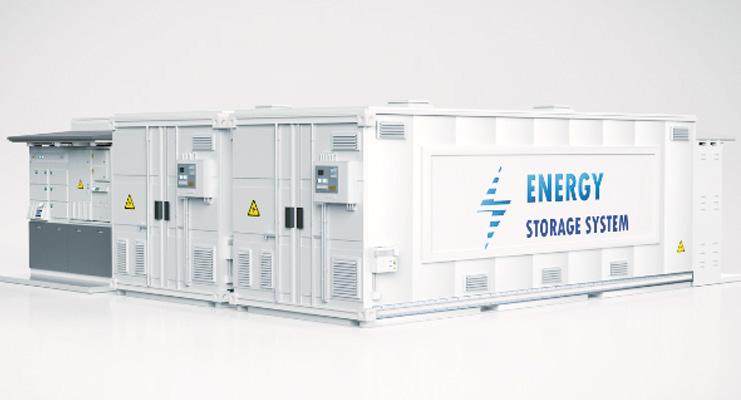
THE IRON ADVANTAGE
In addition to being able to store less energy than iron-based alternatives, lithium-ion batteries have other requirements that make them less-than-ideal for grid storage applications. Above all, lithium-ion batteries need lithium, which does not come cheap. Lithium is comparatively rare and is in high and growing demand, as the production of electric vehicles increases dramatically. Lithium demand is set to skyrocket even further with the Biden-Harris Administration’s goal of making 50 percent of new vehicle sales electric by 2030. Using iron-air batteries in place of lithium-based batteries in grid storage could help take some of the stress off the supply chain since iron-based batteries do not require lithium. Another attractive aspect to iron-based batteries is that their iron could potentially be sourced and processed in the United States. Working to strengthen domestic supply chains is a priority of the Biden-Harris Administration, as evidenced in the IRA guidelines that increase tax benefits for manufacturers meeting domestic sourcing criteria. In an interview with EESI, ESS Director of Corporate Communications Morgan Pitts noted that over 80 percent of the company’s materials by volume are domestically sourced, and 100 percent of its production is domestic. Form Energy is set to install its first commercial-scale project in Minnesota, which has an abundant supply of iron. According to Form CEO Mateo Jaramillo, the state’s iron deposits were an exciting benefit to their site choice. Jaramillo writes that Form Energy is “very actively investigating what it would be like to use [Minnesota iron] as a resource.” Iron-air and iron-flow batteries offer the opportunity to prioritize U.S. sourcing, production, and labor in the transition to renewable energy.
Unlike iron-flow batteries, lithium-ion batteries require precise temperature regulation to function, losing significant efficiency after temperatures rise above 77 degrees Fahrenheit. For states with hot summers, this necessitates the installation of expensive cooling equipment in battery storage facilities. On top of adding to the economic cost, air conditioning contributes to energy consumption and can increase pollution from carbon-emitting energy sources. According to ESS, iron-flow batteries function efficiently in a much wider temperature range of 23 to 104 degrees Fahrenheit, making them ideal for installation in outdoor environments while also
avoiding the financial and environmental costs of temperature regulation. This advantage will become even more important as climate change triggers rising temperatures across the United States. Another benefit of iron-based batteries is their safety. The electrolyte solution in iron-flow batteries, for example, has a pH comparable to wine, and the batteries pose no risk of combustion. Furthermore, the materials used are highly recyclable. The nature of iron-based batteries means that they have a much longer lifespan than lithium-ion batteries, which degrade quickly after four to seven years of use. ESS batteries have a lifespan of 25 years and, in theory, the iron and electrolyte solutions could be reused indefinitely. By contrast, lithium-ion batteries require specialized disposal to avoid potential combustion, creating an additional cost to energy suppliers and potentially polluting nearby environments.
THE FUTURE OF IRON BATTERIES
While iron-based batteries offer promising potential, they are still a developing technology, and therefore require support for research and effective implementation. Federal funding has already helped iron battery development, with the Advanced Research Projects Agency-Energy (ARPA-E) having funded ESS research into using iron slurry for a longer-duration battery. In an email with EESI, Morgan Pitts said that the collaboration between ESS and ARPA-E “played a key role” in allowing the company to refine iron-flow technology and prepare for market-scale deployment. Continued federal support can help the United States harness this technological advancement in the development of renewable energy. The IRA and IIJA provide billions in funding to implement energy storage, with the IIJA designating $505 million specifically for energy storage, and the IRA creating an Energy Investment Tax Credit of 30 percent for energy storage. Directing this funding to prioritize safe, affordable, and domestically-sourced energy storage technology could boost the production and deployment of iron batteries, leading to potential benefits for U.S. markets, manufacturing, and most importantly, the climate.
Source: eesi
70 EQ JUNE 2023 www.EQMagPro.com
IH2A SUBMITS $5-BN PLAN FOR NATIONAL GREEN HYDROGEN HUB TO GOVT
The public-private plan seeks public finance support for green hydrogen production and offtake to create the necessary infrastructure in the initial 2024-2030 period, and publicly list the national hydrogen corporations created as a result to fund the next wave of investments to scale up the hydrogen economy. India is targeting 5 million tonnes of green hydrogen production by 2030. The National Green Hydrogen Hub Economic Viability and Development Plan was submitted by IH2A to the Prime Minister’s Office (PMO), Cabinet Secretariat and Ministry of New and Renewable Energy (MNRE) in the Government of India.
Jill Evanko, Chief Executive and President, Chart Industries, and founding member, IH2A, said the plan is a pathway for India to accelerate Green Hydrogen Hub development and create national infrastructure assets in a financially viable manner.

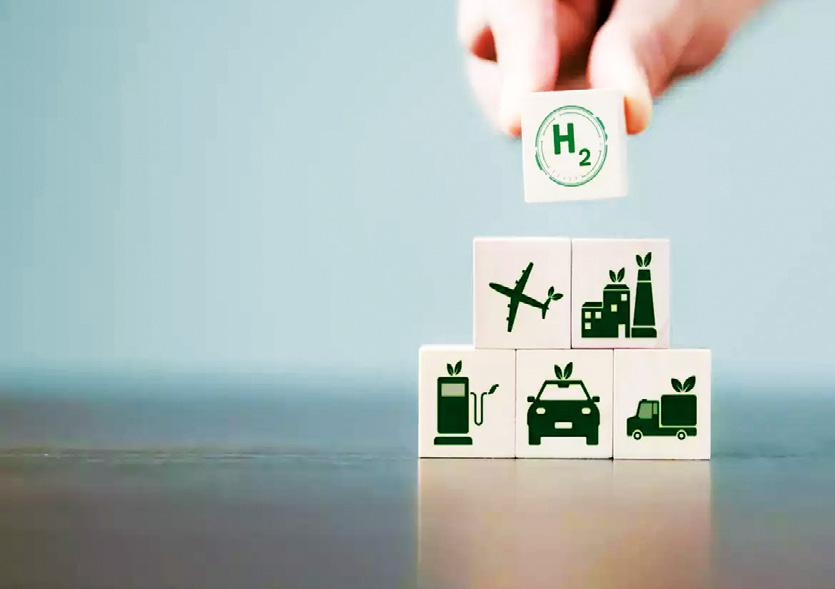
She said, “India can leapfrog other economies on green hydrogen development, by sharing the risks and rewards of green hydrogen project development between public and private sectors. Sustained public finance support for national hubs is crucial for financial viability. India should announce at least one of these large-scale green hydrogen hubs during the G20 Summit this year.
“The Indian government stands to gain significantly from this approach, which demonstrates how India can create a National Green Hydrogen Unicorn within next seven years.” The plan was prepared by starting with a reference economic model of the Green Kochi Hydrogen Hub (GKH2), as a 50:50 public-private Special Purpose Vehicle (SPV) with a 150MW electrolyser capacity, storage and evacuation infrastructure, renewable energy inputs, green ammonia production plants, and offtake by industrial and mobility users, with a $468m CAPEX outlay over a 20-year project period. It recommends similar large-scale Green Hydrogen Hubs to be developed in Gujarat, Maharashtra, Karnataka, Tamil Nadu and Andhra Pradesh.
Amrit Singh Deo, Senior Managing Director, FTI Consulting, and IH2A Secretariat lead, said, “The economic modelling is based on few assumptions regarding public finance incentives, renewable energy costs, end-use offtake and project structuring on a public-private partnership format. The model is replicable and demonstrates that a financially viable green hydrogen can be designed and built. The model can be supported with techno-commercial studies, and should accelerate project development.”

Source: h2-view


www.EQMagPro.com 71 EQ JUNE 2023
HYDROGEN
The India Hydrogen Alliance (IH2A) has submitted a National Green Hydrogen Hub Economic Viability and Development Plan to the government, with potential to create five large National Green Hydrogen Corporations collectively worth $5bn by 2030.
ENERGY DEPARTMENT UNVEILS PLAN USING HYDROGEN ENERGY TO CUT US EMISSIONS BY 10 PERCENT
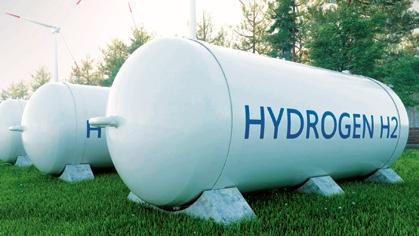
The Energy Department unveiled a roadmap it says will, using hydrogen energy, enable the U.S. to reduce its emissions by 10 percent in 2050, compared to 2005 levels.
The strategy document calls for specifically targeting hydrogen use in key industries, including chemicals, steel, refining and heavy transportation, where the energy source can have the greatest emissions reduction impact. It also outlines a need to make hydrogen energy cheaper and to focus on regional hubs. This type of energy is formed through processes that separate hydrogen from water molecules. It can be done using a variety of fuels, including renewable energy and fossil fuels. The strategy from the Biden administration focuses specifically on hydrogen energy that’s formed using carbon-free sources, which the administration is calling clean hydrogen. However, there has been some debate as to whether — to be truly clean — hydrogen plants need to use new sources of energy or if they can take electrons currently on the grid. Opponents of using existing energy argue doing so could result in existing energy being replaced with fossil power, but supporters say requiring new energy would be overly burdensome.
CENTRE TO SUPPORT SETTING UP OF PILOT PROJECTS USING GREEN HYDROGEN FOR STEEL MAKING

The domestic steel industry has sought financial support. The Centre will aid research and development (R&D) projects to set up pilot plants for the production and utilisation of green hydrogen in the iron and steel making processes, as per the Ministry of Steel.
Energy Secretary Jennifer Granholm demurred when asked to wade into that debate. “It’s a really important consideration, and it’s something that I know we’re weighing,” she said, adding that the administration is looking at the issue for a hydrogen hub program and for hydrogen tax credits in the Inflation Reduction Act.

“Treasury’s guidance hasn’t come out yet as you’re aware, and so that question about additionality will be part of it, and it’s a very important part because we want to make sure that truly we reduce CO2 emissions … so stay tuned,” she added, referring to a forthcoming tax credit guidance.
Source: PTI
Under the National Green Hydrogen Mission, Rs 455 crore has been earmarked to support the domestic steel industry towards finding scalable uses of hydrogen based on sustainable practices, which make up for the greater acceptability of green hydrogen. The move gains ground amidst stringent regulatory regimes around the world which make steel produced in India unviable to an extent due to higher duties imposed by the European countries, where steel manufactured through conventional practices result in higher emissions. Even as efforts are being made globally to use green hydrogen instead of coal in the direct reduction of iron for steel making. The domestic steel industry has sought financial support to make this transition successful.

72 EQ JUNE 2023 www.EQMagPro.com HYDROGEN
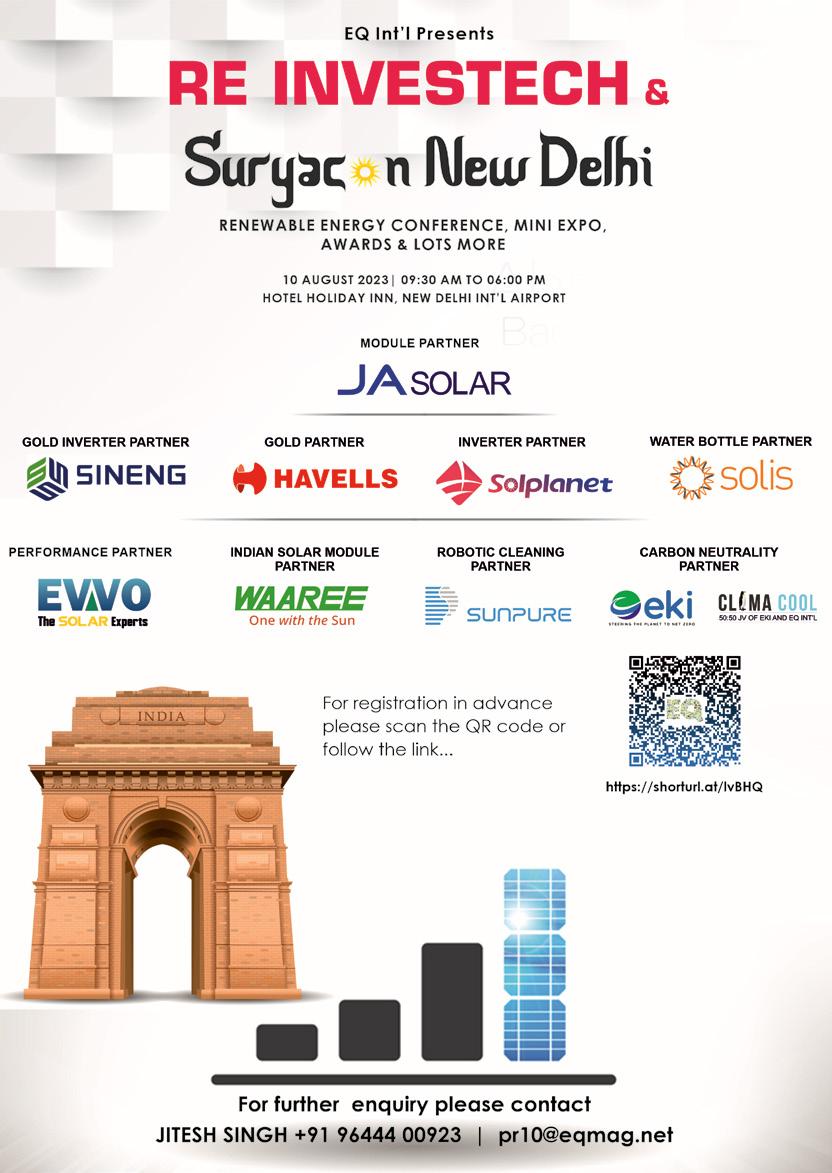
HYDROGEN


JAPAN EARMARKS $107 BILLION FOR DEVELOPING HYDROGEN ENERGY TO CUT EMISSIONS, STABILIZE SUPPLIES
Japan’s government adopted a revision to the country’s plans to use more hydrogen as fuel as part of the effort to reduce carbon emissions.
The plan sets an ambitious target to increase the annual supply by six times from the current level to 12 million tons by 2040. It also pledges 15 trillion yen ($107 billion) in funding from both private and public sources to build up hydrogen-related supply chains over the next 15 years. Japan’s decarbonization strategy centers on using so-called clean coal, hydrogen and nuclear energy to bridge its transition to renewable energy. Russia’s war on Ukraine has deepened concerns over energy security and complicated that effort, but other advanced Western nations are pushing for faster adoption of renewable energy, such as solar, wind and geothermal. Some experts say strategies like commercializing the use of hydrogen and ammonia mainly cater to big business interests and major industries that are heavily invested in fossil fuel-based technologies and have power over the government policies. The revised plan prioritizes nine strategic areas, including development of water electrolysis equipment, fuel storage batteries and large-size tankers for transporting hydrogen.
Hydrogen is an industrial sector that can make a triple achievement of decarbonization, stable energy supply and economic growth in one shot,” Chief Cabinet Secretary Hirokazu Matsuno said at the Cabinet meeting. “We will promote (hydrogen) on a large scale, both demand and supply.

Japan’s leaders say they want to turn the country into a “hydrogen society,” but the hydrogen industry is still in its initial stages. The government is still drafting legislation to support building necessary infrastructure and supply chains for commercial use of pure hydrogen and ammonia, another source of hydrogen.


At a hydrogen council meeting with industrial leaders last week, Prime Minister Fumio Kishida said Japan aims to achieve an “ Asian zero-emission community,” contributing Japanese technology in hydrogen, ammonia and other decarbonization technologies. “By setting an ambitious goal we aim to make our plans more predictable and encourage long-term investment in developing a large-scale hydrogen supply and demand,” Kishida said.
The Cabinet also approved an annual energy report saying that economic sanctions against Russia for its war on Ukraine have increased long-term competition for liquefied natural gas, forecasting that shortages could persist through 2025. European demand for LNG as an alternative to Russian natural gas has pushed LNG prices higher, making it necessary to draw up a long-term strategy for securing stable energy supplies. Japan adopted a so-called “green transformation” plan in February that calls for promotion of next-generation solar batteries, offshore wind power and renewed use of nuclear energy. Some experts say strategies like commercializing the use of hydrogen and ammonia mainly cater to big business interests and major industries that are heavily invested in fossil fuel-based technologies and have power over the government policies.
Source: AP
74 EQ JUNE 2023 www.EQMagPro.com

HYDROGEN
SHADES OF GRAY, BLUE AND GREEN: FUTURE OF (SUSTAINABLE)
HYDROGEN ECONOMY
There is a joke about hydrogen that has been doing the rounds for close to three decades now. It goes something like this: Hydrogen is only 10 years from commercialization. But then, it has always been 10 years away from commercialization. I believe this barb has outlived its relevance.
Why am I convinced that hydrogen has finally arrived? Chalk it down to a recent cross functional study on the ‘Future of Hydrogen Economy’ commissioned by, MarketsandMarkets which revealed some surprising (and not so surprising) findings about the opportunities and challenges linked to hydrogen commercialization. Upstream hydrogen generation reminds me of one of my favorite songs: Mambo No. 5, albeit instead of a little bit of Angela, Pamela, Sandra and Rita, you have a little bit of gray, blue and green hydrogen. Of these, gray hydrogen is the most widely produced because of its cost effectiveness and widespread availability. In 2022, around 92% of hydrogen (by value) was gray hydrogen, underlining global dependence on this carbon-intensive production process. By 2035, low to zero-carbon emitting blue and green hydrogen are expected to pick up pace and comprise about 22% of total hydrogen production. The global hydrogen generation market is expected to grow from USD 159.5 billion in 2022 to USD 334 billion by 2030. Asia Pacific currently dominates, led by countries like China and India that have considerable capacity in ammonia production and refinery throughput. A few blue hydrogen production technologies such as steam reforming, gas heat reforming, and biomass gasification with technology readiness levels (TRL) of less than 7 will play a crucial role in the hydrogen economy by 2030. Rising environmental awareness, coupled with the EU’s binding target of effecting at least a 40% reduction in greenhouse gas emissions by 2030, underpin Europe’s lead in blue and green hydrogen generation. The Netherlands and Germany are the largest markets for blue and green hydrogen in the region, respectively.
One of the main dilemmas is the multiplicity of technology choices for hydrogen production: steam methane reforming (SMR), coal gasification, partial oxidation, and electrolysis – the most expensive but also most environmentally friendly production technology – for gray hydrogen together with PEM, alkaline electrolyzers, solid oxide electrolyzers (SOE), and anion membrane electrolyzers for green hydrogen (see chart below). An array of choices worthy of Mambo No. 5! In terms of green hydrogen production technologies, alkaline electrolyzers will remain the largest market, swelling to USD 15 billion by 2030. China will look to this technology to boost manufacturing capacity of green hydrogen from around 5.4 GW in 2022 to an estimated 100,000–200,000 tons by 2025. Alkaline electrolyzers will grow marginally faster than competing technologies like PEM over 2022-2030, primarily due to $/kg factors. Post 2030, new technologies will play a more prominent role. SOE will be a major focus area in Europe backed by its high efficiency of 80–85% relative to other solutions. Nevertheless, as the chart reveals, it will still constitute a comparatively smaller share of the overall green hydrogen production technology market.
MIDSTREAM – CONVERSION, STORAGE AND DISTRIBUTION CHALLENGES
The cost of producing hydrogen is equivalent to the landed cost of converting, storing and transporting it. It costs roughly around $2.37/ kg to produce liquid hydrogen and about the same amount to convert, store, transport, and then re-convert it.. Similarly, while it is slightly cheaper to produce, convert, store and transport hydrogen produced from ammonia than it is from liquid hydrogen, this is neutralized by higher re-conversion costs. Hydrogen is, therefore, disadvantaged in terms of cost competitiveness compared to other energy sources that are significantly cheaper to store and transport. Concerns linked to transportation also remain a critical consideration in overall infrastructure development. The choices fall between pipeline delivery and liquid tankers for long distance transportation. Meanwhile, cost reduction in electrolysis technology will drive demand for onsite hydrogen supply fueling stations.The lack of hydrogen refueling stations presents another stumbling block. Targeted investments will be required to increase coverage and boost confidence among end user sectors like automotive. Today, much like my cricket batting average which hovers in the lower double digits, most countries have fewer than 100 stations, many of which are not even fully functional. Of the 15 hydrogen refueling stations in the UK, for instance, a few have already shuttered. On the other end of the scale, Japan which has made hydrogen a lynchpin in its clean energy strategy, stands out with 165 stations. MarketsandMarkets forecast about 18,000 fueling stations globally by the end of 2030, a number which pales in comparison to the robust infrastructure available for fossil fuels and electric vehicles (EVs). In short, it would be hard to make a compelling business case for shipping green hydrogen from, say, Australia to Europe. That said, challenges related to conversion, storage, and distribution open up opportunities for business model innovation. MarketsandMarkets envisions a business model where hydrogen generation and consumption occur at site. This is a potential game-changer since it unlocks a realm of new possibilities where airports, ports and, potentially, even the military could be both producers and consumers, creating a springboard for a localized hydrogen economy.
76 EQ JUNE 2023 www.EQMagPro.com
DOWNSTREAM – THE EXCITEMENT BEGINS
A shift to green hydrogen offers the prospect of slashing total carbon emissions – estimated at over 50 gigatons globally in 2022 –by nearly 1 GT in just chemical and industrial applications, before effecting sizeable carbon reductions across power, transportation, and construction and other industries by 2050. The chemical industry stands to be one of the biggest beneficiaries of a hydrogen economy, realizing end-to-end green labelling for key chemicals like ammonium sulphate, ammonium nitrate, and methanol derivatives. Ammonia production is set to generate demand for blue and green hydrogen to the tune of nearly 13.2 million metric tons (MMT) by 2035. Simultaneously, the increasing penetration of e-methanol from current levels of less than 1% to 20% by 2035 is projected to push demand for green hydrogen to 8 MMT. Green hydrogen is also poised to catalyze decarbonization initiatives in the steel and semiconductor industries. ‘Green’ steel which uses hydrogen to achieve a minimized carbon footprint is currently under development. Penetration rates are set to grow to 10%, driving annual demand for green hydrogen to 15 MMT by 2050. Demand from the semiconductor industry is also projected to spike due to hydrogen’s role as both carrier and process gas in chip manufacture. Another industry which will be significantly impacted by hydrogen is the automotive industry. The number of hydrogen powered fuel cell vehicles is expected to surge from 20,000 units in 2022 to around 1.28 million units by 2035. Such forecasts are based on the substantial volume of long distance and heavy-duty fleets, including buses, light-, medium- and heavy-duty trucks which require a sustainable powertrain. While the Asia-Pacific region is focusing on passenger vehicles, the US and EU will concentrate predominantly on commercial vehicle applications. I believe there is an abundance of exciting use cases for hydrogen in energy, ports, aviation, marine, defense, space, and unmanned vehicles, among others. A hydrogen-based hyper sonic plane that can take you from Australia to the UK in two hours? Swiss aerospace company Destinus aims to do just that with its Mach 5 hypersonic passenger aircraft fuelled by hydrogen for ultra-longrange transportation.
HYDROGEN
Even more fascinating is the innovation that will occur in hydrogen specific vehicle platform and architecture strategies. Like EV skateboards developed in passenger vehicles, hydrogen will herald in new commercial vehicle platforms that integrate the fuel cell systems into new product categories that will optimise the balance of range vs. refuelling vs. payload.
CHINA VS THE REST OF WORLD (ROW): THE RACE CONTINUES
China’s aggressive & successful industrial policies related to solar, wind, and battery technologies are well documented. Will it be a reprise when it comes to hydrogen? The short answer: Yes. The longer one is that they are already there. Europe, for example, is expected to turn to China whose solutions focus primarily on hydrogen as a sustainable energy carrier rather than a commodity. China’s strategy, as we saw with electric batteries, has been to bet to one horse (technology), drive economies of scale, reduce costs, and own the entire supply chain. A case in point is its monopoly over lithium iron phosphate (LFP) batteries rather then the more expensive, but energy efficient & technically better nickel manganese cobalt (NMC) batteries. Similarly, in hydrogen, China is expected to bet on Alkaline electrolysers and has the ability to develop alkaline electrolysers at <30% of EU costs, although it is not yet competitive in terms of PEM and SOE. This past weekend, a liquid hydrogen-powered car made its debut at a 24-hour endurance race in Japan. From 2026, hydrogen-powered cars will be allowed to participate at the gruelling Le Mans competition. It’s a race to the finish and to stay ahead, the West needs smarts, speed, and stamina to develop energy efficient technologies like SOE at competitive price, or run the risk of being second place finisher, yet again in what will be an important source of energy in the future.
Source: forbes
SAUDI ARABIA WILL HAVE HYDROGEN BUSES RUNNING IN 2024
Saudi Arabia will begin producing hydrogen fuel next year for buses and trucks, the CEO of Neom Green Hydrogen Company said
Hydrogen production for buses and trucks will begin mid-2024, CEO Dave Edmondson said. NEOM Green Hydrogen Company—an equal joint venture by ACWA Power, Air Products, and NEOM—said earlier this month that it had reached the financial close on another part of its hydrogen ambitions: the world’s largest green hydrogen production facility, which will need total investments of $8.4 billion. That larger project is being financed with $6.1 billion non-recourse financing from 23 local, regional, and international banks and financial institutions, NEOM Green Hydrogen Company said in a statement last week. The hydrogen mega-plant will integrate up to 4 gigawatts (GW) of solar and wind energy to produce up to 600 tons per day of carbon-free hydrogen by the end of 2026, in the form of green ammonia, Neom said last week. Most of that will be exported. The plants will likely be adjacent to each other. Neom has plans to build another green hydrogen plant in Saudi Arabia as well, which is scheduled to start up in 2028 or 2029.
Hydrogen is still a pricey alternative to fossil fuels, but Edmondson said efficiencies learned would help to bring down the costs for other facilities while government and corporate policies helped to solidify demand for greener alternatives. There are a multitude of hydrogen projects being discussed and announced around the globe, but very few of them have managed to secure funding and begin construction. One of the challenges in securing financing for large hydrogen projects is finding commitments from customers. The funding and cost dilemma hasn’t stopped everyone from touting green hydrogen as the next generation fuel that will help to save the planet.
Source: oilprice
www.EQMagPro.com 77 EQ JUNE 2023
Yes!
For 1 Issue:
o Indian citizens Rs. 200
o International $ 25 / € 20
For 1 Year (12 issues):
o Indian citizens Rs. 2400
o International $ 300 / € 240
Please Mail the coupon to:
Name: Job Title: Department: Company: Description of the Company: Adress: City/State/Zip Code: Country: Phone: Fax: E-Mail. Web site:
PAYMENT
1.- My Cheque/DD in favour of “FirstSource Energy India Private Limited” for Rs…………………………………………………………………… Drawn on………………………………………is enclosed herewith.

Date/Signature:
2.- I will pay by Credit Card Type: ..........................................................................
78 EQ JUNE 2023
ADVERTISERS INDEX
“EQ International” at www.EQMagPro.com or fill your complete address and Email to :admin@gmail.com or
+91-7692973898
SUBSCRIBE Subscribe
Call
Magazine
I would like to Subscribe to EQ International
Expiration
Mail this coup on to: First Source Energy India Pvt. Ltd. Subscription Department. 95 C, Sampat Farms, Bicholi Mardana Distt-Indore 452016 Tel. + 91 96441 22268 " FOXESS.................................................INSIDE FRONT COVER RHS JA SOLAR....................................................................FRONT COVER REI EXPO.........................................................................................07 RISEN....................................................INSIDE FRONT COVER LHS
Name on Card: Number: Security Code:
Date:















































































































































































